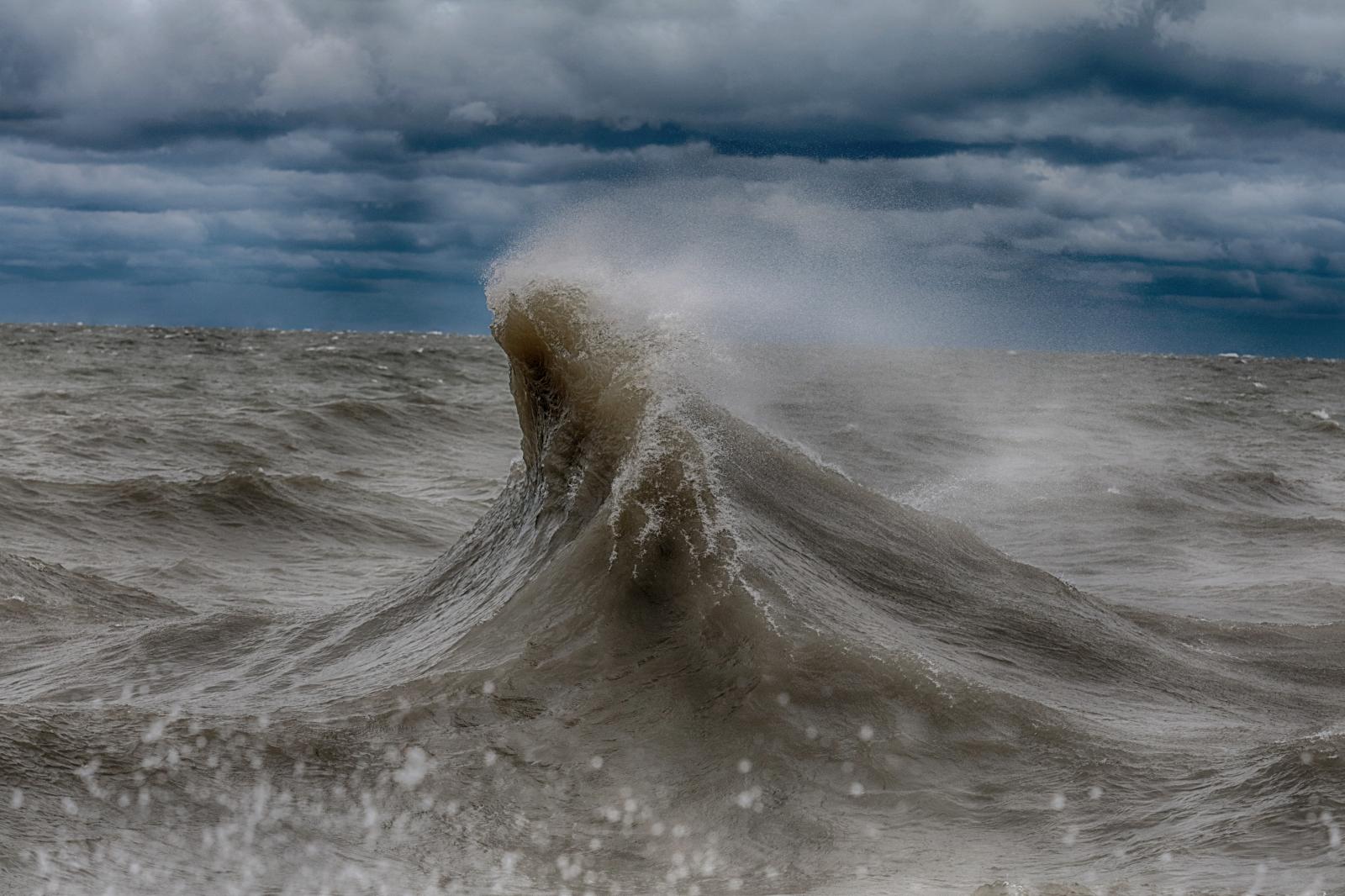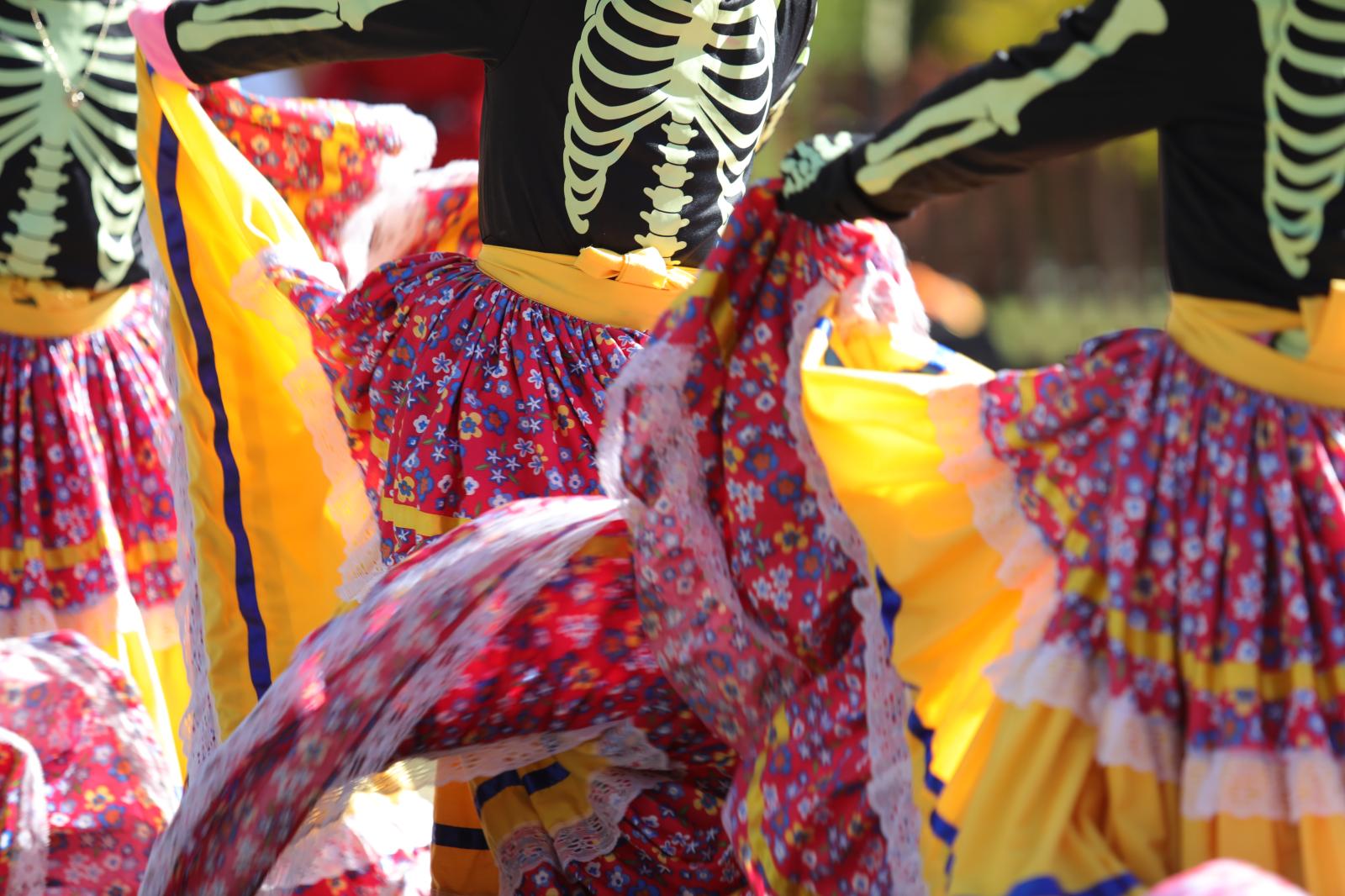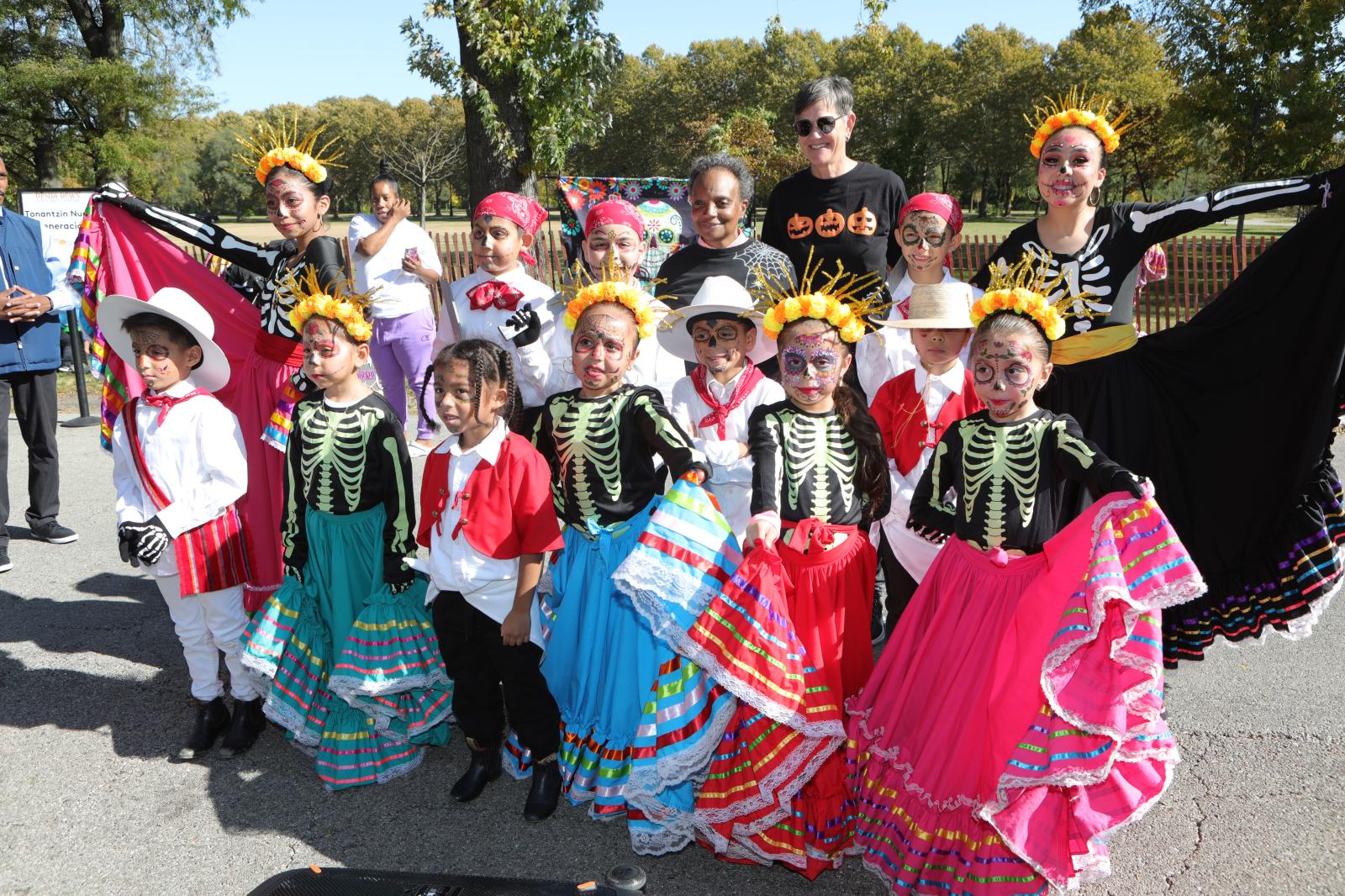No High Resolution File
Story includes:
Only verified editors can see this information.
The new California Cannabis Gold Rush
Story Date: Mar 27, 2019

Caption:
None
None
Size: h x w

Caption:
None
None
Size: h x w

Caption:
None
None
Size: h x w

Caption:
None
None
Size: 927h x 1200w

Caption:
None
None
Size: h x w

Caption:
None
None
Size: h x w

Caption:
None
None
Size: h x w

Caption:
None
None
Size: h x w

Caption:
Fort Bragg, Mendocino County ,Northern California, October 1, 2017 : Labor Day celebration in Fort Brag, in Northern California's Emerald Triangle, the largest cannabis producing region in the USA. Growers have been cultivating cannabis in Mendocino, Humbolt and Trinty counties since the 1960's. After the decline of the logging industry and commercial fishing, illegal canabis became a bigger part of the local economy. Today, the cannabis industry dwarfs all other economic activity in the counties. This is true in terms of jobs created, annual revenue, dollars per acre and dollars per gallon of water used. At the lowest estimates of total plant count, cannabis is the largest employer in the county, with at least one third more workers than government, the second largest employer. (Photo by Jean-Marc Giboux) Fort Bragg USA
Fort Bragg, Mendocino County ,Northern California, October 1, 2017 : Labor Day celebration in Fort Brag, in Northern California's Emerald Triangle, the largest cannabis producing region in the USA. Growers have been cultivating cannabis in Mendocino, Humbolt and Trinty counties since the 1960's. After the decline of the logging industry and commercial fishing, illegal canabis became a bigger part of the local economy. Today, the cannabis industry dwarfs all other economic activity in the counties. This is true in terms of jobs created, annual revenue, dollars per acre and dollars per gallon of water used. At the lowest estimates of total plant count, cannabis is the largest employer in the county, with at least one third more workers than government, the second largest employer. (Photo by Jean-Marc Giboux) Fort Bragg USA
Size: 3840h x 5760w
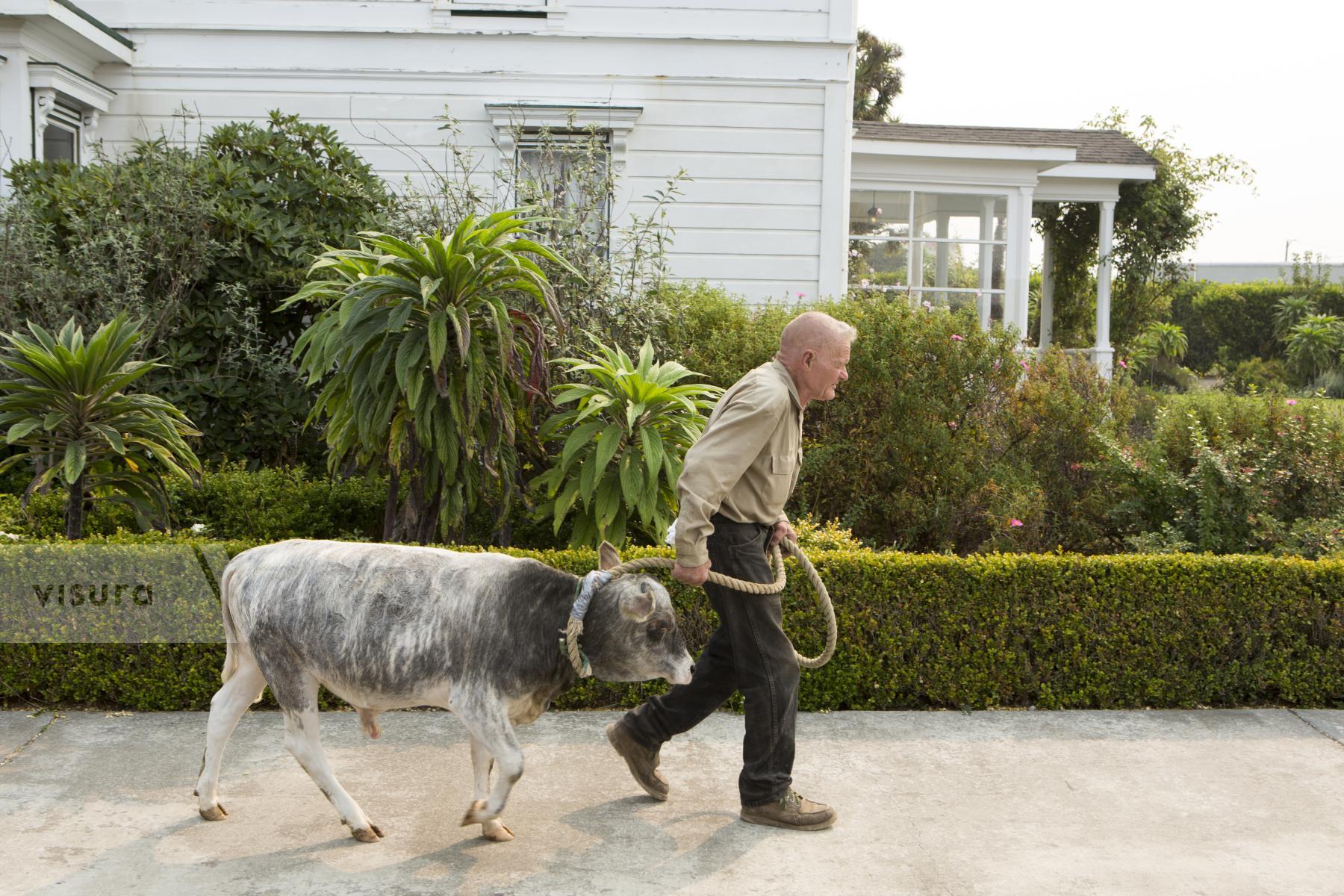
Caption:
Fort Bragg, Mendocino County ,Northern California, October 1, 2017 : Labor Day celebration in Fort Brag, in Northern California's Emerald Triangle, the largest cannabis producing region in the USA. Growers have been cultivating cannabis in Mendocino, Humbolt and Trinty counties since the 1960's. After the decline of the logging industry and commercial fishing, illegal canabis became a bigger part of the local economy. Today, the cannabis industry dwarfs all other economic activity in the counties. This is true in terms of jobs created, annual revenue, dollars per acre and dollars per gallon of water used. At the lowest estimates of total plant count, cannabis is the largest employer in the county, with at least one third more workers than government, the second largest employer. (Photo by Jean-Marc Giboux) Fort Bragg USA
Fort Bragg, Mendocino County ,Northern California, October 1, 2017 : Labor Day celebration in Fort Brag, in Northern California's Emerald Triangle, the largest cannabis producing region in the USA. Growers have been cultivating cannabis in Mendocino, Humbolt and Trinty counties since the 1960's. After the decline of the logging industry and commercial fishing, illegal canabis became a bigger part of the local economy. Today, the cannabis industry dwarfs all other economic activity in the counties. This is true in terms of jobs created, annual revenue, dollars per acre and dollars per gallon of water used. At the lowest estimates of total plant count, cannabis is the largest employer in the county, with at least one third more workers than government, the second largest employer. (Photo by Jean-Marc Giboux) Fort Bragg USA
Size: 3000h x 4500w

Caption:
Fort Bragg, Mendocino County ,Northern California, October 1, 2017 : Labor Day celebration in Fort Brag, in Northern California's Emerald Triangle, the largest cannabis producing region in the USA. Growers have been cultivating cannabis in Mendocino, Humbolt and Trinty counties since the 1960's. After the decline of the logging industry and commercial fishing, illegal canabis became a bigger part of the local economy. Today, the cannabis industry dwarfs all other economic activity in the counties. This is true in terms of jobs created, annual revenue, dollars per acre and dollars per gallon of water used. At the lowest estimates of total plant count, cannabis is the largest employer in the county, with at least one third more workers than government, the second largest employer. (Photo by Jean-Marc Giboux) Fort Bragg USA
Fort Bragg, Mendocino County ,Northern California, October 1, 2017 : Labor Day celebration in Fort Brag, in Northern California's Emerald Triangle, the largest cannabis producing region in the USA. Growers have been cultivating cannabis in Mendocino, Humbolt and Trinty counties since the 1960's. After the decline of the logging industry and commercial fishing, illegal canabis became a bigger part of the local economy. Today, the cannabis industry dwarfs all other economic activity in the counties. This is true in terms of jobs created, annual revenue, dollars per acre and dollars per gallon of water used. At the lowest estimates of total plant count, cannabis is the largest employer in the county, with at least one third more workers than government, the second largest employer. (Photo by Jean-Marc Giboux) Fort Bragg USA
Size: 3840h x 5760w

Caption:
Fort Bragg, Mendocino County ,Northern California, October 1, 2017 : Labor Day celebration in Fort Brag, in Northern California's Emerald Triangle, the largest cannabis producing region in the USA. Growers have been cultivating cannabis in Mendocino, Humbolt and Trinty counties since the 1960's. After the decline of the logging industry and commercial fishing, illegal canabis became a bigger part of the local economy. Today, the cannabis industry dwarfs all other economic activity in the counties. This is true in terms of jobs created, annual revenue, dollars per acre and dollars per gallon of water used. At the lowest estimates of total plant count, cannabis is the largest employer in the county, with at least one third more workers than government, the second largest employer. (Photo by Jean-Marc Giboux) Fort Bragg USA
Fort Bragg, Mendocino County ,Northern California, October 1, 2017 : Labor Day celebration in Fort Brag, in Northern California's Emerald Triangle, the largest cannabis producing region in the USA. Growers have been cultivating cannabis in Mendocino, Humbolt and Trinty counties since the 1960's. After the decline of the logging industry and commercial fishing, illegal canabis became a bigger part of the local economy. Today, the cannabis industry dwarfs all other economic activity in the counties. This is true in terms of jobs created, annual revenue, dollars per acre and dollars per gallon of water used. At the lowest estimates of total plant count, cannabis is the largest employer in the county, with at least one third more workers than government, the second largest employer. (Photo by Jean-Marc Giboux) Fort Bragg USA
Size: 3840h x 5760w
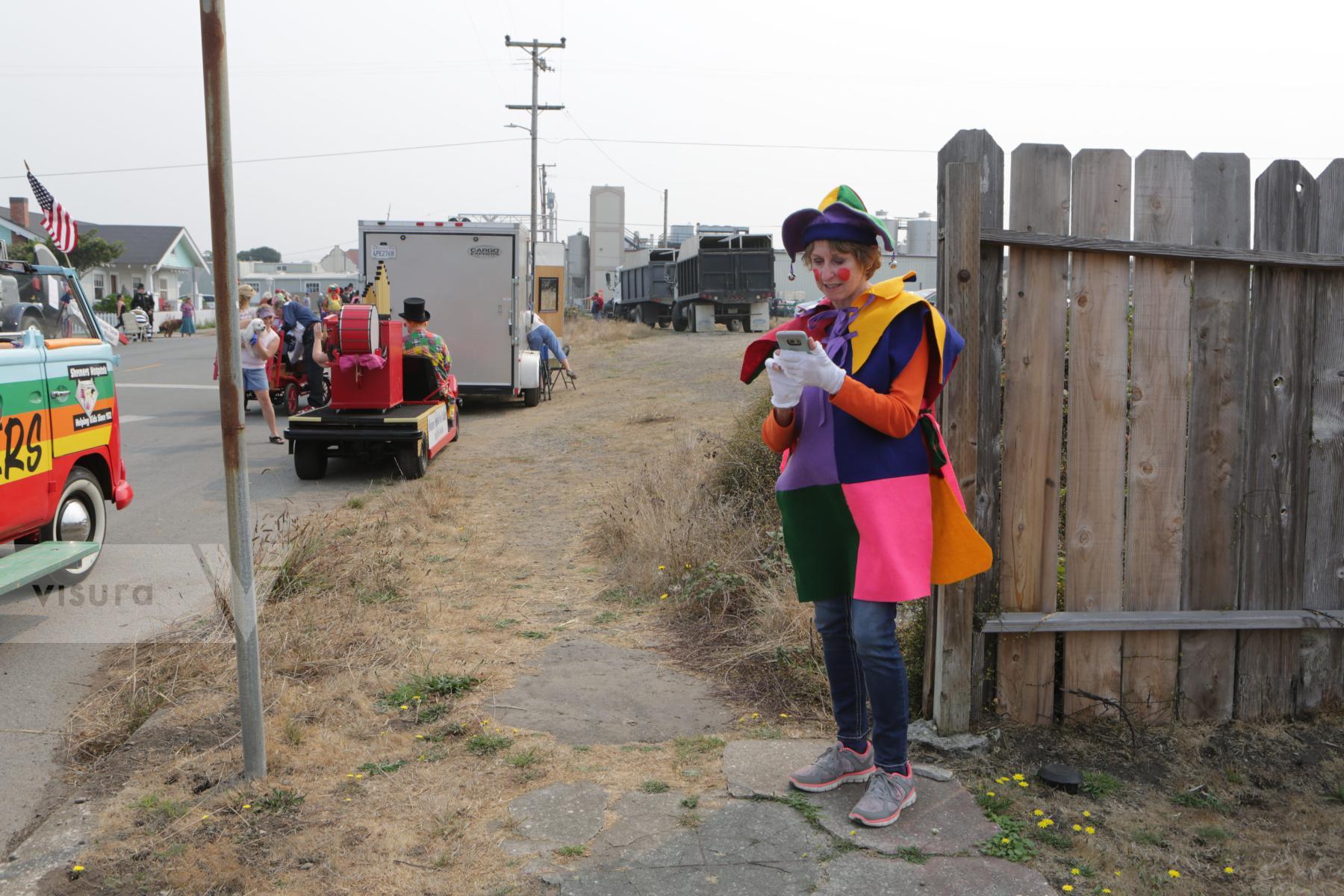
Caption:
Fort Bragg, Mendocino County ,Northern California, October 1, 2017 : Labor Day celebration in Fort Brag, in Northern California's Emerald Triangle, the largest cannabis producing region in the USA. Growers have been cultivating cannabis in Mendocino, Humbolt and Trinty counties since the 1960's. After the decline of the logging industry and commercial fishing, illegal canabis became a bigger part of the local economy. Today, the cannabis industry dwarfs all other economic activity in the counties. This is true in terms of jobs created, annual revenue, dollars per acre and dollars per gallon of water used. At the lowest estimates of total plant count, cannabis is the largest employer in the county, with at least one third more workers than government, the second largest employer. (Photo by Jean-Marc Giboux) Fort Bragg USA
Fort Bragg, Mendocino County ,Northern California, October 1, 2017 : Labor Day celebration in Fort Brag, in Northern California's Emerald Triangle, the largest cannabis producing region in the USA. Growers have been cultivating cannabis in Mendocino, Humbolt and Trinty counties since the 1960's. After the decline of the logging industry and commercial fishing, illegal canabis became a bigger part of the local economy. Today, the cannabis industry dwarfs all other economic activity in the counties. This is true in terms of jobs created, annual revenue, dollars per acre and dollars per gallon of water used. At the lowest estimates of total plant count, cannabis is the largest employer in the county, with at least one third more workers than government, the second largest employer. (Photo by Jean-Marc Giboux) Fort Bragg USA
Size: 3840h x 5760w

Caption:
Fort Bragg, Mendocino County ,Northern California, October 1, 2017 : Labor Day celebration in Fort Brag, in Northern California's Emerald Triangle, the largest cannabis producing region in the USA. Growers have been cultivating cannabis in Mendocino, Humbolt and Trinty counties since the 1960's. After the decline of the logging industry and commercial fishing, illegal canabis became a bigger part of the local economy. Today, the cannabis industry dwarfs all other economic activity in the counties. This is true in terms of jobs created, annual revenue, dollars per acre and dollars per gallon of water used. At the lowest estimates of total plant count, cannabis is the largest employer in the county, with at least one third more workers than government, the second largest employer. (Photo by Jean-Marc Giboux) Fort Bragg USA
Fort Bragg, Mendocino County ,Northern California, October 1, 2017 : Labor Day celebration in Fort Brag, in Northern California's Emerald Triangle, the largest cannabis producing region in the USA. Growers have been cultivating cannabis in Mendocino, Humbolt and Trinty counties since the 1960's. After the decline of the logging industry and commercial fishing, illegal canabis became a bigger part of the local economy. Today, the cannabis industry dwarfs all other economic activity in the counties. This is true in terms of jobs created, annual revenue, dollars per acre and dollars per gallon of water used. At the lowest estimates of total plant count, cannabis is the largest employer in the county, with at least one third more workers than government, the second largest employer. (Photo by Jean-Marc Giboux) Fort Bragg USA
Size: 3840h x 5760w
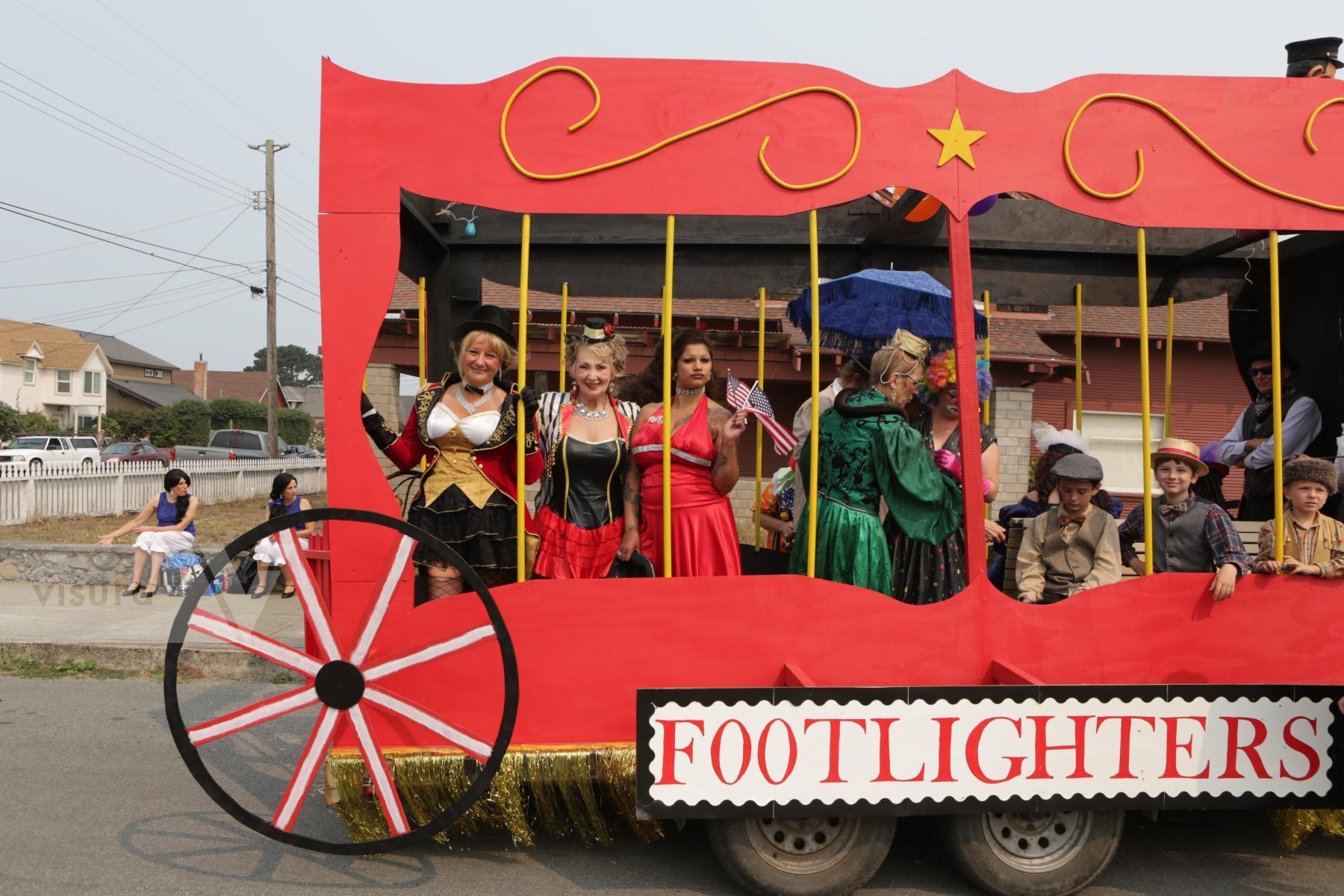
Caption:
Fort Bragg, Mendocino County ,Northern California, October 1, 2017 : in Northern California's Emerald Triangle, the largest cannabis producing region in the USA. Growers have been cultivating cannabis plants around here since the 1960's. After the decline of the logging industry and commercial fishing, illegal became a bigger part of the local economy. Then came Prop 215 ilegalizing medical cannabis in 1996. Simply put, the cannabis industry dwarfs all other economic activity in the counties. This is true in terms of jobs created, annual revenue, dollars per acre and dollars per gallon of water used. It is sign of a health economy that the number of jobs is greater than the number of employable people. Even at the lowest estimates of total plant count, cannabis is the largest employer in the county, with at least one third more workers than government, the second largest category. (Photo by Jean-Marc Giboux) Fort Bragg USA
Fort Bragg, Mendocino County ,Northern California, October 1, 2017 : in Northern California's Emerald Triangle, the largest cannabis producing region in the USA. Growers have been cultivating cannabis plants around here since the 1960's. After the decline of the logging industry and commercial fishing, illegal became a bigger part of the local economy. Then came Prop 215 ilegalizing medical cannabis in 1996. Simply put, the cannabis industry dwarfs all other economic activity in the counties. This is true in terms of jobs created, annual revenue, dollars per acre and dollars per gallon of water used. It is sign of a health economy that the number of jobs is greater than the number of employable people. Even at the lowest estimates of total plant count, cannabis is the largest employer in the county, with at least one third more workers than government, the second largest category. (Photo by Jean-Marc Giboux) Fort Bragg USA
Size: 3840h x 5760w

Caption:
Fort Bragg, Mendocino County ,Northern California, October 1, 2017 : Labor Day celebration in Fort Brag, in Northern California's Emerald Triangle, the largest cannabis producing region in the USA. Growers have been cultivating cannabis in Mendocino, Humbolt and Trinty counties since the 1960's. After the decline of the logging industry and commercial fishing, illegal canabis became a bigger part of the local economy. Today, the cannabis industry dwarfs all other economic activity in the counties. This is true in terms of jobs created, annual revenue, dollars per acre and dollars per gallon of water used. At the lowest estimates of total plant count, cannabis is the largest employer in the county, with at least one third more workers than government, the second largest employer. (Photo by Jean-Marc Giboux) Fort Bragg USA
Fort Bragg, Mendocino County ,Northern California, October 1, 2017 : Labor Day celebration in Fort Brag, in Northern California's Emerald Triangle, the largest cannabis producing region in the USA. Growers have been cultivating cannabis in Mendocino, Humbolt and Trinty counties since the 1960's. After the decline of the logging industry and commercial fishing, illegal canabis became a bigger part of the local economy. Today, the cannabis industry dwarfs all other economic activity in the counties. This is true in terms of jobs created, annual revenue, dollars per acre and dollars per gallon of water used. At the lowest estimates of total plant count, cannabis is the largest employer in the county, with at least one third more workers than government, the second largest employer. (Photo by Jean-Marc Giboux) Fort Bragg USA
Size: 3840h x 5760w

Caption:
None
None
Size: 3840h x 5760w
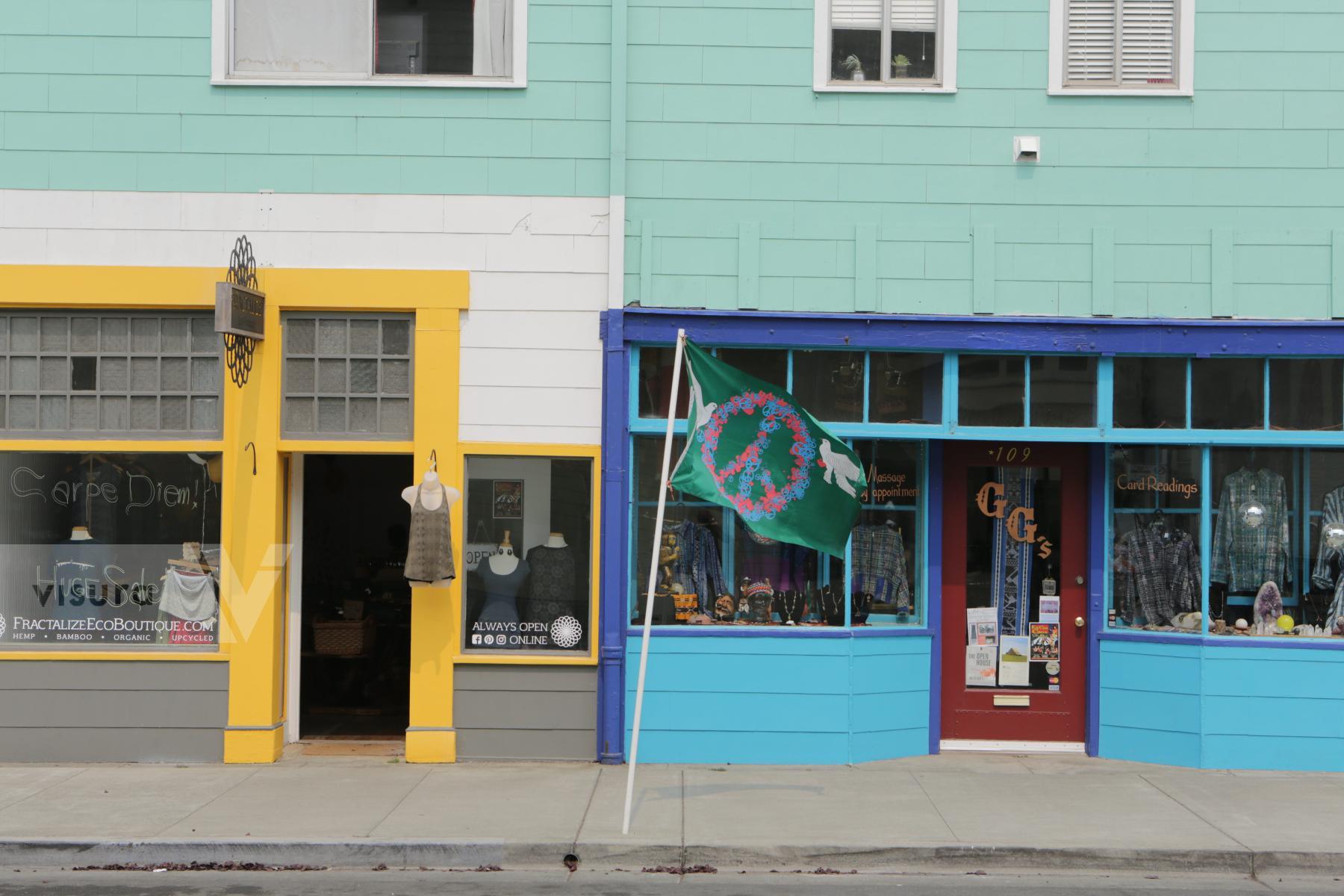
Caption:
Fort Bragg, Mendocino County ,Northern California, October 1, 2017 : Labor Day celebration in Fort Brag, in Northern California's Emerald Triangle, the largest cannabis producing region in the USA. Growers have been cultivating cannabis in Mendocino, Humbolt and Trinty counties since the 1960's. After the decline of the logging industry and commercial fishing, illegal canabis became a bigger part of the local economy. Today, the cannabis industry dwarfs all other economic activity in the counties. This is true in terms of jobs created, annual revenue, dollars per acre and dollars per gallon of water used. At the lowest estimates of total plant count, cannabis is the largest employer in the county, with at least one third more workers than government, the second largest employer. (Photo by Jean-Marc Giboux) Fort Bragg USA
Fort Bragg, Mendocino County ,Northern California, October 1, 2017 : Labor Day celebration in Fort Brag, in Northern California's Emerald Triangle, the largest cannabis producing region in the USA. Growers have been cultivating cannabis in Mendocino, Humbolt and Trinty counties since the 1960's. After the decline of the logging industry and commercial fishing, illegal canabis became a bigger part of the local economy. Today, the cannabis industry dwarfs all other economic activity in the counties. This is true in terms of jobs created, annual revenue, dollars per acre and dollars per gallon of water used. At the lowest estimates of total plant count, cannabis is the largest employer in the county, with at least one third more workers than government, the second largest employer. (Photo by Jean-Marc Giboux) Fort Bragg USA
Size: 3840h x 5760w
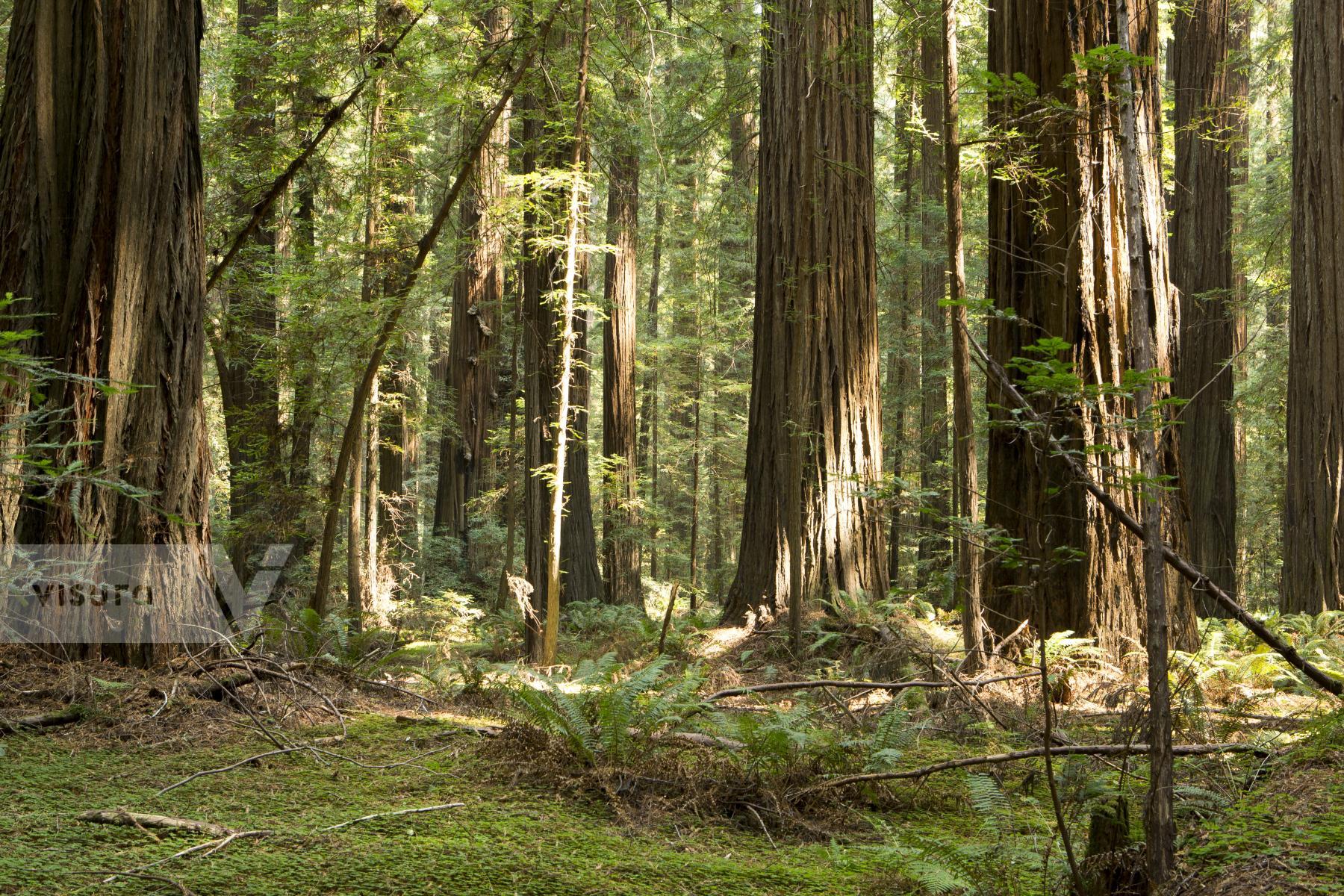
Caption:
Northern California , 50 Years after the Summer of Love San Francisco - Avenue of the Giants, State Park with many Redwood groves in Humbolt County, on September 5, 2017. (Photo by Jean-Marc Giboux ©) Growers have been cultivating cannabis in Mendocino, Humbolt and Trinty counties since the 1960's. After the decline of the logging industry and commercial fishing, illegal canabis became a bigger part of the local economy. Today, the cannabis industry dwarfs all other economic activity in the counties. This is true in terms of jobs created, annual revenue, dollars per acre and dollars per gallon of water used. At the lowest estimates of total plant count, cannabis is the largest employer in the county, with at least one third more workers than government, the second largest employer. (Photo by Jean-Marc Giboux) Fort Bragg USA
Northern California , 50 Years after the Summer of Love San Francisco - Avenue of the Giants, State Park with many Redwood groves in Humbolt County, on September 5, 2017. (Photo by Jean-Marc Giboux ©) Growers have been cultivating cannabis in Mendocino, Humbolt and Trinty counties since the 1960's. After the decline of the logging industry and commercial fishing, illegal canabis became a bigger part of the local economy. Today, the cannabis industry dwarfs all other economic activity in the counties. This is true in terms of jobs created, annual revenue, dollars per acre and dollars per gallon of water used. At the lowest estimates of total plant count, cannabis is the largest employer in the county, with at least one third more workers than government, the second largest employer. (Photo by Jean-Marc Giboux) Fort Bragg USA
Size: 3840h x 5760w
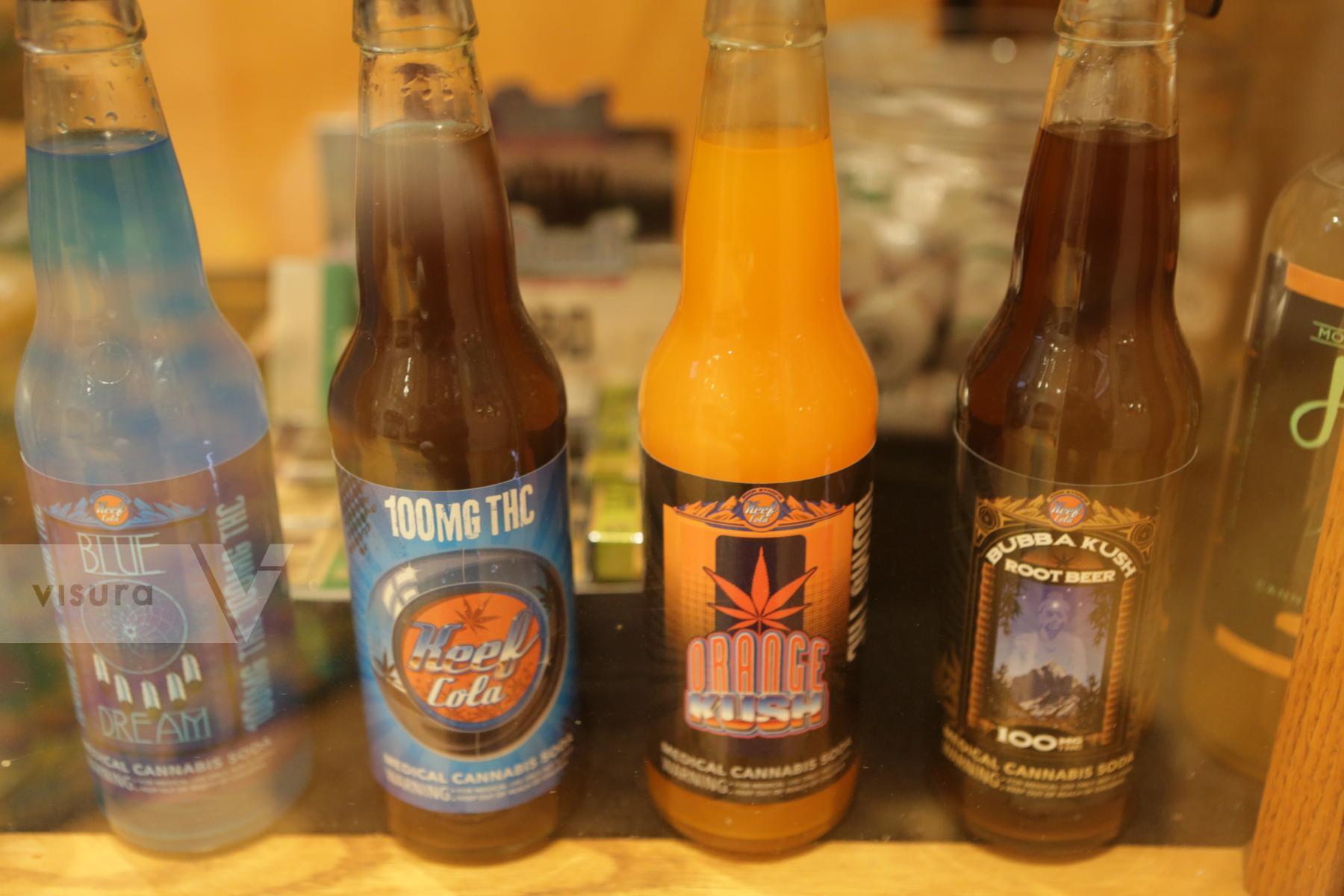
Caption:
Mendocino, Mendocino County, Northern California, September 29, 2017 : Cannabis THC soda on sale at the Love it In Cooperative dispensary in Mendocino. Carol Roselle and Mary Aigner work at the Cannabis dispensary 'Love In It Cooperative' in the town of Mendocino in Northern California : "At any given time, you’ll find over 30 varieties of cannabis at our dispensary, sourcing much of it from our two farms in the Anderson Valley region of the Emerald Triangle in Mendocino County. While we specialize in sun grown cannabis, we also carry indoor cannabis grown locally by people who share our commitment to following organic standards. All of our cannabis is hand-trimmed and tested so you can be assured of its quality, potency and purity." . Northern California's Emerald Triangle (Mendocino, Humbolt and Trinity counties) is the largest cannabis producing region in the USA. Growers have been cultivating cannabis plants around here since the 1960's. After the decline of the logging industry and commercial fishing, illegal became a bigger part of the local economy. Then came Prop 215 ilegalizing medical cannabis in 1996. Simply put, the cannabis industry dwarfs all other economic activity in the counties. This is true in terms of jobs created, annual revenue, dollars per acre and dollars per gallon of water used. It is sign of a health economy that the number of jobs is greater than the number of employable people. Even at the lowest estimates of total plant count, cannabis is the largest employer in the county, with at least one third more workers than government, the second largest category. (Photo by Jean-Marc Giboux) Mendocino USA
Mendocino, Mendocino County, Northern California, September 29, 2017 : Cannabis THC soda on sale at the Love it In Cooperative dispensary in Mendocino. Carol Roselle and Mary Aigner work at the Cannabis dispensary 'Love In It Cooperative' in the town of Mendocino in Northern California : "At any given time, you’ll find over 30 varieties of cannabis at our dispensary, sourcing much of it from our two farms in the Anderson Valley region of the Emerald Triangle in Mendocino County. While we specialize in sun grown cannabis, we also carry indoor cannabis grown locally by people who share our commitment to following organic standards. All of our cannabis is hand-trimmed and tested so you can be assured of its quality, potency and purity." . Northern California's Emerald Triangle (Mendocino, Humbolt and Trinity counties) is the largest cannabis producing region in the USA. Growers have been cultivating cannabis plants around here since the 1960's. After the decline of the logging industry and commercial fishing, illegal became a bigger part of the local economy. Then came Prop 215 ilegalizing medical cannabis in 1996. Simply put, the cannabis industry dwarfs all other economic activity in the counties. This is true in terms of jobs created, annual revenue, dollars per acre and dollars per gallon of water used. It is sign of a health economy that the number of jobs is greater than the number of employable people. Even at the lowest estimates of total plant count, cannabis is the largest employer in the county, with at least one third more workers than government, the second largest category. (Photo by Jean-Marc Giboux) Mendocino USA
Size: 3840h x 5760w

Caption:
Mendocino, Mendocino County, Northern California, September 29, 2017 : Carol Roselle and Mary Aigner work at the Cannabis dispensary 'Love In It Cooperative' in the town of Mendocino in Northern California : "At any given time, you’ll find over 30 varieties of cannabis at our dispensary, sourcing much of it from our two farms in the Anderson Valley region of the Emerald Triangle in Mendocino County. While we specialize in sun grown cannabis, we also carry indoor cannabis grown locally by people who share our commitment to following organic standards. All of our cannabis is hand-trimmed and tested so you can be assured of its quality, potency and purity." Northern California's Emerald Triangle (Mendocino, Humbolt and Trinity counties) is the largest cannabis producing region in the USA. Growers have been cultivating cannabis plants around here since the 1960's. After the decline of the logging industry and commercial fishing, illegal became a bigger part of the local economy. Then came Prop 215 ilegalizing medical cannabis in 1996. Simply put, the cannabis industry dwarfs all other economic activity in the counties. This is true in terms of jobs created, annual revenue, dollars per acre and dollars per gallon of water used. It is sign of a health economy that the number of jobs is greater than the number of employable people. Even at the lowest estimates of total plant count, cannabis is the largest employer in the county, with at least one third more workers than government, the second largest category. (Photo by Jean-Marc Giboux) Mendocino USA
Mendocino, Mendocino County, Northern California, September 29, 2017 : Carol Roselle and Mary Aigner work at the Cannabis dispensary 'Love In It Cooperative' in the town of Mendocino in Northern California : "At any given time, you’ll find over 30 varieties of cannabis at our dispensary, sourcing much of it from our two farms in the Anderson Valley region of the Emerald Triangle in Mendocino County. While we specialize in sun grown cannabis, we also carry indoor cannabis grown locally by people who share our commitment to following organic standards. All of our cannabis is hand-trimmed and tested so you can be assured of its quality, potency and purity." Northern California's Emerald Triangle (Mendocino, Humbolt and Trinity counties) is the largest cannabis producing region in the USA. Growers have been cultivating cannabis plants around here since the 1960's. After the decline of the logging industry and commercial fishing, illegal became a bigger part of the local economy. Then came Prop 215 ilegalizing medical cannabis in 1996. Simply put, the cannabis industry dwarfs all other economic activity in the counties. This is true in terms of jobs created, annual revenue, dollars per acre and dollars per gallon of water used. It is sign of a health economy that the number of jobs is greater than the number of employable people. Even at the lowest estimates of total plant count, cannabis is the largest employer in the county, with at least one third more workers than government, the second largest category. (Photo by Jean-Marc Giboux) Mendocino USA
Size: 3840h x 5760w
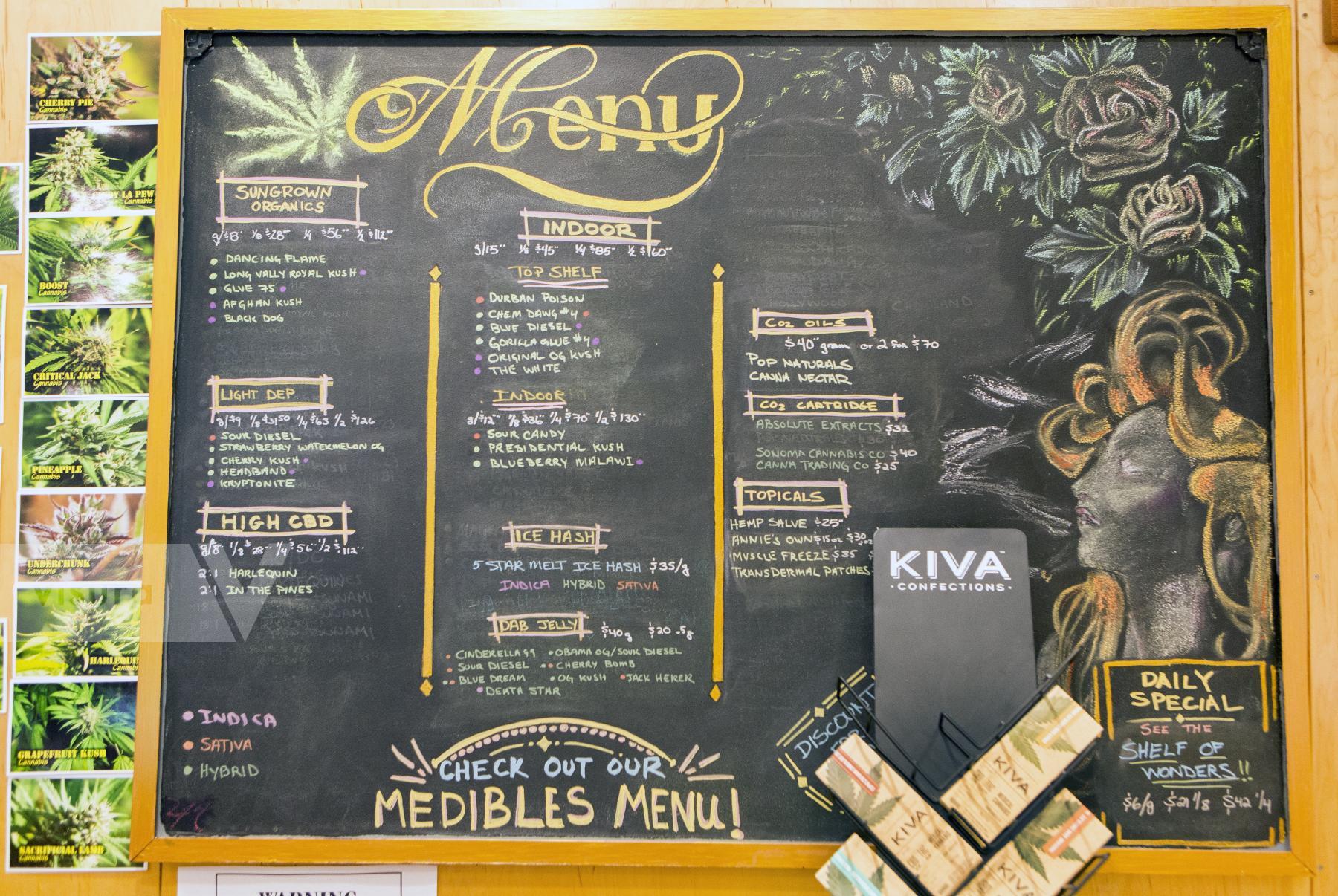
Caption:
None
None
Size: 3779h x 5640w
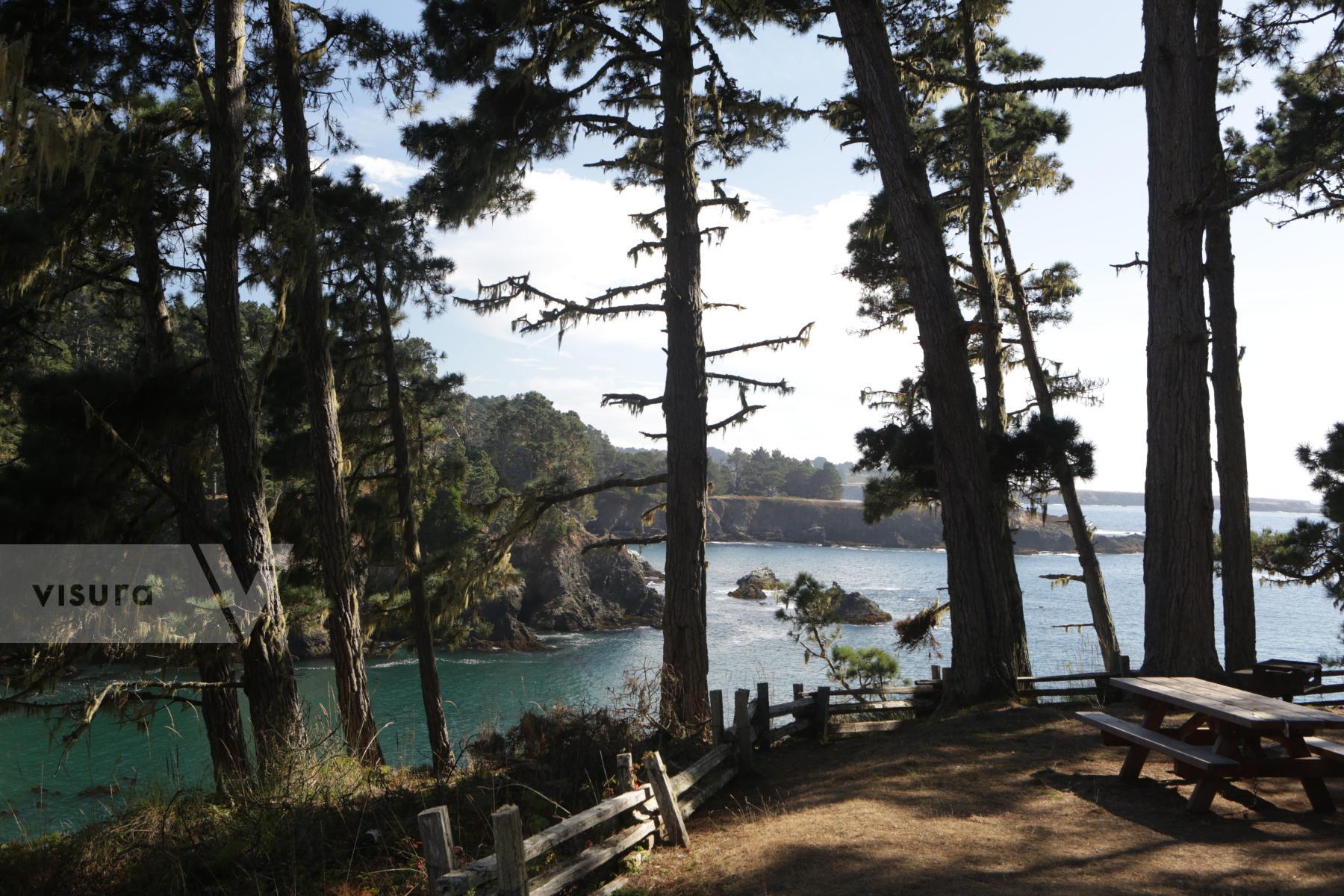
Caption:
None
None
Size: 3840h x 5760w

Caption:
Mendocino, Mendocino County, Northern California, September 30, 2017 : Sea air, California sunshine and 50 years of know-how, allow Medocino county to produce some of the best cannabis in the world. Northern California's Emerald Triangle (Mendocino, Humboldt and Trinity counties) is the largest cannabis producing region in the USA. Growers have been cultivating cannabis plants around here since the 1960's. After the decline of the logging industry and commercial fishing, illegal farming became a bigger part of the local economy. In 1996 Prop 215 legalized cannabis for medical use, and introduced testing for pesticide and potency. Cannabis growing became a science. Some growers got licenses to farm for the medical market, but most continued to sell on the black market with nearly 75% of the production shipping out of state. Today, the cannabis industry dwarfs all other economic activity in the counties of the Emerald triangle. This is true in terms of jobs created, annual revenue, dollars per acre and dollars per gallon of water used. The cannabis industry is the largest employer in the counties, but many growers will not survive the new economic model of legalized cultivation, and competition from new large industrial farms setting up downstate. (Photo by Jean-Marc Giboux) Mendocino USA
Mendocino, Mendocino County, Northern California, September 30, 2017 : Sea air, California sunshine and 50 years of know-how, allow Medocino county to produce some of the best cannabis in the world. Northern California's Emerald Triangle (Mendocino, Humboldt and Trinity counties) is the largest cannabis producing region in the USA. Growers have been cultivating cannabis plants around here since the 1960's. After the decline of the logging industry and commercial fishing, illegal farming became a bigger part of the local economy. In 1996 Prop 215 legalized cannabis for medical use, and introduced testing for pesticide and potency. Cannabis growing became a science. Some growers got licenses to farm for the medical market, but most continued to sell on the black market with nearly 75% of the production shipping out of state. Today, the cannabis industry dwarfs all other economic activity in the counties of the Emerald triangle. This is true in terms of jobs created, annual revenue, dollars per acre and dollars per gallon of water used. The cannabis industry is the largest employer in the counties, but many growers will not survive the new economic model of legalized cultivation, and competition from new large industrial farms setting up downstate. (Photo by Jean-Marc Giboux) Mendocino USA
Size: 3000h x 4500w
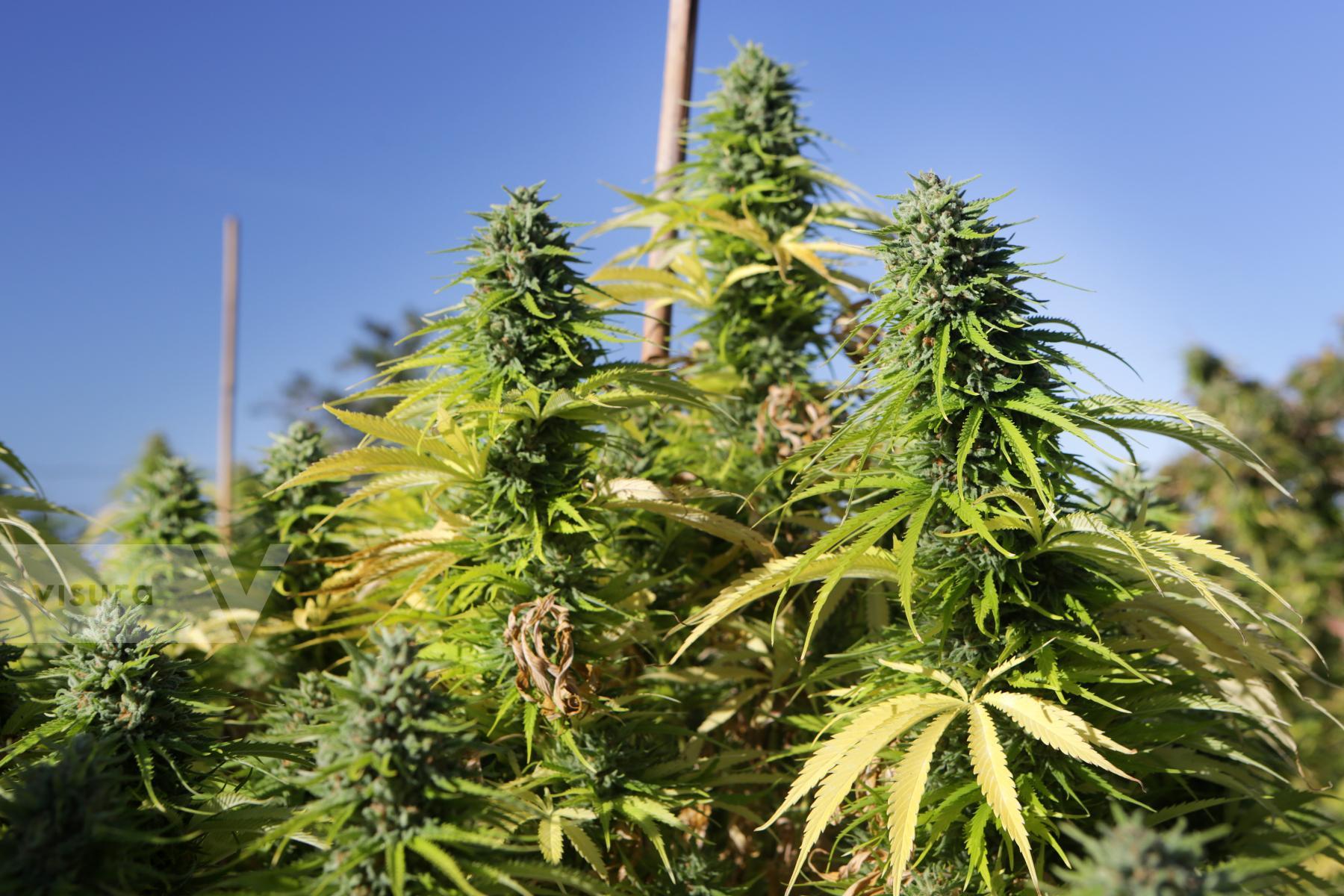
Caption:
Mendocino, Mendocino County, Northern California, September 30, 2017 : TG and his crew are harvesting Cannabis and cleaning the flowers at his farm overlooking the Pacific ocean. Sea air and California sunshine produce some of the best cannabis in the world. It is the last harvest before Cannabis legalization starts on January 2018. Northern California's Emerald Triangle (Mendocino, Humboldt and Trinity counties) is the largest cannabis producing region in the USA. Growers have been cultivating cannabis plants around here since the 1960's. After the decline of the logging industry and commercial fishing, illegal farming became a bigger part of the local economy. In 1996 Prop 215 legalized cannabis for medical use, and introduced testing for pesticide and potency. Cannabis growing became a science. Some growers got licenses to farm for the medical market, but most continued to sell on the black market with nearly 75% of the production shipping out of state. Today, the cannabis industry dwarfs all other economic activity in the counties of the Emerald triangle. This is true in terms of jobs created, annual revenue, dollars per acre and dollars per gallon of water used. The cannabis industry is the largest employer in the counties, but many growers will not survive the new economic model of legalized cultivation, and competition from new large industrial farms setting up downstate. (Photo by Jean-Marc Giboux) Mendocino USA
Mendocino, Mendocino County, Northern California, September 30, 2017 : TG and his crew are harvesting Cannabis and cleaning the flowers at his farm overlooking the Pacific ocean. Sea air and California sunshine produce some of the best cannabis in the world. It is the last harvest before Cannabis legalization starts on January 2018. Northern California's Emerald Triangle (Mendocino, Humboldt and Trinity counties) is the largest cannabis producing region in the USA. Growers have been cultivating cannabis plants around here since the 1960's. After the decline of the logging industry and commercial fishing, illegal farming became a bigger part of the local economy. In 1996 Prop 215 legalized cannabis for medical use, and introduced testing for pesticide and potency. Cannabis growing became a science. Some growers got licenses to farm for the medical market, but most continued to sell on the black market with nearly 75% of the production shipping out of state. Today, the cannabis industry dwarfs all other economic activity in the counties of the Emerald triangle. This is true in terms of jobs created, annual revenue, dollars per acre and dollars per gallon of water used. The cannabis industry is the largest employer in the counties, but many growers will not survive the new economic model of legalized cultivation, and competition from new large industrial farms setting up downstate. (Photo by Jean-Marc Giboux) Mendocino USA
Size: 3840h x 5760w
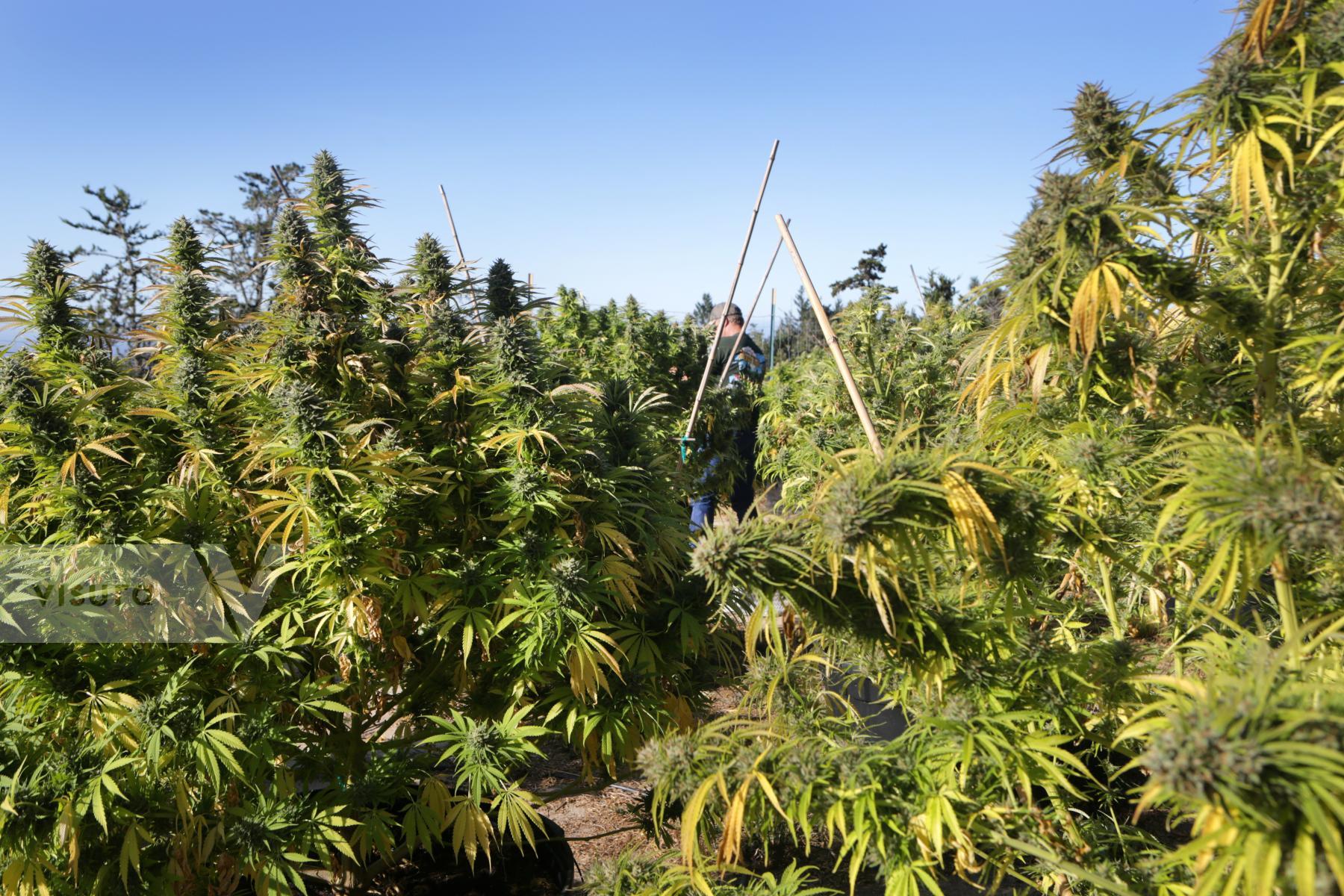
Caption:
Mendocino, Mendocino County, Northern California, September 30, 2017 : TG and his crew are harvesting Cannabis and cleaning the flowers at his farm overlooking the Pacific ocean. Sea air and California sunshine produce some of the best cannabis in the world. It is the last harvest before Cannabis legalization starts on January 2018. Northern California's Emerald Triangle (Mendocino, Humboldt and Trinity counties) is the largest cannabis producing region in the USA. Growers have been cultivating cannabis plants around here since the 1960's. After the decline of the logging industry and commercial fishing, illegal farming became a bigger part of the local economy. In 1996 Prop 215 legalized cannabis for medical use, and introduced testing for pesticide and potency. Cannabis growing became a science. Some growers got licenses to farm for the medical market, but most continued to sell on the black market with nearly 75% of the production shipping out of state. Today, the cannabis industry dwarfs all other economic activity in the counties of the Emerald triangle. This is true in terms of jobs created, annual revenue, dollars per acre and dollars per gallon of water used. The cannabis industry is the largest employer in the counties, but many growers will not survive the new economic model of legalized cultivation, and competition from new large industrial farms setting up downstate. (Photo by Jean-Marc Giboux) Mendocino USA
Mendocino, Mendocino County, Northern California, September 30, 2017 : TG and his crew are harvesting Cannabis and cleaning the flowers at his farm overlooking the Pacific ocean. Sea air and California sunshine produce some of the best cannabis in the world. It is the last harvest before Cannabis legalization starts on January 2018. Northern California's Emerald Triangle (Mendocino, Humboldt and Trinity counties) is the largest cannabis producing region in the USA. Growers have been cultivating cannabis plants around here since the 1960's. After the decline of the logging industry and commercial fishing, illegal farming became a bigger part of the local economy. In 1996 Prop 215 legalized cannabis for medical use, and introduced testing for pesticide and potency. Cannabis growing became a science. Some growers got licenses to farm for the medical market, but most continued to sell on the black market with nearly 75% of the production shipping out of state. Today, the cannabis industry dwarfs all other economic activity in the counties of the Emerald triangle. This is true in terms of jobs created, annual revenue, dollars per acre and dollars per gallon of water used. The cannabis industry is the largest employer in the counties, but many growers will not survive the new economic model of legalized cultivation, and competition from new large industrial farms setting up downstate. (Photo by Jean-Marc Giboux) Mendocino USA
Size: 3840h x 5760w

Caption:
Mendocino, Mendocino County, Northern California, September 30, 2017 : TG and his crew are harvesting Cannabis and cleaning the flowers at his farm overlooking the Pacific ocean. Sea air and California sunshine produce some of the best cannabis in the world. It is the last harvest before Cannabis legalization starts on January 2018. Northern California's Emerald Triangle (Mendocino, Humboldt and Trinity counties) is the largest cannabis producing region in the USA. Growers have been cultivating cannabis plants around here since the 1960's. After the decline of the logging industry and commercial fishing, illegal farming became a bigger part of the local economy. In 1996 Prop 215 legalized cannabis for medical use, and introduced testing for pesticide and potency. Cannabis growing became a science. Some growers got licenses to farm for the medical market, but most continued to sell on the black market with nearly 75% of the production shipping out of state. Today, the cannabis industry dwarfs all other economic activity in the counties of the Emerald triangle. This is true in terms of jobs created, annual revenue, dollars per acre and dollars per gallon of water used. The cannabis industry is the largest employer in the counties, but many growers will not survive the new economic model of legalized cultivation, and competition from new large industrial farms setting up downstate. (Photo by Jean-Marc Giboux) Mendocino USA
Mendocino, Mendocino County, Northern California, September 30, 2017 : TG and his crew are harvesting Cannabis and cleaning the flowers at his farm overlooking the Pacific ocean. Sea air and California sunshine produce some of the best cannabis in the world. It is the last harvest before Cannabis legalization starts on January 2018. Northern California's Emerald Triangle (Mendocino, Humboldt and Trinity counties) is the largest cannabis producing region in the USA. Growers have been cultivating cannabis plants around here since the 1960's. After the decline of the logging industry and commercial fishing, illegal farming became a bigger part of the local economy. In 1996 Prop 215 legalized cannabis for medical use, and introduced testing for pesticide and potency. Cannabis growing became a science. Some growers got licenses to farm for the medical market, but most continued to sell on the black market with nearly 75% of the production shipping out of state. Today, the cannabis industry dwarfs all other economic activity in the counties of the Emerald triangle. This is true in terms of jobs created, annual revenue, dollars per acre and dollars per gallon of water used. The cannabis industry is the largest employer in the counties, but many growers will not survive the new economic model of legalized cultivation, and competition from new large industrial farms setting up downstate. (Photo by Jean-Marc Giboux) Mendocino USA
Size: 3840h x 5760w
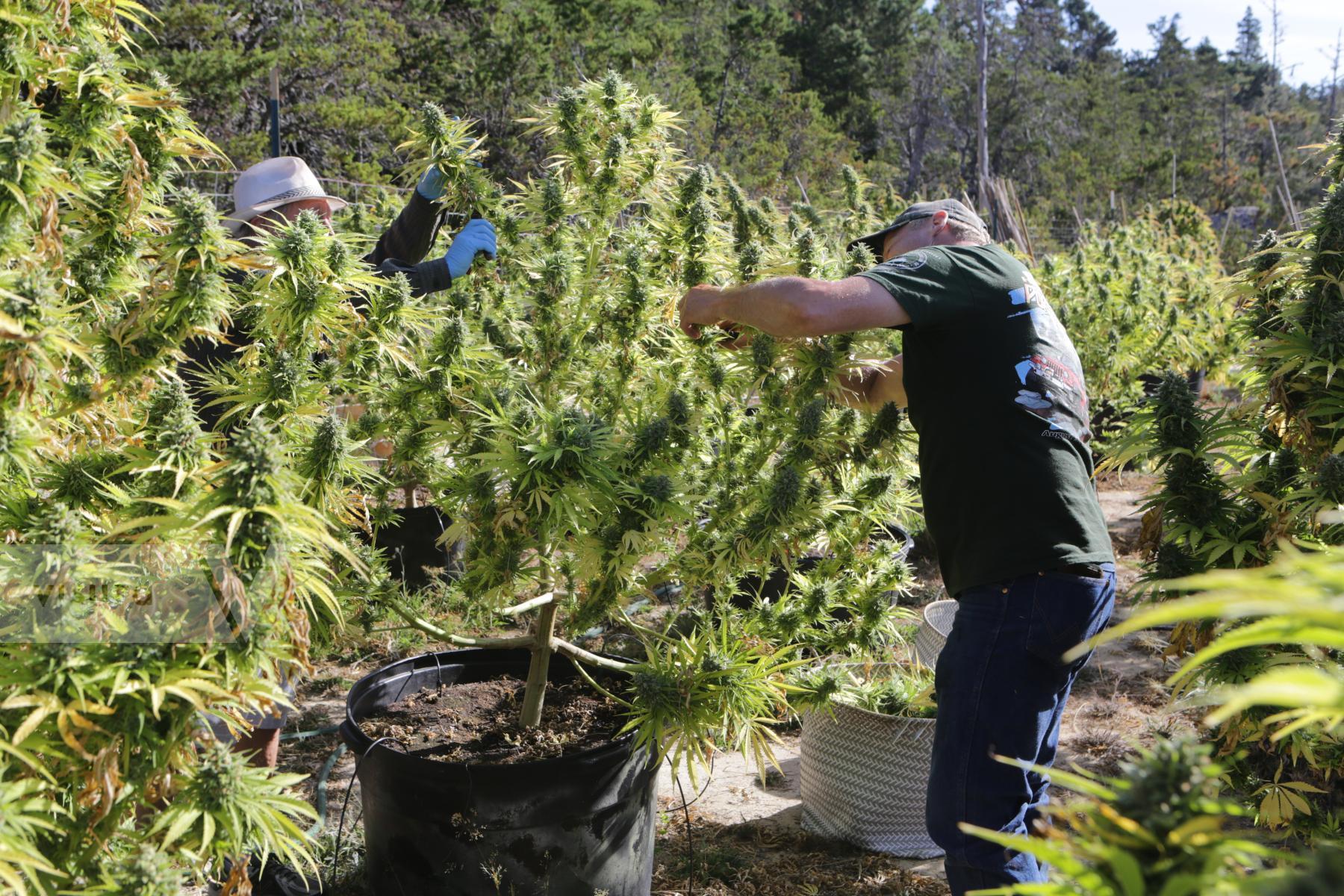
Caption:
Mendocino, Mendocino County, Northern California, September 30, 2017 : TG and his crew are harvesting Cannabis and cleaning the flowers at his farm overlooking the Pacific ocean. Sea air and California sunshine produce some of the best cannabis in the world. It is the last harvest before Cannabis legalization starts on January 2018. Northern California's Emerald Triangle (Mendocino, Humboldt and Trinity counties) is the largest cannabis producing region in the USA. Growers have been cultivating cannabis plants around here since the 1960's. After the decline of the logging industry and commercial fishing, illegal farming became a bigger part of the local economy. In 1996 Prop 215 legalized cannabis for medical use, and introduced testing for pesticide and potency. Cannabis growing became a science. Some growers got licenses to farm for the medical market, but most continued to sell on the black market with nearly 75% of the production shipping out of state. Today, the cannabis industry dwarfs all other economic activity in the counties of the Emerald triangle. This is true in terms of jobs created, annual revenue, dollars per acre and dollars per gallon of water used. The cannabis industry is the largest employer in the counties, but many growers will not survive the new economic model of legalized cultivation, and competition from new large industrial farms setting up downstate. (Photo by Jean-Marc Giboux) Mendocino USA
Mendocino, Mendocino County, Northern California, September 30, 2017 : TG and his crew are harvesting Cannabis and cleaning the flowers at his farm overlooking the Pacific ocean. Sea air and California sunshine produce some of the best cannabis in the world. It is the last harvest before Cannabis legalization starts on January 2018. Northern California's Emerald Triangle (Mendocino, Humboldt and Trinity counties) is the largest cannabis producing region in the USA. Growers have been cultivating cannabis plants around here since the 1960's. After the decline of the logging industry and commercial fishing, illegal farming became a bigger part of the local economy. In 1996 Prop 215 legalized cannabis for medical use, and introduced testing for pesticide and potency. Cannabis growing became a science. Some growers got licenses to farm for the medical market, but most continued to sell on the black market with nearly 75% of the production shipping out of state. Today, the cannabis industry dwarfs all other economic activity in the counties of the Emerald triangle. This is true in terms of jobs created, annual revenue, dollars per acre and dollars per gallon of water used. The cannabis industry is the largest employer in the counties, but many growers will not survive the new economic model of legalized cultivation, and competition from new large industrial farms setting up downstate. (Photo by Jean-Marc Giboux) Mendocino USA
Size: 3840h x 5760w

Caption:
Mendocino, Mendocino County, Northern California, September 30, 2017 : TG and his crew are harvesting Cannabis and cleaning the flowers at his farm overlooking the Pacific ocean. Sea air and California sunshine produce some of the best cannabis in the world. It is the last harvest before Cannabis legalization starts on January 2018. Northern California's Emerald Triangle (Mendocino, Humboldt and Trinity counties) is the largest cannabis producing region in the USA. Growers have been cultivating cannabis plants around here since the 1960's. After the decline of the logging industry and commercial fishing, illegal farming became a bigger part of the local economy. In 1996 Prop 215 legalized cannabis for medical use, and introduced testing for pesticide and potency. Cannabis growing became a science. Some growers got licenses to farm for the medical market, but most continued to sell on the black market with nearly 75% of the production shipping out of state. Today, the cannabis industry dwarfs all other economic activity in the counties of the Emerald triangle. This is true in terms of jobs created, annual revenue, dollars per acre and dollars per gallon of water used. The cannabis industry is the largest employer in the counties, but many growers will not survive the new economic model of legalized cultivation, and competition from new large industrial farms setting up downstate. (Photo by Jean-Marc Giboux) Mendocino USA
Mendocino, Mendocino County, Northern California, September 30, 2017 : TG and his crew are harvesting Cannabis and cleaning the flowers at his farm overlooking the Pacific ocean. Sea air and California sunshine produce some of the best cannabis in the world. It is the last harvest before Cannabis legalization starts on January 2018. Northern California's Emerald Triangle (Mendocino, Humboldt and Trinity counties) is the largest cannabis producing region in the USA. Growers have been cultivating cannabis plants around here since the 1960's. After the decline of the logging industry and commercial fishing, illegal farming became a bigger part of the local economy. In 1996 Prop 215 legalized cannabis for medical use, and introduced testing for pesticide and potency. Cannabis growing became a science. Some growers got licenses to farm for the medical market, but most continued to sell on the black market with nearly 75% of the production shipping out of state. Today, the cannabis industry dwarfs all other economic activity in the counties of the Emerald triangle. This is true in terms of jobs created, annual revenue, dollars per acre and dollars per gallon of water used. The cannabis industry is the largest employer in the counties, but many growers will not survive the new economic model of legalized cultivation, and competition from new large industrial farms setting up downstate. (Photo by Jean-Marc Giboux) Mendocino USA
Size: 3000h x 4500w

Caption:
Mendocino, Mendocino County, Northern California, September 30, 2017 : TG and his crew are harvesting Cannabis and cleaning the flowers at his farm overlooking the Pacific ocean. Sea air and California sunshine produce some of the best cannabis in the world. It is the last harvest before Cannabis legalization starts on January 2018. Northern California's Emerald Triangle (Mendocino, Humboldt and Trinity counties) is the largest cannabis producing region in the USA. Growers have been cultivating cannabis plants around here since the 1960's. After the decline of the logging industry and commercial fishing, illegal farming became a bigger part of the local economy. In 1996 Prop 215 legalized cannabis for medical use, and introduced testing for pesticide and potency. Cannabis growing became a science. Some growers got licenses to farm for the medical market, but most continued to sell on the black market with nearly 75% of the production shipping out of state. Today, the cannabis industry dwarfs all other economic activity in the counties of the Emerald triangle. This is true in terms of jobs created, annual revenue, dollars per acre and dollars per gallon of water used. The cannabis industry is the largest employer in the counties, but many growers will not survive the new economic model of legalized cultivation, and competition from new large industrial farms setting up downstate. (Photo by Jean-Marc Giboux) Mendocino USA
Mendocino, Mendocino County, Northern California, September 30, 2017 : TG and his crew are harvesting Cannabis and cleaning the flowers at his farm overlooking the Pacific ocean. Sea air and California sunshine produce some of the best cannabis in the world. It is the last harvest before Cannabis legalization starts on January 2018. Northern California's Emerald Triangle (Mendocino, Humboldt and Trinity counties) is the largest cannabis producing region in the USA. Growers have been cultivating cannabis plants around here since the 1960's. After the decline of the logging industry and commercial fishing, illegal farming became a bigger part of the local economy. In 1996 Prop 215 legalized cannabis for medical use, and introduced testing for pesticide and potency. Cannabis growing became a science. Some growers got licenses to farm for the medical market, but most continued to sell on the black market with nearly 75% of the production shipping out of state. Today, the cannabis industry dwarfs all other economic activity in the counties of the Emerald triangle. This is true in terms of jobs created, annual revenue, dollars per acre and dollars per gallon of water used. The cannabis industry is the largest employer in the counties, but many growers will not survive the new economic model of legalized cultivation, and competition from new large industrial farms setting up downstate. (Photo by Jean-Marc Giboux) Mendocino USA
Size: 3840h x 5760w

Caption:
Mendocino, Mendocino County, Northern California, September 30, 2017 : TG and his crew are harvesting Cannabis and cleaning the flowers at his farm overlooking the Pacific ocean. Sea air and California sunshine produce some of the best cannabis in the world. It is the last harvest before Cannabis legalization starts on January 2018. Northern California's Emerald Triangle (Mendocino, Humboldt and Trinity counties) is the largest cannabis producing region in the USA. Growers have been cultivating cannabis plants around here since the 1960's. After the decline of the logging industry and commercial fishing, illegal farming became a bigger part of the local economy. In 1996 Prop 215 legalized cannabis for medical use, and introduced testing for pesticide and potency. Cannabis growing became a science. Some growers got licenses to farm for the medical market, but most continued to sell on the black market with nearly 75% of the production shipping out of state. Today, the cannabis industry dwarfs all other economic activity in the counties of the Emerald triangle. This is true in terms of jobs created, annual revenue, dollars per acre and dollars per gallon of water used. The cannabis industry is the largest employer in the counties, but many growers will not survive the new economic model of legalized cultivation, and competition from new large industrial farms setting up downstate. (Photo by Jean-Marc Giboux) Mendocino USA
Mendocino, Mendocino County, Northern California, September 30, 2017 : TG and his crew are harvesting Cannabis and cleaning the flowers at his farm overlooking the Pacific ocean. Sea air and California sunshine produce some of the best cannabis in the world. It is the last harvest before Cannabis legalization starts on January 2018. Northern California's Emerald Triangle (Mendocino, Humboldt and Trinity counties) is the largest cannabis producing region in the USA. Growers have been cultivating cannabis plants around here since the 1960's. After the decline of the logging industry and commercial fishing, illegal farming became a bigger part of the local economy. In 1996 Prop 215 legalized cannabis for medical use, and introduced testing for pesticide and potency. Cannabis growing became a science. Some growers got licenses to farm for the medical market, but most continued to sell on the black market with nearly 75% of the production shipping out of state. Today, the cannabis industry dwarfs all other economic activity in the counties of the Emerald triangle. This is true in terms of jobs created, annual revenue, dollars per acre and dollars per gallon of water used. The cannabis industry is the largest employer in the counties, but many growers will not survive the new economic model of legalized cultivation, and competition from new large industrial farms setting up downstate. (Photo by Jean-Marc Giboux) Mendocino USA
Size: 5760h x 3840w
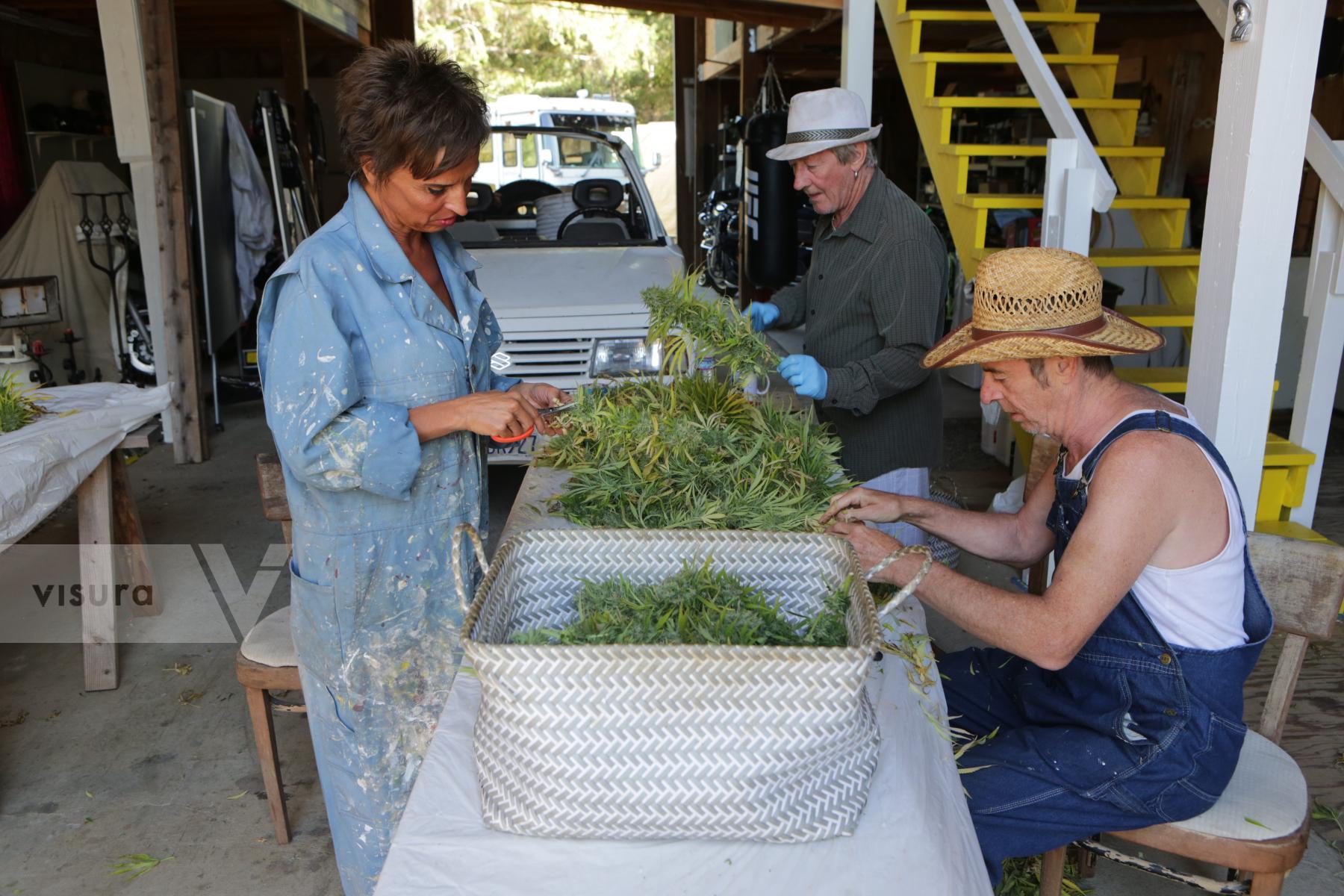
Caption:
Mendocino, Mendocino County, Northern California, September 30, 2017 : TG and his crew are harvesting Cannabis and cleaning the flowers at his farm overlooking the Pacific ocean. Sea air and California sunshine produce some of the best cannabis in the world. It is the last harvest before Cannabis legalization starts on January 2018. Northern California's Emerald Triangle (Mendocino, Humboldt and Trinity counties) is the largest cannabis producing region in the USA. Growers have been cultivating cannabis plants around here since the 1960's. After the decline of the logging industry and commercial fishing, illegal farming became a bigger part of the local economy. In 1996 Prop 215 legalized cannabis for medical use, and introduced testing for pesticide and potency. Cannabis growing became a science. Some growers got licenses to farm for the medical market, but most continued to sell on the black market with nearly 75% of the production shipping out of state. Today, the cannabis industry dwarfs all other economic activity in the counties of the Emerald triangle. This is true in terms of jobs created, annual revenue, dollars per acre and dollars per gallon of water used. The cannabis industry is the largest employer in the counties, but many growers will not survive the new economic model of legalized cultivation, and competition from new large industrial farms setting up downstate. (Photo by Jean-Marc Giboux) Mendocino USA
Mendocino, Mendocino County, Northern California, September 30, 2017 : TG and his crew are harvesting Cannabis and cleaning the flowers at his farm overlooking the Pacific ocean. Sea air and California sunshine produce some of the best cannabis in the world. It is the last harvest before Cannabis legalization starts on January 2018. Northern California's Emerald Triangle (Mendocino, Humboldt and Trinity counties) is the largest cannabis producing region in the USA. Growers have been cultivating cannabis plants around here since the 1960's. After the decline of the logging industry and commercial fishing, illegal farming became a bigger part of the local economy. In 1996 Prop 215 legalized cannabis for medical use, and introduced testing for pesticide and potency. Cannabis growing became a science. Some growers got licenses to farm for the medical market, but most continued to sell on the black market with nearly 75% of the production shipping out of state. Today, the cannabis industry dwarfs all other economic activity in the counties of the Emerald triangle. This is true in terms of jobs created, annual revenue, dollars per acre and dollars per gallon of water used. The cannabis industry is the largest employer in the counties, but many growers will not survive the new economic model of legalized cultivation, and competition from new large industrial farms setting up downstate. (Photo by Jean-Marc Giboux) Mendocino USA
Size: 3840h x 5760w
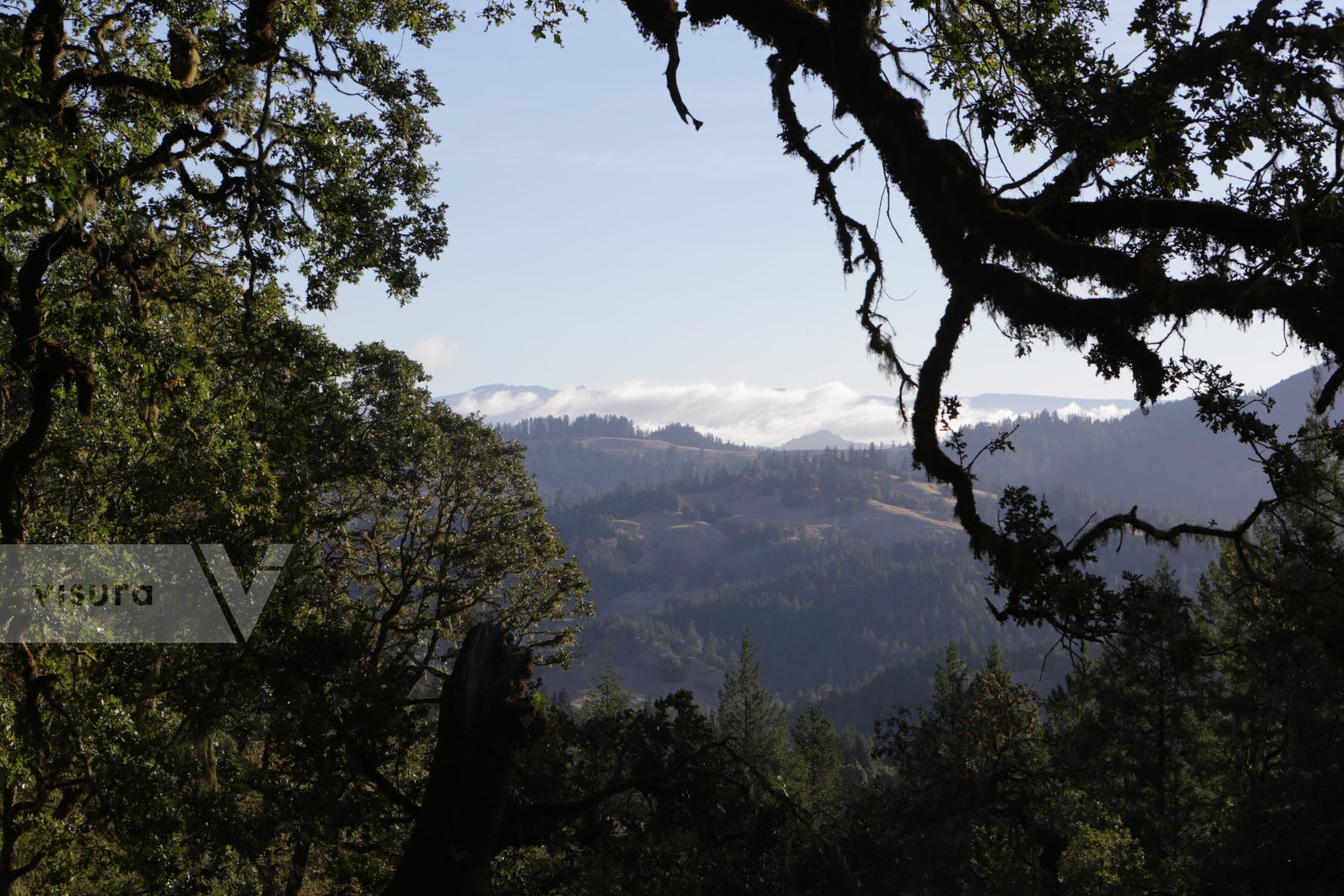
Caption:
Near Garberville,Humbolt County,Northern California, October 1, 2017 : Cannabis Harvest in the mountains around Garberville, in Northern California's Emerald Triangle, the largest cannabis producing region in the USA. Growers have been cultivating cannabis in Mendocino, Humbolt and Trinty counties since the 1960's. After the decline of the logging industry and commercial fishing, illegal canabis became a bigger part of the local economy. Today, the cannabis industry dwarfs all other economic activity in the counties. This is true in terms of jobs created, annual revenue, dollars per acre and dollars per gallon of water used. At the lowest estimates of total plant count, cannabis is the largest employer in the county, with at least one third more workers than government, the second largest employer. (Photo by Jean-Marc Giboux) Garberville USA
Near Garberville,Humbolt County,Northern California, October 1, 2017 : Cannabis Harvest in the mountains around Garberville, in Northern California's Emerald Triangle, the largest cannabis producing region in the USA. Growers have been cultivating cannabis in Mendocino, Humbolt and Trinty counties since the 1960's. After the decline of the logging industry and commercial fishing, illegal canabis became a bigger part of the local economy. Today, the cannabis industry dwarfs all other economic activity in the counties. This is true in terms of jobs created, annual revenue, dollars per acre and dollars per gallon of water used. At the lowest estimates of total plant count, cannabis is the largest employer in the county, with at least one third more workers than government, the second largest employer. (Photo by Jean-Marc Giboux) Garberville USA
Size: 3840h x 5760w

Caption:
Near Garberville,Humbolt County,Northern California, October 1, 2017 : Cannabis Harvest in the mountains around Garberville, in Northern California's Emerald Triangle, the largest cannabis producing region in the USA. Growers have been cultivating cannabis in Mendocino, Humbolt and Trinty counties since the 1960's. After the decline of the logging industry and commercial fishing, illegal canabis became a bigger part of the local economy. Today, the cannabis industry dwarfs all other economic activity in the counties. This is true in terms of jobs created, annual revenue, dollars per acre and dollars per gallon of water used. At the lowest estimates of total plant count, cannabis is the largest employer in the county, with at least one third more workers than government, the second largest employer. (Photo by Jean-Marc Giboux) Garberville USA
Near Garberville,Humbolt County,Northern California, October 1, 2017 : Cannabis Harvest in the mountains around Garberville, in Northern California's Emerald Triangle, the largest cannabis producing region in the USA. Growers have been cultivating cannabis in Mendocino, Humbolt and Trinty counties since the 1960's. After the decline of the logging industry and commercial fishing, illegal canabis became a bigger part of the local economy. Today, the cannabis industry dwarfs all other economic activity in the counties. This is true in terms of jobs created, annual revenue, dollars per acre and dollars per gallon of water used. At the lowest estimates of total plant count, cannabis is the largest employer in the county, with at least one third more workers than government, the second largest employer. (Photo by Jean-Marc Giboux) Garberville USA
Size: 3840h x 5760w

Caption:
Near Garberville,Humbolt County,Northern California, October 1, 2017 : Cannabis Harvest in the mountains around Garberville, in Northern California's Emerald Triangle, the largest cannabis producing region in the USA. Growers have been cultivating cannabis in Mendocino, Humbolt and Trinty counties since the 1960's. After the decline of the logging industry and commercial fishing, illegal canabis became a bigger part of the local economy. Today, the cannabis industry dwarfs all other economic activity in the counties. This is true in terms of jobs created, annual revenue, dollars per acre and dollars per gallon of water used. At the lowest estimates of total plant count, cannabis is the largest employer in the county, with at least one third more workers than government, the second largest employer. (Photo by Jean-Marc Giboux) Garberville USA
Near Garberville,Humbolt County,Northern California, October 1, 2017 : Cannabis Harvest in the mountains around Garberville, in Northern California's Emerald Triangle, the largest cannabis producing region in the USA. Growers have been cultivating cannabis in Mendocino, Humbolt and Trinty counties since the 1960's. After the decline of the logging industry and commercial fishing, illegal canabis became a bigger part of the local economy. Today, the cannabis industry dwarfs all other economic activity in the counties. This is true in terms of jobs created, annual revenue, dollars per acre and dollars per gallon of water used. At the lowest estimates of total plant count, cannabis is the largest employer in the county, with at least one third more workers than government, the second largest employer. (Photo by Jean-Marc Giboux) Garberville USA
Size: 3840h x 5760w
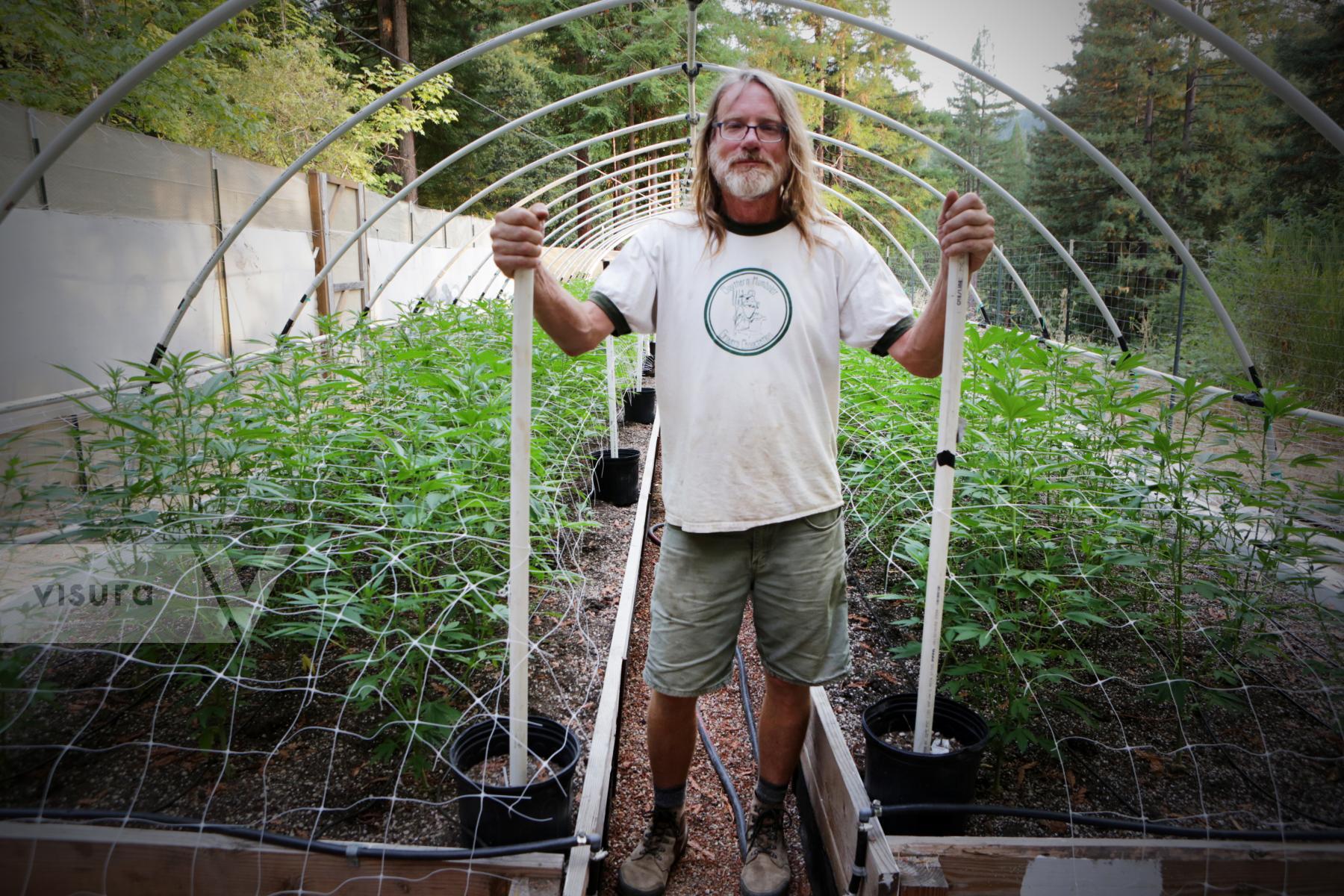
Caption:
Near Garberville,Humbolt County,Northern California, October 1, 2017 : Cannabis Harvest in the mountains around Garberville, in Northern California's Emerald Triangle, the largest cannabis producing region in the USA. Growers have been cultivating cannabis in Mendocino, Humbolt and Trinty counties since the 1960's. After the decline of the logging industry and commercial fishing, illegal canabis became a bigger part of the local economy. Today, the cannabis industry dwarfs all other economic activity in the counties. This is true in terms of jobs created, annual revenue, dollars per acre and dollars per gallon of water used. At the lowest estimates of total plant count, cannabis is the largest employer in the county, with at least one third more workers than government, the second largest employer. (Photo by Jean-Marc Giboux) Garberville USA
Near Garberville,Humbolt County,Northern California, October 1, 2017 : Cannabis Harvest in the mountains around Garberville, in Northern California's Emerald Triangle, the largest cannabis producing region in the USA. Growers have been cultivating cannabis in Mendocino, Humbolt and Trinty counties since the 1960's. After the decline of the logging industry and commercial fishing, illegal canabis became a bigger part of the local economy. Today, the cannabis industry dwarfs all other economic activity in the counties. This is true in terms of jobs created, annual revenue, dollars per acre and dollars per gallon of water used. At the lowest estimates of total plant count, cannabis is the largest employer in the county, with at least one third more workers than government, the second largest employer. (Photo by Jean-Marc Giboux) Garberville USA
Size: 2560h x 3840w
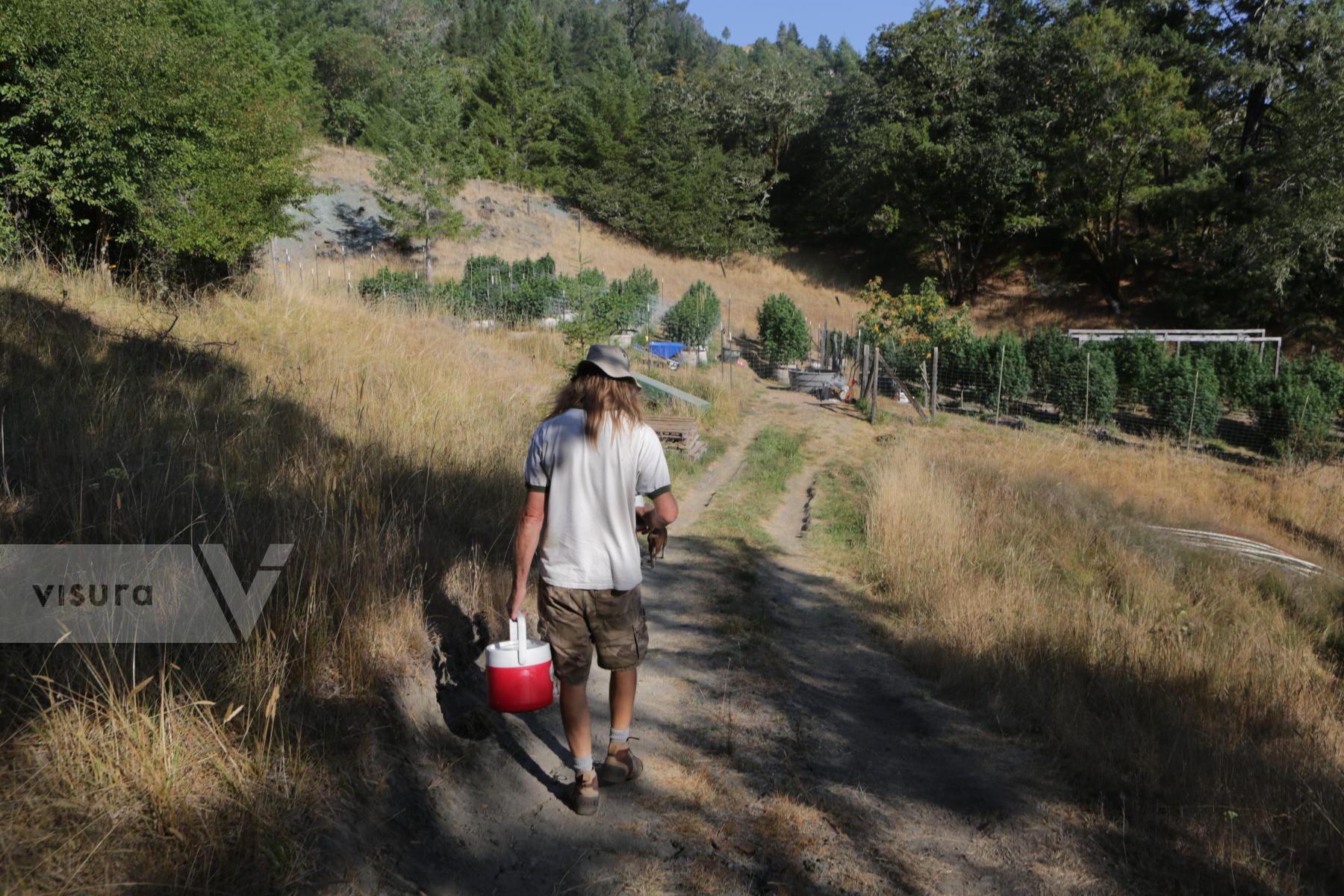
Caption:
Near Garberville,Humbolt County,Northern California, October 1, 2017 : Cannabis Harvest in the mountains around Garberville, in Northern California's Emerald Triangle, the largest cannabis producing region in the USA. Growers have been cultivating cannabis in Mendocino, Humbolt and Trinty counties since the 1960's. After the decline of the logging industry and commercial fishing, illegal canabis became a bigger part of the local economy. Today, the cannabis industry dwarfs all other economic activity in the counties. This is true in terms of jobs created, annual revenue, dollars per acre and dollars per gallon of water used. At the lowest estimates of total plant count, cannabis is the largest employer in the county, with at least one third more workers than government, the second largest employer. (Photo by Jean-Marc Giboux) Garberville USA
Near Garberville,Humbolt County,Northern California, October 1, 2017 : Cannabis Harvest in the mountains around Garberville, in Northern California's Emerald Triangle, the largest cannabis producing region in the USA. Growers have been cultivating cannabis in Mendocino, Humbolt and Trinty counties since the 1960's. After the decline of the logging industry and commercial fishing, illegal canabis became a bigger part of the local economy. Today, the cannabis industry dwarfs all other economic activity in the counties. This is true in terms of jobs created, annual revenue, dollars per acre and dollars per gallon of water used. At the lowest estimates of total plant count, cannabis is the largest employer in the county, with at least one third more workers than government, the second largest employer. (Photo by Jean-Marc Giboux) Garberville USA
Size: 3840h x 5760w
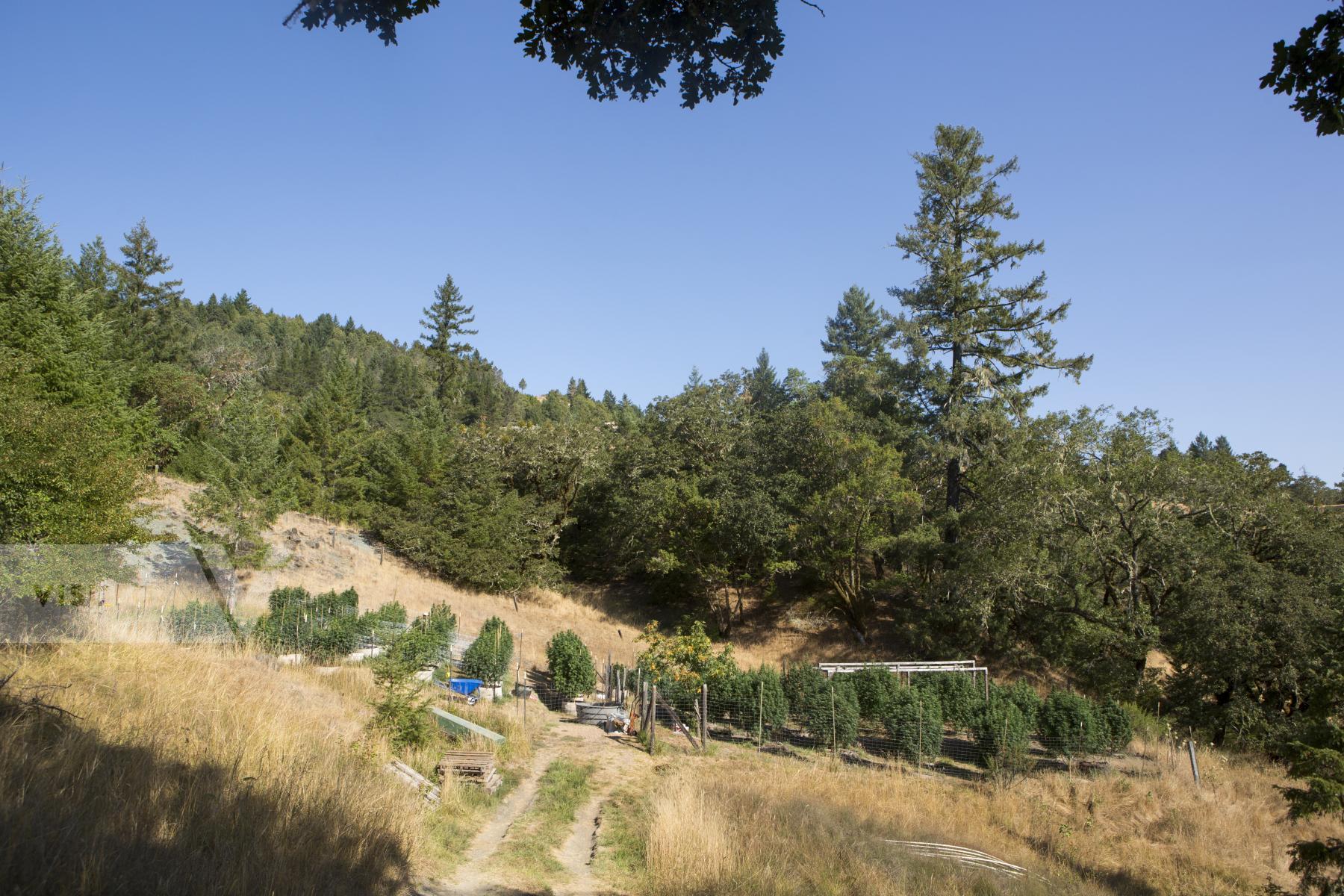
Caption:
Near Garberville,Humbolt County,Northern California, October 1, 2017 : Cannabis Harvest in the mountains around Garberville, in Northern California's Emerald Triangle, the largest cannabis producing region in the USA. Growers have been cultivating cannabis in Mendocino, Humbolt and Trinty counties since the 1960's. After the decline of the logging industry and commercial fishing, illegal canabis became a bigger part of the local economy. Today, the cannabis industry dwarfs all other economic activity in the counties. This is true in terms of jobs created, annual revenue, dollars per acre and dollars per gallon of water used. At the lowest estimates of total plant count, cannabis is the largest employer in the county, with at least one third more workers than government, the second largest employer. (Photo by Jean-Marc Giboux) Garberville USA
Near Garberville,Humbolt County,Northern California, October 1, 2017 : Cannabis Harvest in the mountains around Garberville, in Northern California's Emerald Triangle, the largest cannabis producing region in the USA. Growers have been cultivating cannabis in Mendocino, Humbolt and Trinty counties since the 1960's. After the decline of the logging industry and commercial fishing, illegal canabis became a bigger part of the local economy. Today, the cannabis industry dwarfs all other economic activity in the counties. This is true in terms of jobs created, annual revenue, dollars per acre and dollars per gallon of water used. At the lowest estimates of total plant count, cannabis is the largest employer in the county, with at least one third more workers than government, the second largest employer. (Photo by Jean-Marc Giboux) Garberville USA
Size: 3840h x 5760w
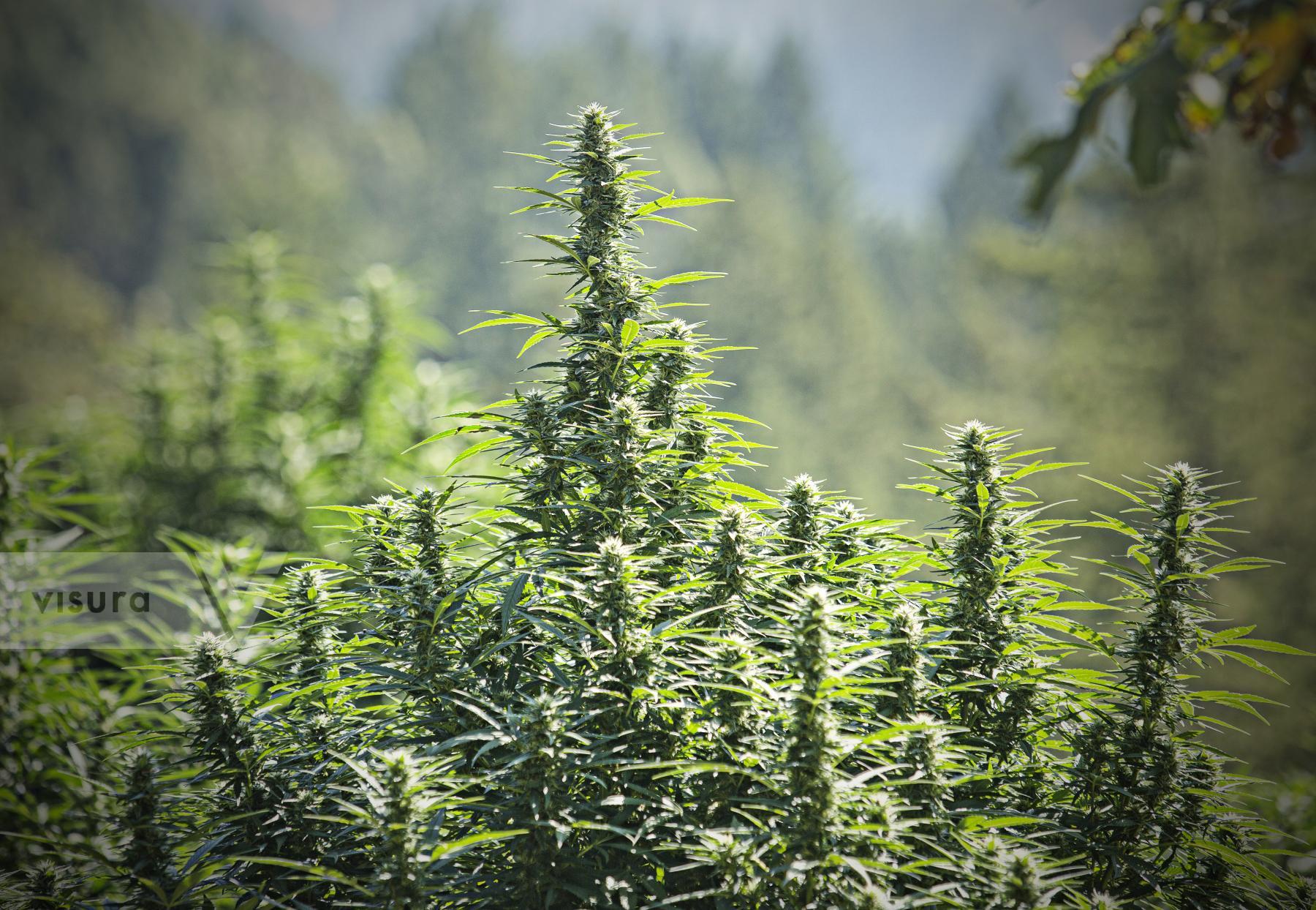
Caption:
Near Garberville,Humbolt County,Northern California, October 1, 2017 : Cannabis Harvest in the mountains around Garberville, in Northern California's Emerald Triangle, the largest cannabis producing region in the USA. Growers have been cultivating cannabis in Mendocino, Humbolt and Trinty counties since the 1960's. After the decline of the logging industry and commercial fishing, illegal canabis became a bigger part of the local economy. Today, the cannabis industry dwarfs all other economic activity in the counties. This is true in terms of jobs created, annual revenue, dollars per acre and dollars per gallon of water used. At the lowest estimates of total plant count, cannabis is the largest employer in the county, with at least one third more workers than government, the second largest employer. (Photo by Jean-Marc Giboux) Garberville USA
Near Garberville,Humbolt County,Northern California, October 1, 2017 : Cannabis Harvest in the mountains around Garberville, in Northern California's Emerald Triangle, the largest cannabis producing region in the USA. Growers have been cultivating cannabis in Mendocino, Humbolt and Trinty counties since the 1960's. After the decline of the logging industry and commercial fishing, illegal canabis became a bigger part of the local economy. Today, the cannabis industry dwarfs all other economic activity in the counties. This is true in terms of jobs created, annual revenue, dollars per acre and dollars per gallon of water used. At the lowest estimates of total plant count, cannabis is the largest employer in the county, with at least one third more workers than government, the second largest employer. (Photo by Jean-Marc Giboux) Garberville USA
Size: 3534h x 5111w

Caption:
Near Garberville,Humbolt County,Northern California, October 1, 2017 : Cannabis Harvest in the mountains around Garberville, in Northern California's Emerald Triangle, the largest cannabis producing region in the USA. Growers have been cultivating cannabis in Mendocino, Humbolt and Trinty counties since the 1960's. After the decline of the logging industry and commercial fishing, illegal canabis became a bigger part of the local economy. Today, the cannabis industry dwarfs all other economic activity in the counties. This is true in terms of jobs created, annual revenue, dollars per acre and dollars per gallon of water used. At the lowest estimates of total plant count, cannabis is the largest employer in the county, with at least one third more workers than government, the second largest employer. (Photo by Jean-Marc Giboux) Garberville USA
Near Garberville,Humbolt County,Northern California, October 1, 2017 : Cannabis Harvest in the mountains around Garberville, in Northern California's Emerald Triangle, the largest cannabis producing region in the USA. Growers have been cultivating cannabis in Mendocino, Humbolt and Trinty counties since the 1960's. After the decline of the logging industry and commercial fishing, illegal canabis became a bigger part of the local economy. Today, the cannabis industry dwarfs all other economic activity in the counties. This is true in terms of jobs created, annual revenue, dollars per acre and dollars per gallon of water used. At the lowest estimates of total plant count, cannabis is the largest employer in the county, with at least one third more workers than government, the second largest employer. (Photo by Jean-Marc Giboux) Garberville USA
Size: 3840h x 5760w
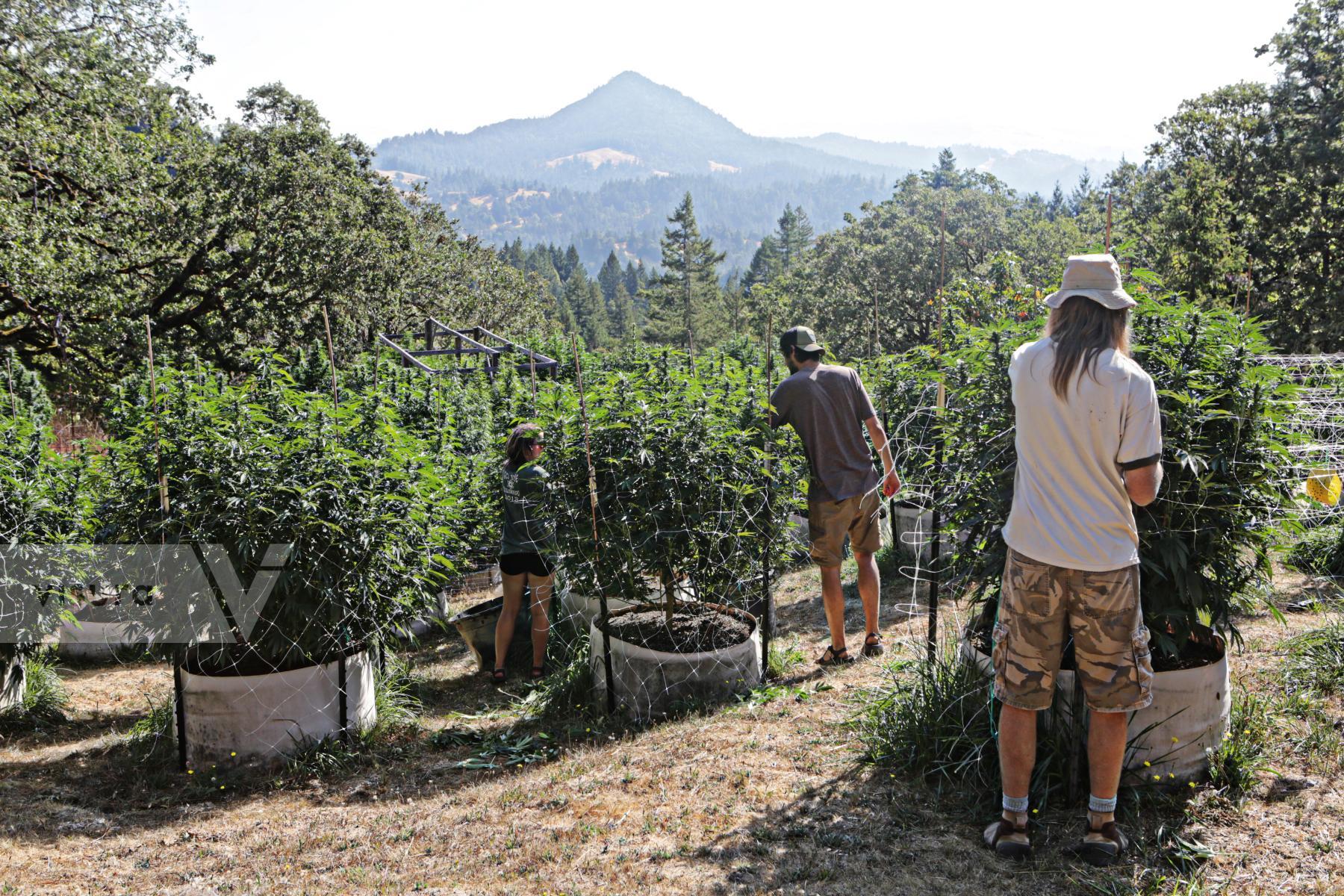
Caption:
Near Garberville,Humbolt County,Northern California, October 1, 2017 : Cannabis Harvest in the mountains around Garberville, in Northern California's Emerald Triangle, the largest cannabis producing region in the USA. Growers have been cultivating cannabis in Mendocino, Humbolt and Trinty counties since the 1960's. After the decline of the logging industry and commercial fishing, illegal canabis became a bigger part of the local economy. Today, the cannabis industry dwarfs all other economic activity in the counties. This is true in terms of jobs created, annual revenue, dollars per acre and dollars per gallon of water used. At the lowest estimates of total plant count, cannabis is the largest employer in the county, with at least one third more workers than government, the second largest employer. (Photo by Jean-Marc Giboux) Garberville USA
Near Garberville,Humbolt County,Northern California, October 1, 2017 : Cannabis Harvest in the mountains around Garberville, in Northern California's Emerald Triangle, the largest cannabis producing region in the USA. Growers have been cultivating cannabis in Mendocino, Humbolt and Trinty counties since the 1960's. After the decline of the logging industry and commercial fishing, illegal canabis became a bigger part of the local economy. Today, the cannabis industry dwarfs all other economic activity in the counties. This is true in terms of jobs created, annual revenue, dollars per acre and dollars per gallon of water used. At the lowest estimates of total plant count, cannabis is the largest employer in the county, with at least one third more workers than government, the second largest employer. (Photo by Jean-Marc Giboux) Garberville USA
Size: 2560h x 3840w

Caption:
Near Garberville,Humbolt County,Northern California, October 1, 2017 : Cannabis Harvest in the mountains around Garberville, in Northern California's Emerald Triangle, the largest cannabis producing region in the USA. Growers have been cultivating cannabis in Mendocino, Humbolt and Trinty counties since the 1960's. After the decline of the logging industry and commercial fishing, illegal canabis became a bigger part of the local economy. Today, the cannabis industry dwarfs all other economic activity in the counties. This is true in terms of jobs created, annual revenue, dollars per acre and dollars per gallon of water used. At the lowest estimates of total plant count, cannabis is the largest employer in the county, with at least one third more workers than government, the second largest employer. (Photo by Jean-Marc Giboux) Garberville USA
Near Garberville,Humbolt County,Northern California, October 1, 2017 : Cannabis Harvest in the mountains around Garberville, in Northern California's Emerald Triangle, the largest cannabis producing region in the USA. Growers have been cultivating cannabis in Mendocino, Humbolt and Trinty counties since the 1960's. After the decline of the logging industry and commercial fishing, illegal canabis became a bigger part of the local economy. Today, the cannabis industry dwarfs all other economic activity in the counties. This is true in terms of jobs created, annual revenue, dollars per acre and dollars per gallon of water used. At the lowest estimates of total plant count, cannabis is the largest employer in the county, with at least one third more workers than government, the second largest employer. (Photo by Jean-Marc Giboux) Garberville USA
Size: 3840h x 5760w
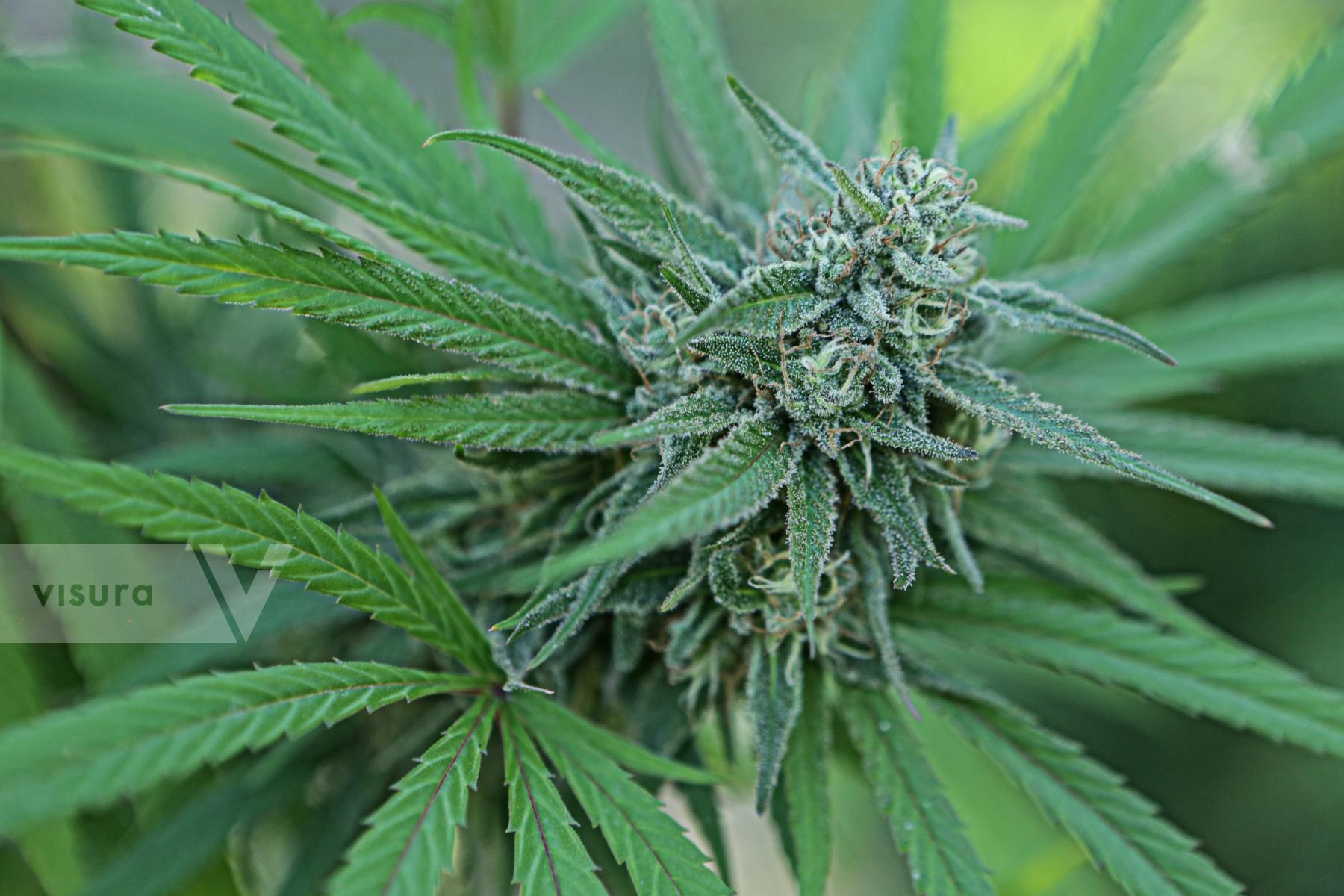
Caption:
Near Garberville,Humbolt County,Northern California, October 1, 2017 : Cannabis Harvest in the mountains around Garberville, in Northern California's Emerald Triangle, the largest cannabis producing region in the USA. Growers have been cultivating cannabis in Mendocino, Humbolt and Trinty counties since the 1960's. After the decline of the logging industry and commercial fishing, illegal canabis became a bigger part of the local economy. Today, the cannabis industry dwarfs all other economic activity in the counties. This is true in terms of jobs created, annual revenue, dollars per acre and dollars per gallon of water used. At the lowest estimates of total plant count, cannabis is the largest employer in the county, with at least one third more workers than government, the second largest employer. (Photo by Jean-Marc Giboux) Garberville USA
Near Garberville,Humbolt County,Northern California, October 1, 2017 : Cannabis Harvest in the mountains around Garberville, in Northern California's Emerald Triangle, the largest cannabis producing region in the USA. Growers have been cultivating cannabis in Mendocino, Humbolt and Trinty counties since the 1960's. After the decline of the logging industry and commercial fishing, illegal canabis became a bigger part of the local economy. Today, the cannabis industry dwarfs all other economic activity in the counties. This is true in terms of jobs created, annual revenue, dollars per acre and dollars per gallon of water used. At the lowest estimates of total plant count, cannabis is the largest employer in the county, with at least one third more workers than government, the second largest employer. (Photo by Jean-Marc Giboux) Garberville USA
Size: 3840h x 5760w
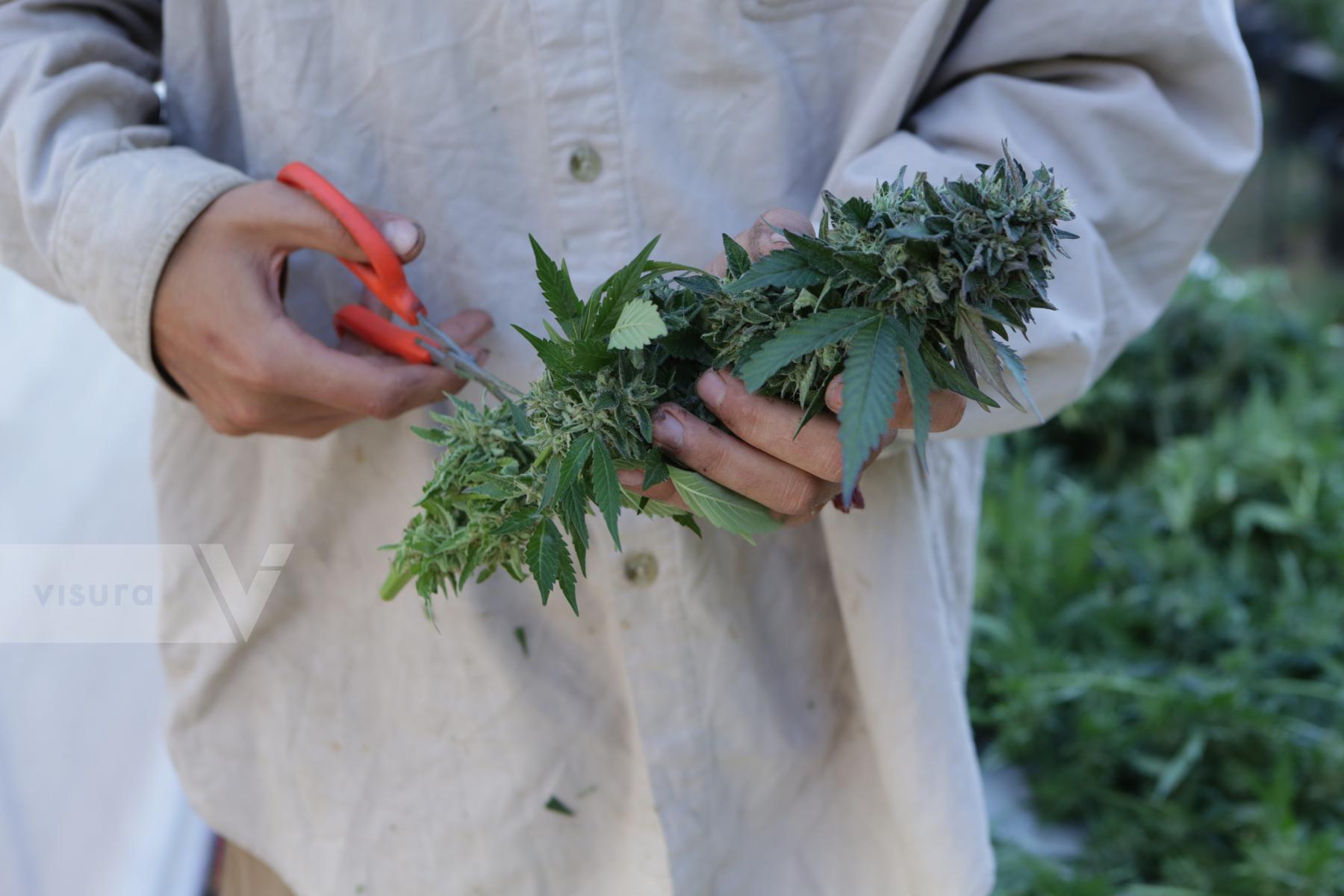
Caption:
Near Garberville,Humbolt County,Northern California, October 1, 2017 : Cannabis Harvest in the mountains around Garberville, in Northern California's Emerald Triangle, the largest cannabis producing region in the USA. Growers have been cultivating cannabis in Mendocino, Humbolt and Trinty counties since the 1960's. After the decline of the logging industry and commercial fishing, illegal canabis became a bigger part of the local economy. Today, the cannabis industry dwarfs all other economic activity in the counties. This is true in terms of jobs created, annual revenue, dollars per acre and dollars per gallon of water used. At the lowest estimates of total plant count, cannabis is the largest employer in the county, with at least one third more workers than government, the second largest employer. (Photo by Jean-Marc Giboux) Garberville USA
Near Garberville,Humbolt County,Northern California, October 1, 2017 : Cannabis Harvest in the mountains around Garberville, in Northern California's Emerald Triangle, the largest cannabis producing region in the USA. Growers have been cultivating cannabis in Mendocino, Humbolt and Trinty counties since the 1960's. After the decline of the logging industry and commercial fishing, illegal canabis became a bigger part of the local economy. Today, the cannabis industry dwarfs all other economic activity in the counties. This is true in terms of jobs created, annual revenue, dollars per acre and dollars per gallon of water used. At the lowest estimates of total plant count, cannabis is the largest employer in the county, with at least one third more workers than government, the second largest employer. (Photo by Jean-Marc Giboux) Garberville USA
Size: 3840h x 5760w
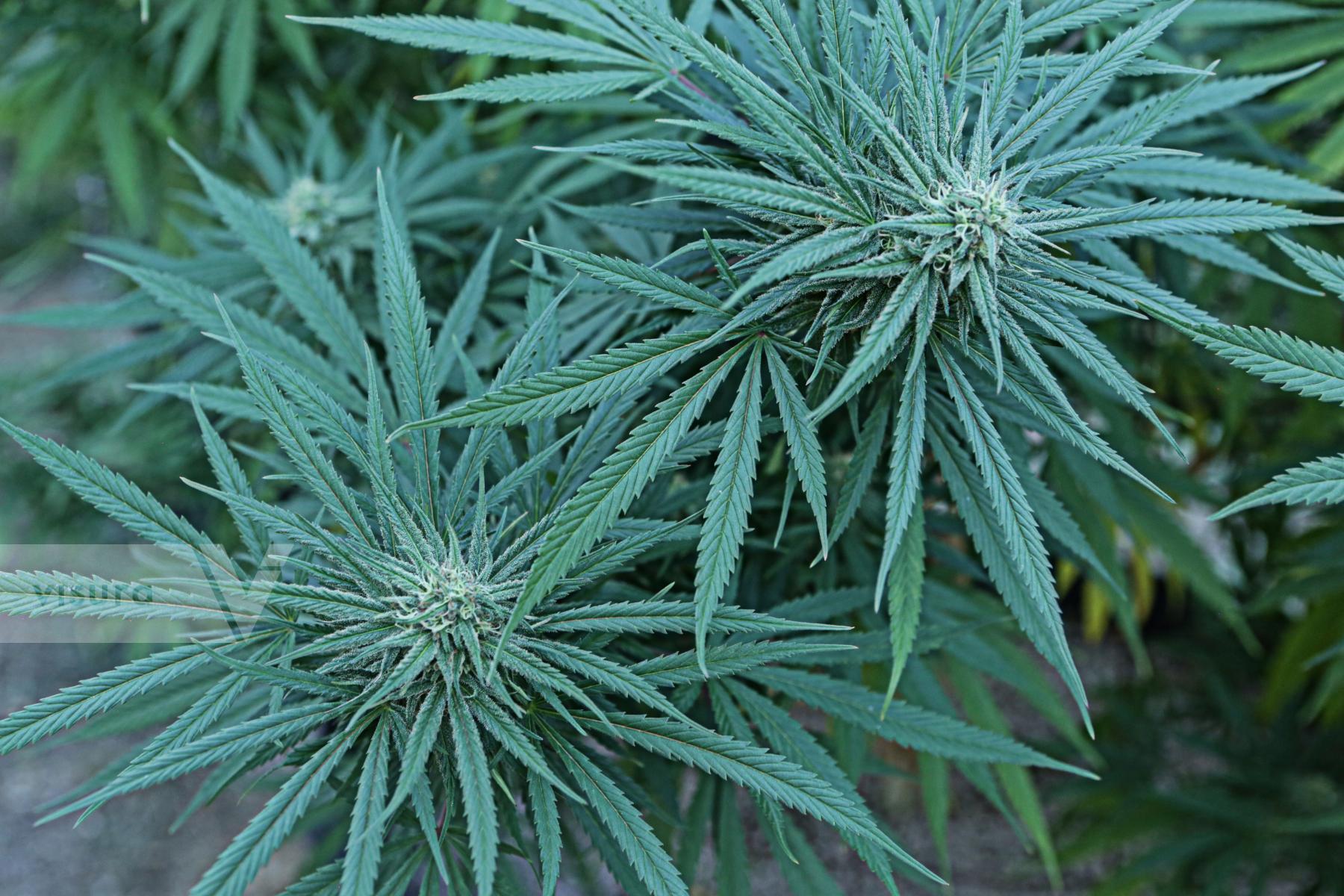
Caption:
Near Garberville,Humbolt County,Northern California, October 1, 2017 : Cannabis Harvest in the mountains around Garberville, in Northern California's Emerald Triangle, the largest cannabis producing region in the USA. Growers have been cultivating cannabis in Mendocino, Humbolt and Trinty counties since the 1960's. After the decline of the logging industry and commercial fishing, illegal canabis became a bigger part of the local economy. Today, the cannabis industry dwarfs all other economic activity in the counties. This is true in terms of jobs created, annual revenue, dollars per acre and dollars per gallon of water used. At the lowest estimates of total plant count, cannabis is the largest employer in the county, with at least one third more workers than government, the second largest employer. (Photo by Jean-Marc Giboux) Garberville USA
Near Garberville,Humbolt County,Northern California, October 1, 2017 : Cannabis Harvest in the mountains around Garberville, in Northern California's Emerald Triangle, the largest cannabis producing region in the USA. Growers have been cultivating cannabis in Mendocino, Humbolt and Trinty counties since the 1960's. After the decline of the logging industry and commercial fishing, illegal canabis became a bigger part of the local economy. Today, the cannabis industry dwarfs all other economic activity in the counties. This is true in terms of jobs created, annual revenue, dollars per acre and dollars per gallon of water used. At the lowest estimates of total plant count, cannabis is the largest employer in the county, with at least one third more workers than government, the second largest employer. (Photo by Jean-Marc Giboux) Garberville USA
Size: 3840h x 5760w
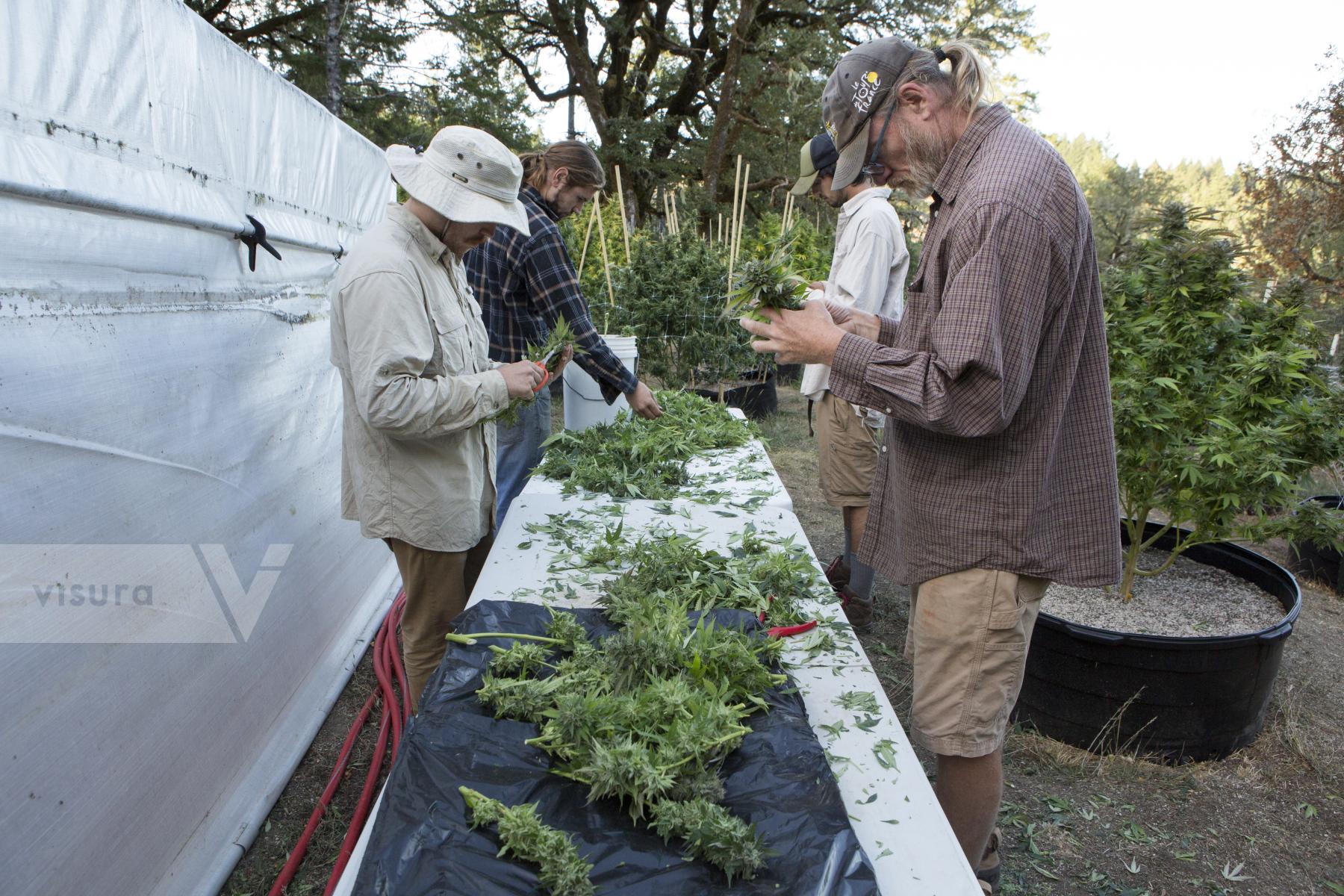
Caption:
Near Garberville,Humbolt County,Northern California, October 1, 2017 : Cannabis Harvest in the mountains around Garberville, in Northern California's Emerald Triangle, the largest cannabis producing region in the USA. Growers have been cultivating cannabis in Mendocino, Humbolt and Trinty counties since the 1960's. After the decline of the logging industry and commercial fishing, illegal canabis became a bigger part of the local economy. Today, the cannabis industry dwarfs all other economic activity in the counties. This is true in terms of jobs created, annual revenue, dollars per acre and dollars per gallon of water used. At the lowest estimates of total plant count, cannabis is the largest employer in the county, with at least one third more workers than government, the second largest employer. (Photo by Jean-Marc Giboux) Garberville USA
Near Garberville,Humbolt County,Northern California, October 1, 2017 : Cannabis Harvest in the mountains around Garberville, in Northern California's Emerald Triangle, the largest cannabis producing region in the USA. Growers have been cultivating cannabis in Mendocino, Humbolt and Trinty counties since the 1960's. After the decline of the logging industry and commercial fishing, illegal canabis became a bigger part of the local economy. Today, the cannabis industry dwarfs all other economic activity in the counties. This is true in terms of jobs created, annual revenue, dollars per acre and dollars per gallon of water used. At the lowest estimates of total plant count, cannabis is the largest employer in the county, with at least one third more workers than government, the second largest employer. (Photo by Jean-Marc Giboux) Garberville USA
Size: 3840h x 5760w
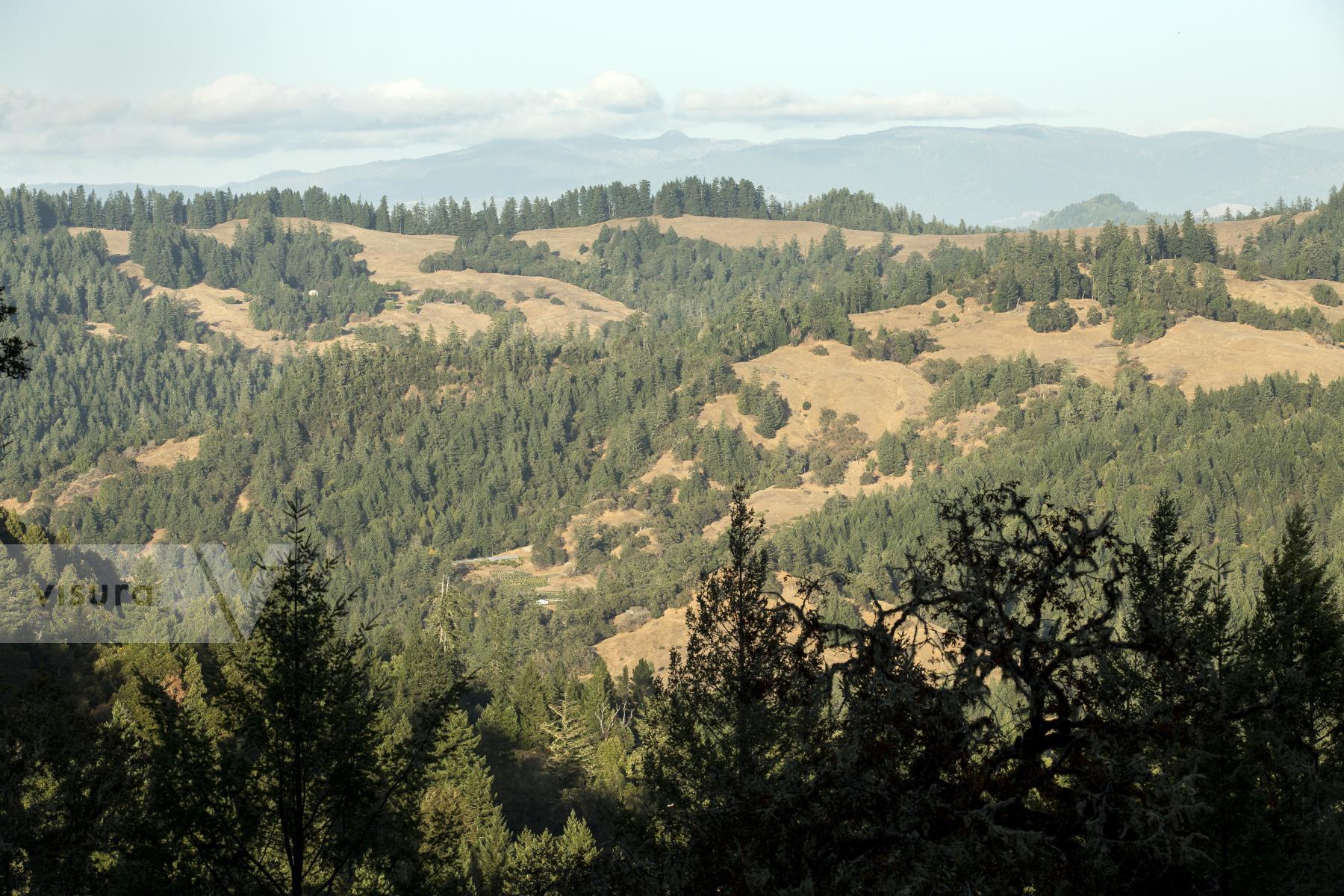
Caption:
Near Garberville,Humbolt County,Northern California, October 1, 2017 : Cannabis Harvest in the mountains around Garberville, in Northern California's Emerald Triangle, the largest cannabis producing region in the USA. Growers have been cultivating cannabis in Mendocino, Humbolt and Trinty counties since the 1960's. After the decline of the logging industry and commercial fishing, illegal canabis became a bigger part of the local economy. Today, the cannabis industry dwarfs all other economic activity in the counties. This is true in terms of jobs created, annual revenue, dollars per acre and dollars per gallon of water used. At the lowest estimates of total plant count, cannabis is the largest employer in the county, with at least one third more workers than government, the second largest employer. (Photo by Jean-Marc Giboux) Garberville USA
Near Garberville,Humbolt County,Northern California, October 1, 2017 : Cannabis Harvest in the mountains around Garberville, in Northern California's Emerald Triangle, the largest cannabis producing region in the USA. Growers have been cultivating cannabis in Mendocino, Humbolt and Trinty counties since the 1960's. After the decline of the logging industry and commercial fishing, illegal canabis became a bigger part of the local economy. Today, the cannabis industry dwarfs all other economic activity in the counties. This is true in terms of jobs created, annual revenue, dollars per acre and dollars per gallon of water used. At the lowest estimates of total plant count, cannabis is the largest employer in the county, with at least one third more workers than government, the second largest employer. (Photo by Jean-Marc Giboux) Garberville USA
Size: 3000h x 4500w

Caption:
Near Garberville,Humbolt County,Northern California, October 1, 2017 : Cannabis Harvest in the mountains around Garberville, in Northern California's Emerald Triangle, the largest cannabis producing region in the USA. Growers have been cultivating cannabis in Mendocino, Humbolt and Trinty counties since the 1960's. After the decline of the logging industry and commercial fishing, illegal canabis became a bigger part of the local economy. Today, the cannabis industry dwarfs all other economic activity in the counties. This is true in terms of jobs created, annual revenue, dollars per acre and dollars per gallon of water used. At the lowest estimates of total plant count, cannabis is the largest employer in the county, with at least one third more workers than government, the second largest employer. (Photo by Jean-Marc Giboux) Garberville USA
Near Garberville,Humbolt County,Northern California, October 1, 2017 : Cannabis Harvest in the mountains around Garberville, in Northern California's Emerald Triangle, the largest cannabis producing region in the USA. Growers have been cultivating cannabis in Mendocino, Humbolt and Trinty counties since the 1960's. After the decline of the logging industry and commercial fishing, illegal canabis became a bigger part of the local economy. Today, the cannabis industry dwarfs all other economic activity in the counties. This is true in terms of jobs created, annual revenue, dollars per acre and dollars per gallon of water used. At the lowest estimates of total plant count, cannabis is the largest employer in the county, with at least one third more workers than government, the second largest employer. (Photo by Jean-Marc Giboux) Garberville USA
Size: 3840h x 5760w
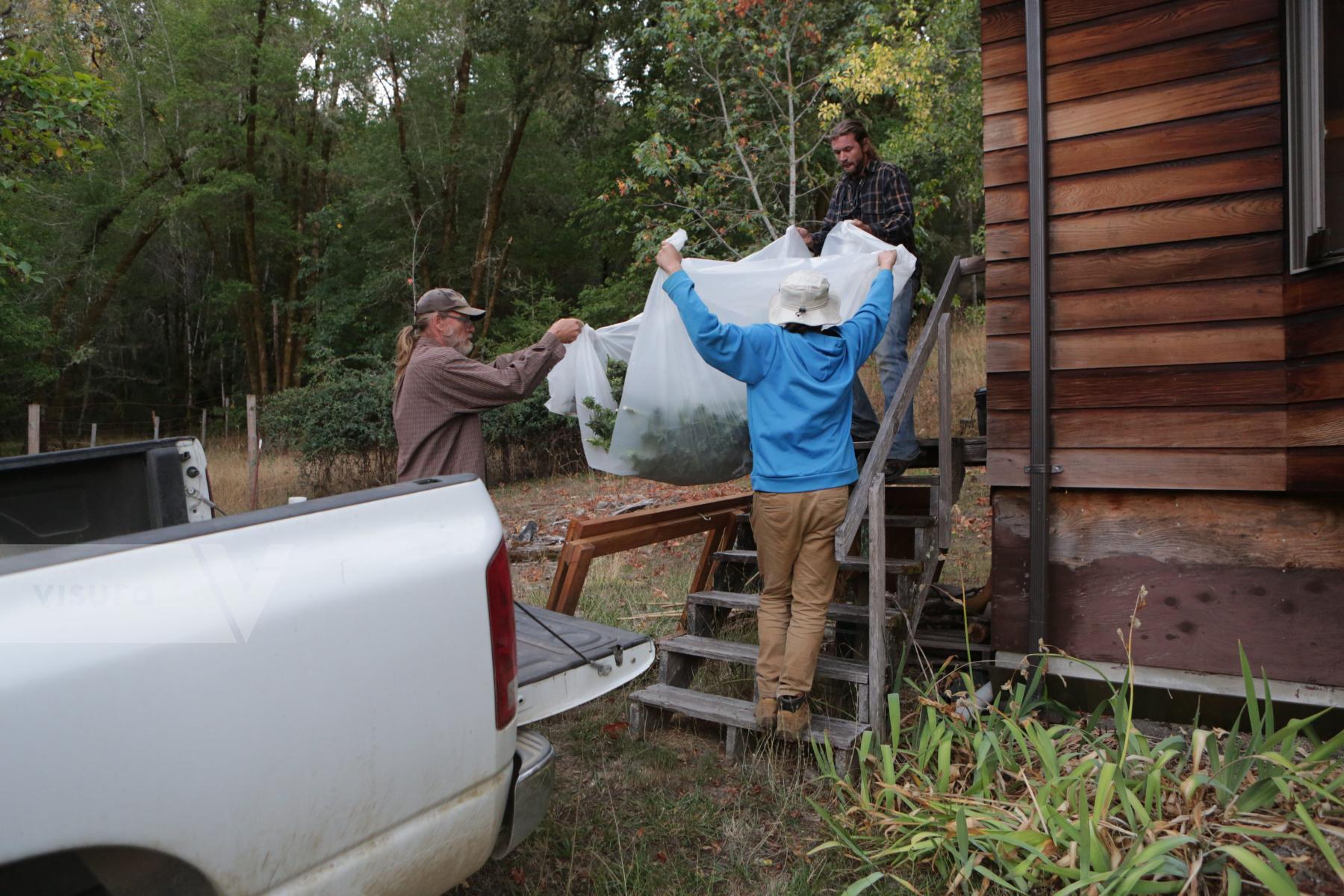
Caption:
Near Garberville,Humbolt County,Northern California, October 1, 2017 : Cannabis Harvest in the mountains around Garberville, in Northern California's Emerald Triangle, the largest cannabis producing region in the USA. Growers have been cultivating cannabis in Mendocino, Humbolt and Trinty counties since the 1960's. After the decline of the logging industry and commercial fishing, illegal canabis became a bigger part of the local economy. Today, the cannabis industry dwarfs all other economic activity in the counties. This is true in terms of jobs created, annual revenue, dollars per acre and dollars per gallon of water used. At the lowest estimates of total plant count, cannabis is the largest employer in the county, with at least one third more workers than government, the second largest employer. (Photo by Jean-Marc Giboux) Garberville USA
Near Garberville,Humbolt County,Northern California, October 1, 2017 : Cannabis Harvest in the mountains around Garberville, in Northern California's Emerald Triangle, the largest cannabis producing region in the USA. Growers have been cultivating cannabis in Mendocino, Humbolt and Trinty counties since the 1960's. After the decline of the logging industry and commercial fishing, illegal canabis became a bigger part of the local economy. Today, the cannabis industry dwarfs all other economic activity in the counties. This is true in terms of jobs created, annual revenue, dollars per acre and dollars per gallon of water used. At the lowest estimates of total plant count, cannabis is the largest employer in the county, with at least one third more workers than government, the second largest employer. (Photo by Jean-Marc Giboux) Garberville USA
Size: 3840h x 5760w
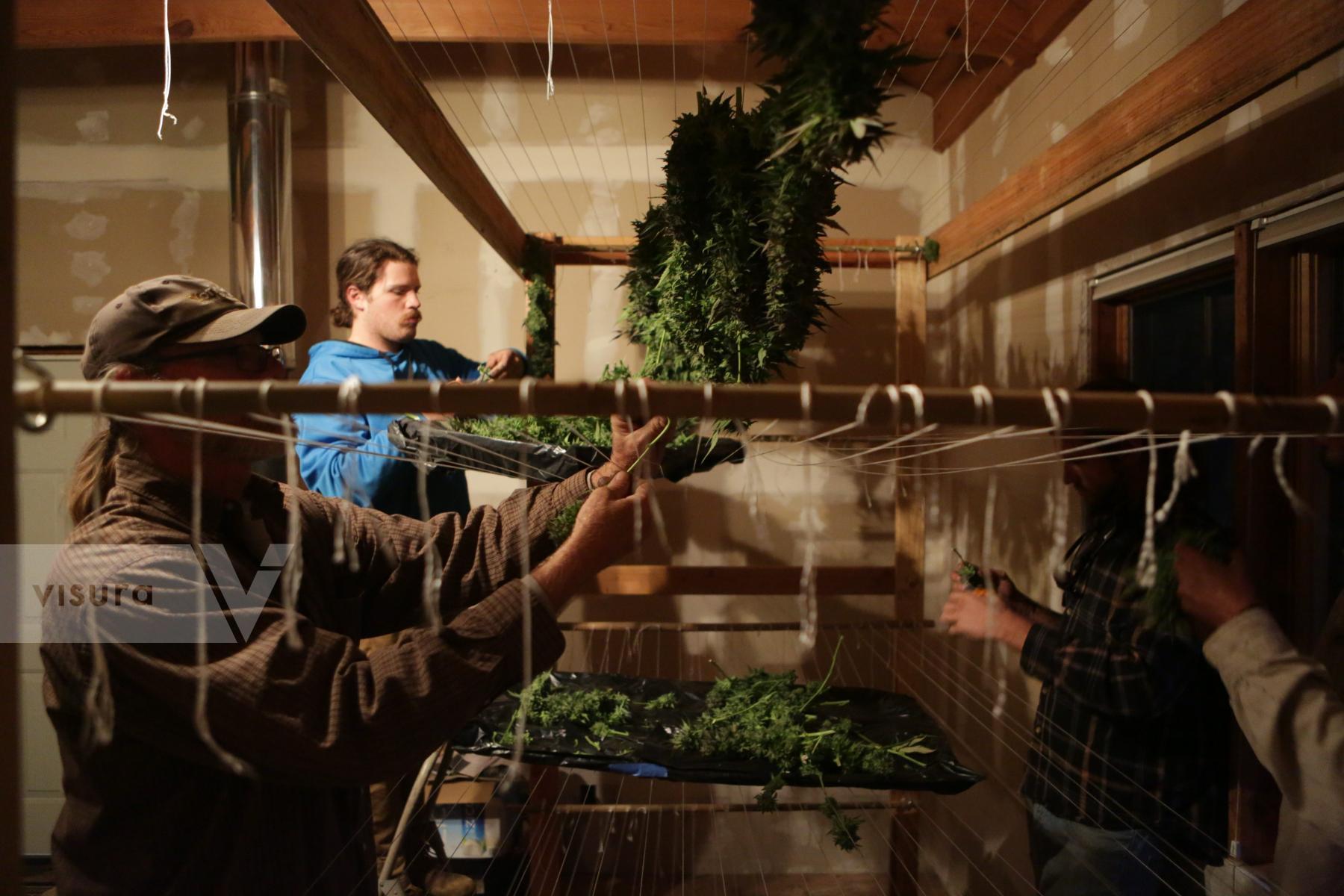
Caption:
Near Garberville,Humbolt County,Northern California, October 1, 2017 : Cannabis Harvest in the mountains around Garberville, in Northern California's Emerald Triangle, the largest cannabis producing region in the USA. Growers have been cultivating cannabis in Mendocino, Humbolt and Trinty counties since the 1960's. After the decline of the logging industry and commercial fishing, illegal canabis became a bigger part of the local economy. Today, the cannabis industry dwarfs all other economic activity in the counties. This is true in terms of jobs created, annual revenue, dollars per acre and dollars per gallon of water used. At the lowest estimates of total plant count, cannabis is the largest employer in the county, with at least one third more workers than government, the second largest employer. (Photo by Jean-Marc Giboux) Garberville USA
Near Garberville,Humbolt County,Northern California, October 1, 2017 : Cannabis Harvest in the mountains around Garberville, in Northern California's Emerald Triangle, the largest cannabis producing region in the USA. Growers have been cultivating cannabis in Mendocino, Humbolt and Trinty counties since the 1960's. After the decline of the logging industry and commercial fishing, illegal canabis became a bigger part of the local economy. Today, the cannabis industry dwarfs all other economic activity in the counties. This is true in terms of jobs created, annual revenue, dollars per acre and dollars per gallon of water used. At the lowest estimates of total plant count, cannabis is the largest employer in the county, with at least one third more workers than government, the second largest employer. (Photo by Jean-Marc Giboux) Garberville USA
Size: 3840h x 5760w

Caption:
Mendocino, Mendocino County, Northern California, September 30, 2017 : TG and his crew are harvesting Cannabis and cleaning the flowers at his farm overlooking the Pacific ocean. Sea air and California sunshine produce some of the best cannabis in the world. It is the last harvest before Cannabis legalization starts on January 2018. Northern California's Emerald Triangle (Mendocino, Humboldt and Trinity counties) is the largest cannabis producing region in the USA. Growers have been cultivating cannabis plants around here since the 1960's. After the decline of the logging industry and commercial fishing, illegal farming became a bigger part of the local economy. In 1996 Prop 215 legalized cannabis for medical use, and introduced testing for pesticide and potency. Cannabis growing became a science. Some growers got licenses to farm for the medical market, but most continued to sell on the black market with nearly 75% of the production shipping out of state. Today, the cannabis industry dwarfs all other economic activity in the counties of the Emerald triangle. This is true in terms of jobs created, annual revenue, dollars per acre and dollars per gallon of water used. The cannabis industry is the largest employer in the counties, but many growers will not survive the new economic model of legalized cultivation, and competition from new large industrial farms setting up downstate. (Photo by Jean-Marc Giboux) Mendocino USA
Mendocino, Mendocino County, Northern California, September 30, 2017 : TG and his crew are harvesting Cannabis and cleaning the flowers at his farm overlooking the Pacific ocean. Sea air and California sunshine produce some of the best cannabis in the world. It is the last harvest before Cannabis legalization starts on January 2018. Northern California's Emerald Triangle (Mendocino, Humboldt and Trinity counties) is the largest cannabis producing region in the USA. Growers have been cultivating cannabis plants around here since the 1960's. After the decline of the logging industry and commercial fishing, illegal farming became a bigger part of the local economy. In 1996 Prop 215 legalized cannabis for medical use, and introduced testing for pesticide and potency. Cannabis growing became a science. Some growers got licenses to farm for the medical market, but most continued to sell on the black market with nearly 75% of the production shipping out of state. Today, the cannabis industry dwarfs all other economic activity in the counties of the Emerald triangle. This is true in terms of jobs created, annual revenue, dollars per acre and dollars per gallon of water used. The cannabis industry is the largest employer in the counties, but many growers will not survive the new economic model of legalized cultivation, and competition from new large industrial farms setting up downstate. (Photo by Jean-Marc Giboux) Mendocino USA
Size: 3000h x 4500w

Caption:
Near Garberville,Humbolt County,Northern California, October 1, 2017 : Cannabis Harvest in the mountains around Garberville, in Northern California's Emerald Triangle, the largest cannabis producing region in the USA. Growers have been cultivating cannabis in Mendocino, Humbolt and Trinty counties since the 1960's. After the decline of the logging industry and commercial fishing, illegal canabis became a bigger part of the local economy. Today, the cannabis industry dwarfs all other economic activity in the counties. This is true in terms of jobs created, annual revenue, dollars per acre and dollars per gallon of water used. At the lowest estimates of total plant count, cannabis is the largest employer in the county, with at least one third more workers than government, the second largest employer. (Photo by Jean-Marc Giboux) Garberville USA
Near Garberville,Humbolt County,Northern California, October 1, 2017 : Cannabis Harvest in the mountains around Garberville, in Northern California's Emerald Triangle, the largest cannabis producing region in the USA. Growers have been cultivating cannabis in Mendocino, Humbolt and Trinty counties since the 1960's. After the decline of the logging industry and commercial fishing, illegal canabis became a bigger part of the local economy. Today, the cannabis industry dwarfs all other economic activity in the counties. This is true in terms of jobs created, annual revenue, dollars per acre and dollars per gallon of water used. At the lowest estimates of total plant count, cannabis is the largest employer in the county, with at least one third more workers than government, the second largest employer. (Photo by Jean-Marc Giboux) Garberville USA
Size: 3840h x 5760w

Caption:
Los Angeles, Saturday March 10, 2018 : Jessica Cole, Founder and High Hostess of White Rabbit High Tea and her crew, host an intimate social Cannbis experience afternoon tea, served with gourmet unmedicated food and paired with tasting of unique cannabis products that sponsor the event. Half the Guests are in the cannabis industry, from delicately packaged weed, joints, vapes, edibles, to services like packaging, design, Public relations and Branding for cannabis products. ( Photo by Jean-Marc Giboux ) LOS ANGELES USA
Los Angeles, Saturday March 10, 2018 : Jessica Cole, Founder and High Hostess of White Rabbit High Tea and her crew, host an intimate social Cannbis experience afternoon tea, served with gourmet unmedicated food and paired with tasting of unique cannabis products that sponsor the event. Half the Guests are in the cannabis industry, from delicately packaged weed, joints, vapes, edibles, to services like packaging, design, Public relations and Branding for cannabis products. ( Photo by Jean-Marc Giboux ) LOS ANGELES USA
Size: 4480h x 6720w

Caption:
Los Angeles, Saturday March 10, 2018 : Jessica Cole, Founder and High Hostess of White Rabbit High Tea and her crew, host an intimate social Cannbis experience afternoon tea, served with gourmet unmedicated food and paired with tasting of unique cannabis products that sponsor the event. Half the Guests are in the cannabis industry, from delicately packaged weed, joints, vapes, edibles, to services like packaging, design, Public relations and Branding for cannabis products. ( Photo by Jean-Marc Giboux ) LOS ANGELES USA
Los Angeles, Saturday March 10, 2018 : Jessica Cole, Founder and High Hostess of White Rabbit High Tea and her crew, host an intimate social Cannbis experience afternoon tea, served with gourmet unmedicated food and paired with tasting of unique cannabis products that sponsor the event. Half the Guests are in the cannabis industry, from delicately packaged weed, joints, vapes, edibles, to services like packaging, design, Public relations and Branding for cannabis products. ( Photo by Jean-Marc Giboux ) LOS ANGELES USA
Size: 4480h x 6720w

Caption:
Los Angeles, Saturday March 10, 2018 : Jessica Cole, Founder and High Hostess of White Rabbit High Tea and her crew, host an intimate social Cannbis experience afternoon tea, served with gourmet unmedicated food and paired with tasting of unique cannabis products that sponsor the event. Half the Guests are in the cannabis industry, from delicately packaged weed, joints, vapes, edibles, to services like packaging, design, Public relations and Branding for cannabis products. ( Photo by Jean-Marc Giboux ) LOS ANGELES USA
Los Angeles, Saturday March 10, 2018 : Jessica Cole, Founder and High Hostess of White Rabbit High Tea and her crew, host an intimate social Cannbis experience afternoon tea, served with gourmet unmedicated food and paired with tasting of unique cannabis products that sponsor the event. Half the Guests are in the cannabis industry, from delicately packaged weed, joints, vapes, edibles, to services like packaging, design, Public relations and Branding for cannabis products. ( Photo by Jean-Marc Giboux ) LOS ANGELES USA
Size: 2976h x 4464w

Caption:
Los Angeles, Saturday March 10, 2018 : Jessica Cole, Founder and High Hostess of White Rabbit High Tea and her crew, host an intimate social Cannbis experience afternoon tea, served with gourmet unmedicated food and paired with tasting of unique cannabis products that sponsor the event. Half the Guests are in the cannabis industry, from delicately packaged weed, joints, vapes, edibles, to services like packaging, design, Public relations and Branding for cannabis products. ( Photo by Jean-Marc Giboux ) LOS ANGELES USA
Los Angeles, Saturday March 10, 2018 : Jessica Cole, Founder and High Hostess of White Rabbit High Tea and her crew, host an intimate social Cannbis experience afternoon tea, served with gourmet unmedicated food and paired with tasting of unique cannabis products that sponsor the event. Half the Guests are in the cannabis industry, from delicately packaged weed, joints, vapes, edibles, to services like packaging, design, Public relations and Branding for cannabis products. ( Photo by Jean-Marc Giboux ) LOS ANGELES USA
Size: 2976h x 4464w

Caption:
Los Angeles, Saturday March 10, 2018 : Jessica Cole, Founder and High Hostess of White Rabbit High Tea and her crew, host an intimate social Cannbis experience afternoon tea, served with gourmet unmedicated food and paired with tasting of unique cannabis products that sponsor the event. Half the Guests are in the cannabis industry, from delicately packaged weed, joints, vapes, edibles, to services like packaging, design, Public relations and Branding for cannabis products. ( Photo by Jean-Marc Giboux ) LOS ANGELES USA
Los Angeles, Saturday March 10, 2018 : Jessica Cole, Founder and High Hostess of White Rabbit High Tea and her crew, host an intimate social Cannbis experience afternoon tea, served with gourmet unmedicated food and paired with tasting of unique cannabis products that sponsor the event. Half the Guests are in the cannabis industry, from delicately packaged weed, joints, vapes, edibles, to services like packaging, design, Public relations and Branding for cannabis products. ( Photo by Jean-Marc Giboux ) LOS ANGELES USA
Size: 2822h x 3812w

Caption:
Los Angeles, Saturday March 10, 2018 : Jessica Cole, Founder and High Hostess of White Rabbit High Tea and her crew, host an intimate social Cannbis experience afternoon tea, served with gourmet unmedicated food and paired with tasting of unique cannabis products that sponsor the event. Half the Guests are in the cannabis industry, from delicately packaged weed, joints, vapes, edibles, to services like packaging, design, Public relations and Branding for cannabis products. ( Photo by Jean-Marc Giboux ) LOS ANGELES USA
Los Angeles, Saturday March 10, 2018 : Jessica Cole, Founder and High Hostess of White Rabbit High Tea and her crew, host an intimate social Cannbis experience afternoon tea, served with gourmet unmedicated food and paired with tasting of unique cannabis products that sponsor the event. Half the Guests are in the cannabis industry, from delicately packaged weed, joints, vapes, edibles, to services like packaging, design, Public relations and Branding for cannabis products. ( Photo by Jean-Marc Giboux ) LOS ANGELES USA
Size: 2976h x 4464w
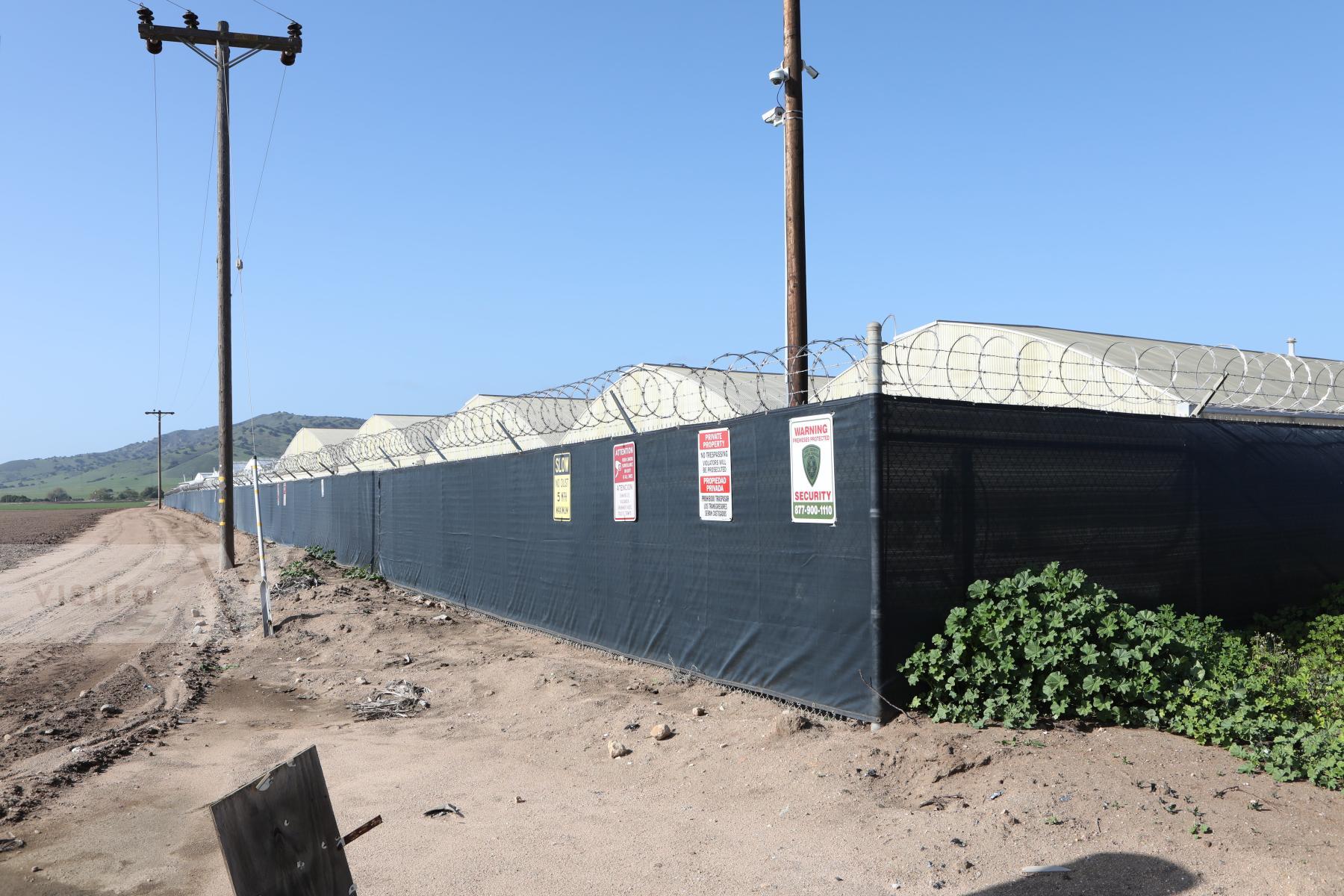
Caption:
Salinas Valley, California, April 8, 2018. (Photo by Jean-Marc Giboux) Salinas USA
Salinas Valley, California, April 8, 2018. (Photo by Jean-Marc Giboux) Salinas USA
Size: 4480h x 6720w

Caption:
None
None
Size: 2976h x 4464w

Caption:
Oakland, California, April 9, 2018 : Steve DeAngelo, Cannabis activist and owner of Harborside, the largest cannabis dispensary in the USA, is one of the most powerful leader of the industry, according to Fortune Magazine. (Photo by Jean-Marc Giboux) Oakland USA
Oakland, California, April 9, 2018 : Steve DeAngelo, Cannabis activist and owner of Harborside, the largest cannabis dispensary in the USA, is one of the most powerful leader of the industry, according to Fortune Magazine. (Photo by Jean-Marc Giboux) Oakland USA
Size: 4057h x 2976w

Caption:
Oakland, California, April 9, 2018 : Steve DeAngelo, Cannabis activist and owner of Harborside, the largest cannabis dispensary in the USA, is one of the most powerful leader of the industry, according to Fortune Magazine. (Photo by Jean-Marc Giboux) Oakland USA
Oakland, California, April 9, 2018 : Steve DeAngelo, Cannabis activist and owner of Harborside, the largest cannabis dispensary in the USA, is one of the most powerful leader of the industry, according to Fortune Magazine. (Photo by Jean-Marc Giboux) Oakland USA
Size: 4464h x 2976w

Caption:
Oakland, California, April 9, 2018 : Steve DeAngelo, Cannabis activist and owner of Harborside, the largest cannabis dispensary in the USA, is one of the most powerful leader of the industry, according to Fortune Magazine. (Photo by Jean-Marc Giboux) Oakland USA
Oakland, California, April 9, 2018 : Steve DeAngelo, Cannabis activist and owner of Harborside, the largest cannabis dispensary in the USA, is one of the most powerful leader of the industry, according to Fortune Magazine. (Photo by Jean-Marc Giboux) Oakland USA
Size: 4480h x 6720w
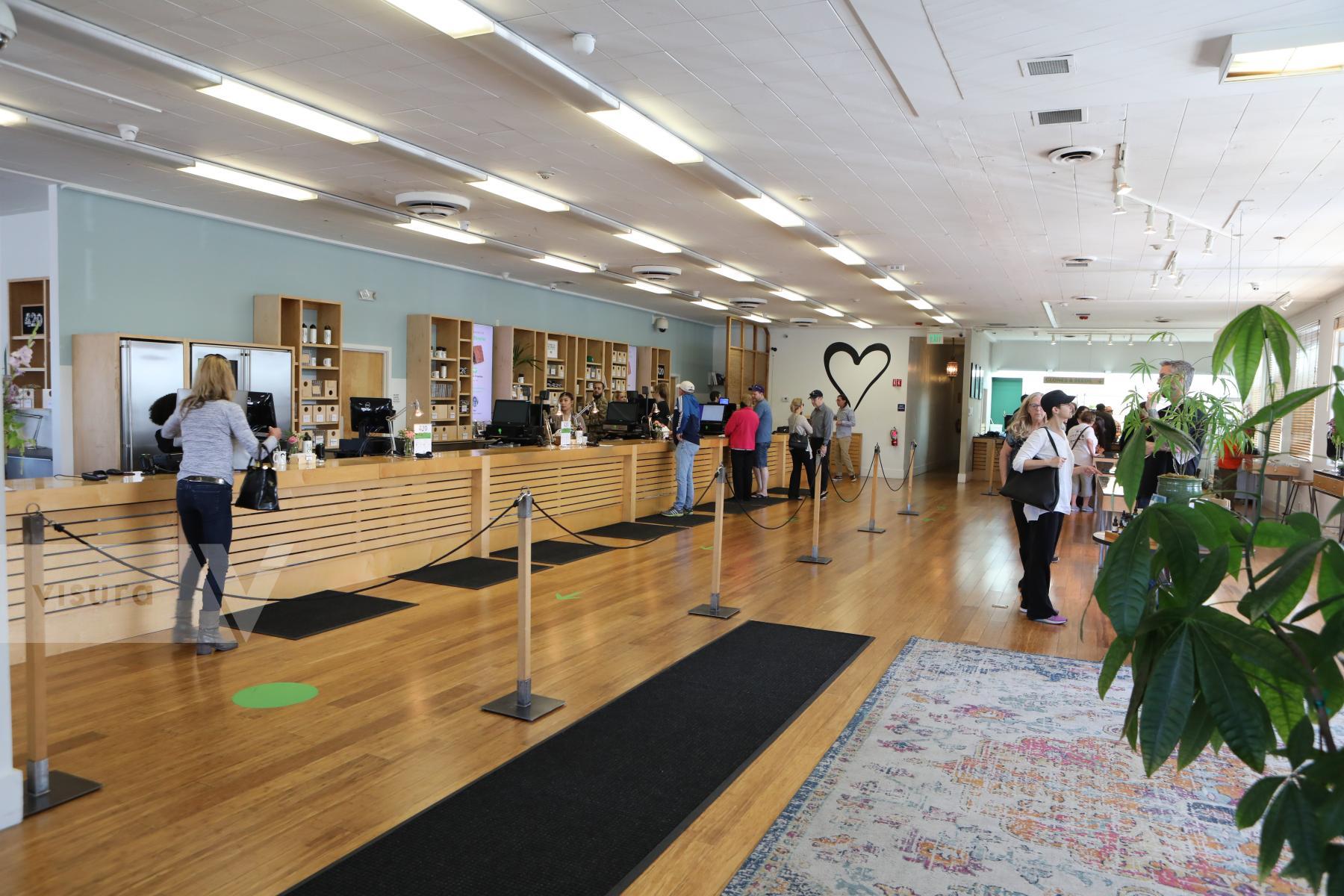
Caption:
Oakland, California, April 9, 2018 : Steve DeAngelo, Cannabis activist and owner of Harborside, the largest cannabis dispensary in the USA, is one of the most powerful leader of the industry, according to Fortune Magazine. (Photo by Jean-Marc Giboux) Oakland USA
Oakland, California, April 9, 2018 : Steve DeAngelo, Cannabis activist and owner of Harborside, the largest cannabis dispensary in the USA, is one of the most powerful leader of the industry, according to Fortune Magazine. (Photo by Jean-Marc Giboux) Oakland USA
Size: 4480h x 6720w

Caption:
Desert Hot Springs, Coachella Valley, California, April 10, 2018 : Canndescent Cannabis Growing operation in desert Hot Springs has 48 full time employees, 20 of them Desert Hot Springs residents. They cultivate 28 strains of Cannabis, producing 200 pounds per months with a harvest every 10 days. Canndescent (pronounced Can-Des-Ent) cultivates ultra-premium cannabis flower for the adult-use market, and is California’s #1-selling flower brand. In 2016, Canndescent became the first cultivator in the world to abandon traditional strain names, implementing a more shoppable strain architecture of Calm, Cruise, Create, Connect and Charge. The company produces over 10,000 pounds of cannabis each year and is often described as the inventor of luxury cannabis. Consumers can purchase Canndescent products at leading dispensary and delivery services throughout California (Photo by Jean-Marc Giboux) Coachella USA
Desert Hot Springs, Coachella Valley, California, April 10, 2018 : Canndescent Cannabis Growing operation in desert Hot Springs has 48 full time employees, 20 of them Desert Hot Springs residents. They cultivate 28 strains of Cannabis, producing 200 pounds per months with a harvest every 10 days. Canndescent (pronounced Can-Des-Ent) cultivates ultra-premium cannabis flower for the adult-use market, and is California’s #1-selling flower brand. In 2016, Canndescent became the first cultivator in the world to abandon traditional strain names, implementing a more shoppable strain architecture of Calm, Cruise, Create, Connect and Charge. The company produces over 10,000 pounds of cannabis each year and is often described as the inventor of luxury cannabis. Consumers can purchase Canndescent products at leading dispensary and delivery services throughout California (Photo by Jean-Marc Giboux) Coachella USA
Size: 2976h x 4464w
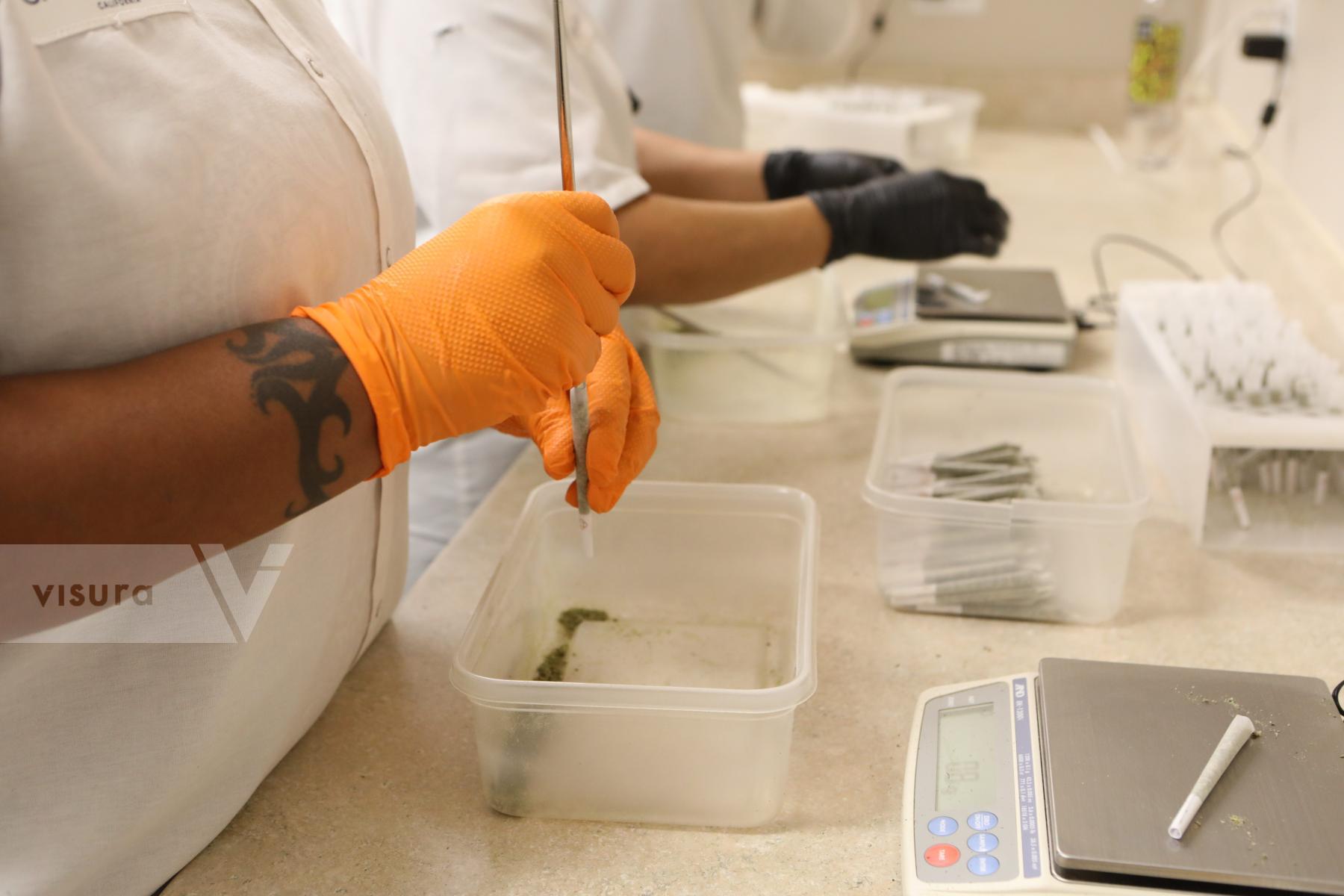
Caption:
Desert Hot Springs, Coachella Valley, California, April 10, 2018 : Canndescent Cannabis Growing operation in desert Hot Springs has 48 full time employees, 20 of them Desert Hot Springs residents. They cultivate 28 strains of Cannabis, producing 200 pounds per months with a harvest every 10 days. Canndescent (pronounced Can-Des-Ent) cultivates ultra-premium cannabis flower for the adult-use market, and is California’s #1-selling flower brand. In 2016, Canndescent became the first cultivator in the world to abandon traditional strain names, implementing a more shoppable strain architecture of Calm, Cruise, Create, Connect and Charge. The company produces over 10,000 pounds of cannabis each year and is often described as the inventor of luxury cannabis. Consumers can purchase Canndescent products at leading dispensary and delivery services throughout California (Photo by Jean-Marc Giboux) Coachella USA
Desert Hot Springs, Coachella Valley, California, April 10, 2018 : Canndescent Cannabis Growing operation in desert Hot Springs has 48 full time employees, 20 of them Desert Hot Springs residents. They cultivate 28 strains of Cannabis, producing 200 pounds per months with a harvest every 10 days. Canndescent (pronounced Can-Des-Ent) cultivates ultra-premium cannabis flower for the adult-use market, and is California’s #1-selling flower brand. In 2016, Canndescent became the first cultivator in the world to abandon traditional strain names, implementing a more shoppable strain architecture of Calm, Cruise, Create, Connect and Charge. The company produces over 10,000 pounds of cannabis each year and is often described as the inventor of luxury cannabis. Consumers can purchase Canndescent products at leading dispensary and delivery services throughout California (Photo by Jean-Marc Giboux) Coachella USA
Size: 4480h x 6720w
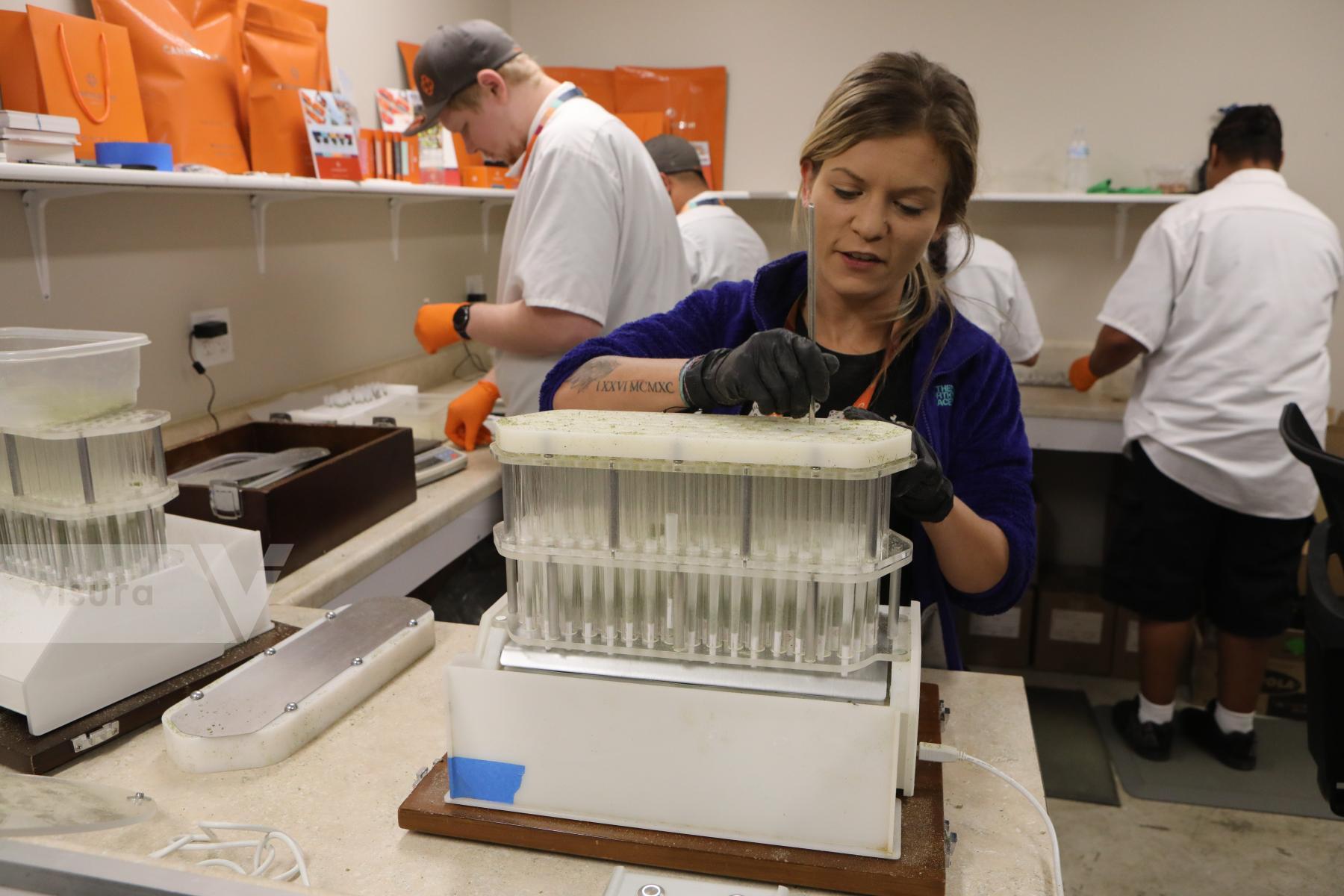
Caption:
Desert Hot Springs, Coachella Valley, California, April 10, 2018 : Canndescent Cannabis Growing operation in desert Hot Springs has 48 full time employees, 20 of them Desert Hot Springs residents. They cultivate 28 strains of Cannabis, producing 200 pounds per months with a harvest every 10 days. Canndescent (pronounced Can-Des-Ent) cultivates ultra-premium cannabis flower for the adult-use market, and is California’s #1-selling flower brand. In 2016, Canndescent became the first cultivator in the world to abandon traditional strain names, implementing a more shoppable strain architecture of Calm, Cruise, Create, Connect and Charge. The company produces over 10,000 pounds of cannabis each year and is often described as the inventor of luxury cannabis. Consumers can purchase Canndescent products at leading dispensary and delivery services throughout California (Photo by Jean-Marc Giboux) Coachella USA
Desert Hot Springs, Coachella Valley, California, April 10, 2018 : Canndescent Cannabis Growing operation in desert Hot Springs has 48 full time employees, 20 of them Desert Hot Springs residents. They cultivate 28 strains of Cannabis, producing 200 pounds per months with a harvest every 10 days. Canndescent (pronounced Can-Des-Ent) cultivates ultra-premium cannabis flower for the adult-use market, and is California’s #1-selling flower brand. In 2016, Canndescent became the first cultivator in the world to abandon traditional strain names, implementing a more shoppable strain architecture of Calm, Cruise, Create, Connect and Charge. The company produces over 10,000 pounds of cannabis each year and is often described as the inventor of luxury cannabis. Consumers can purchase Canndescent products at leading dispensary and delivery services throughout California (Photo by Jean-Marc Giboux) Coachella USA
Size: 4480h x 6720w
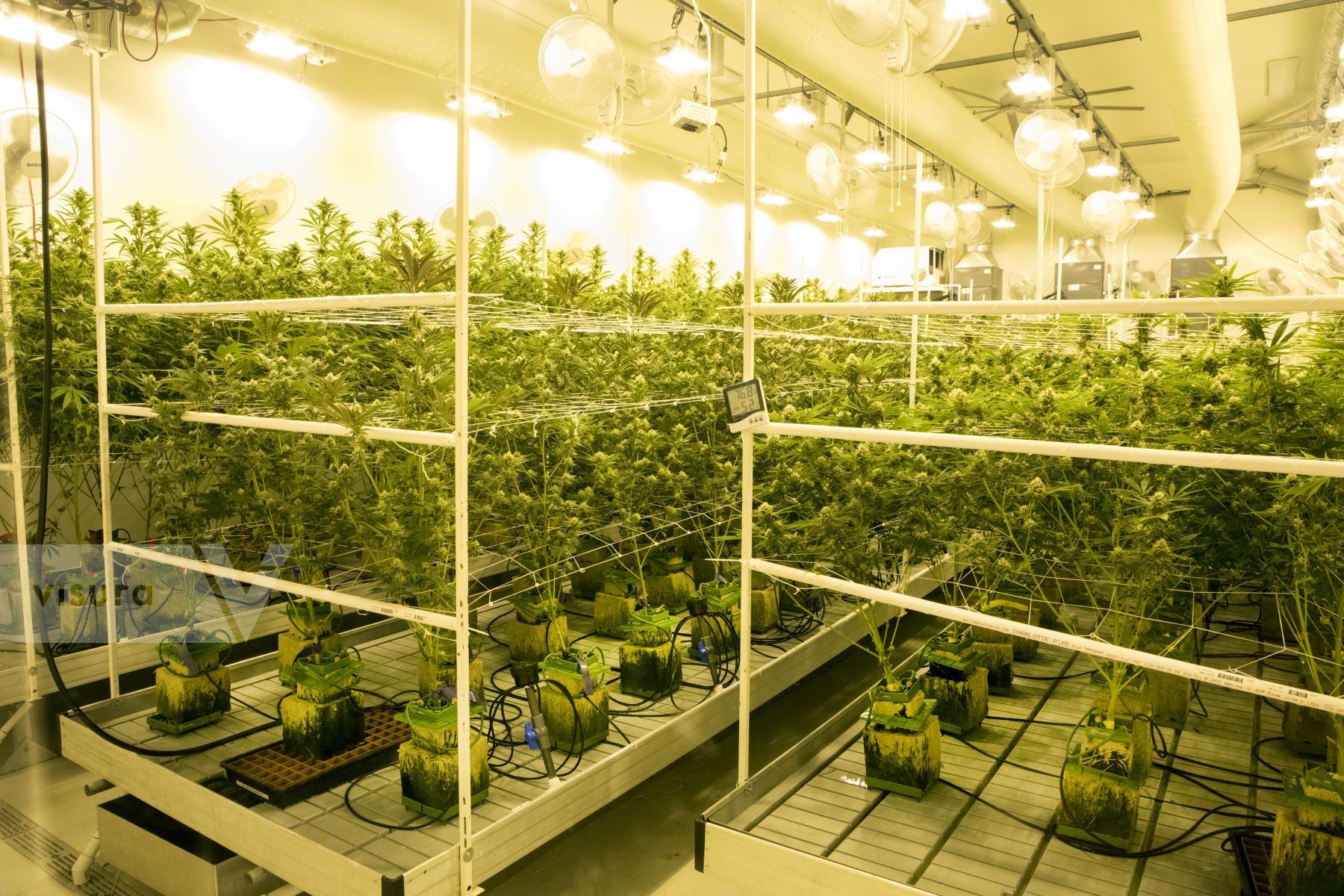
Caption:
Desert Hot Springs, Coachella Valley, California, April 10, 2018 : Canndescent Cannabis Growing operation in desert Hot Springs has 48 full time employees, 20 of them Desert Hot Springs residents. They cultivate 28 strains of Cannabis, producing 200 pounds per months with a harvest every 10 days. Canndescent (pronounced Can-Des-Ent) cultivates ultra-premium cannabis flower for the adult-use market, and is California’s #1-selling flower brand. In 2016, Canndescent became the first cultivator in the world to abandon traditional strain names, implementing a more shoppable strain architecture of Calm, Cruise, Create, Connect and Charge. The company produces over 10,000 pounds of cannabis each year and is often described as the inventor of luxury cannabis. Consumers can purchase Canndescent products at leading dispensary and delivery services throughout California (Photo by Jean-Marc Giboux) Coachella USA
Desert Hot Springs, Coachella Valley, California, April 10, 2018 : Canndescent Cannabis Growing operation in desert Hot Springs has 48 full time employees, 20 of them Desert Hot Springs residents. They cultivate 28 strains of Cannabis, producing 200 pounds per months with a harvest every 10 days. Canndescent (pronounced Can-Des-Ent) cultivates ultra-premium cannabis flower for the adult-use market, and is California’s #1-selling flower brand. In 2016, Canndescent became the first cultivator in the world to abandon traditional strain names, implementing a more shoppable strain architecture of Calm, Cruise, Create, Connect and Charge. The company produces over 10,000 pounds of cannabis each year and is often described as the inventor of luxury cannabis. Consumers can purchase Canndescent products at leading dispensary and delivery services throughout California (Photo by Jean-Marc Giboux) Coachella USA
Size: 4480h x 6720w
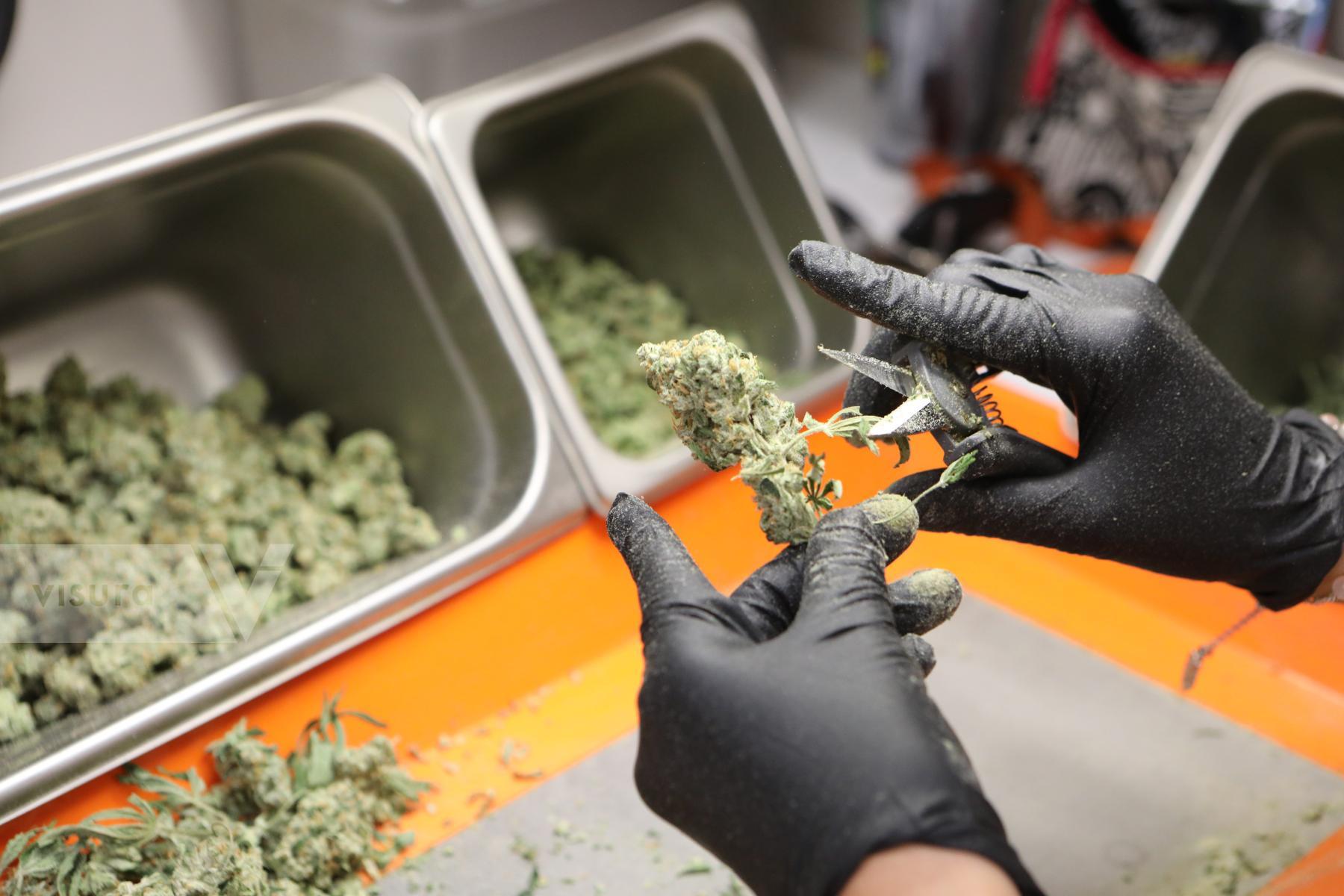
Caption:
Desert Hot Springs, Coachella Valley, California, April 10, 2018 : Canndescent Cannabis Growing operation in desert Hot Springs has 48 full time employees, 20 of them Desert Hot Springs residents. They cultivate 28 strains of Cannabis, producing 200 pounds per months with a harvest every 10 days. Canndescent (pronounced Can-Des-Ent) cultivates ultra-premium cannabis flower for the adult-use market, and is California’s #1-selling flower brand. In 2016, Canndescent became the first cultivator in the world to abandon traditional strain names, implementing a more shoppable strain architecture of Calm, Cruise, Create, Connect and Charge. The company produces over 10,000 pounds of cannabis each year and is often described as the inventor of luxury cannabis. Consumers can purchase Canndescent products at leading dispensary and delivery services throughout California (Photo by Jean-Marc Giboux) Coachella USA
Desert Hot Springs, Coachella Valley, California, April 10, 2018 : Canndescent Cannabis Growing operation in desert Hot Springs has 48 full time employees, 20 of them Desert Hot Springs residents. They cultivate 28 strains of Cannabis, producing 200 pounds per months with a harvest every 10 days. Canndescent (pronounced Can-Des-Ent) cultivates ultra-premium cannabis flower for the adult-use market, and is California’s #1-selling flower brand. In 2016, Canndescent became the first cultivator in the world to abandon traditional strain names, implementing a more shoppable strain architecture of Calm, Cruise, Create, Connect and Charge. The company produces over 10,000 pounds of cannabis each year and is often described as the inventor of luxury cannabis. Consumers can purchase Canndescent products at leading dispensary and delivery services throughout California (Photo by Jean-Marc Giboux) Coachella USA
Size: 4480h x 6720w

Caption:
Desert Hot Springs, Coachella Valley, California, April 10, 2018 : Canndescent Cannabis Growing operation in desert Hot Springs has 48 full time employees, 20 of them Desert Hot Springs residents. They cultivate 28 strains of Cannabis, producing 200 pounds per months with a harvest every 10 days. Canndescent (pronounced Can-Des-Ent) cultivates ultra-premium cannabis flower for the adult-use market, and is California’s #1-selling flower brand. In 2016, Canndescent became the first cultivator in the world to abandon traditional strain names, implementing a more shoppable strain architecture of Calm, Cruise, Create, Connect and Charge. The company produces over 10,000 pounds of cannabis each year and is often described as the inventor of luxury cannabis. Consumers can purchase Canndescent products at leading dispensary and delivery services throughout California (Photo by Jean-Marc Giboux) Coachella USA
Desert Hot Springs, Coachella Valley, California, April 10, 2018 : Canndescent Cannabis Growing operation in desert Hot Springs has 48 full time employees, 20 of them Desert Hot Springs residents. They cultivate 28 strains of Cannabis, producing 200 pounds per months with a harvest every 10 days. Canndescent (pronounced Can-Des-Ent) cultivates ultra-premium cannabis flower for the adult-use market, and is California’s #1-selling flower brand. In 2016, Canndescent became the first cultivator in the world to abandon traditional strain names, implementing a more shoppable strain architecture of Calm, Cruise, Create, Connect and Charge. The company produces over 10,000 pounds of cannabis each year and is often described as the inventor of luxury cannabis. Consumers can purchase Canndescent products at leading dispensary and delivery services throughout California (Photo by Jean-Marc Giboux) Coachella USA
Size: 6720h x 4480w

Caption:
Desert Hot Springs, Coachella Valley, California, April 10, 2018 : Canndescent Cannabis Growing operation in desert Hot Springs has 48 full time employees, 20 of them Desert Hot Springs residents. They cultivate 28 strains of Cannabis, producing 200 pounds per months with a harvest every 10 days. Canndescent (pronounced Can-Des-Ent) cultivates ultra-premium cannabis flower for the adult-use market, and is California’s #1-selling flower brand. In 2016, Canndescent became the first cultivator in the world to abandon traditional strain names, implementing a more shoppable strain architecture of Calm, Cruise, Create, Connect and Charge. The company produces over 10,000 pounds of cannabis each year and is often described as the inventor of luxury cannabis. Consumers can purchase Canndescent products at leading dispensary and delivery services throughout California (Photo by Jean-Marc Giboux) Coachella USA
Desert Hot Springs, Coachella Valley, California, April 10, 2018 : Canndescent Cannabis Growing operation in desert Hot Springs has 48 full time employees, 20 of them Desert Hot Springs residents. They cultivate 28 strains of Cannabis, producing 200 pounds per months with a harvest every 10 days. Canndescent (pronounced Can-Des-Ent) cultivates ultra-premium cannabis flower for the adult-use market, and is California’s #1-selling flower brand. In 2016, Canndescent became the first cultivator in the world to abandon traditional strain names, implementing a more shoppable strain architecture of Calm, Cruise, Create, Connect and Charge. The company produces over 10,000 pounds of cannabis each year and is often described as the inventor of luxury cannabis. Consumers can purchase Canndescent products at leading dispensary and delivery services throughout California (Photo by Jean-Marc Giboux) Coachella USA
Size: 6720h x 4480w

Caption:
Desert Hot Springs, Coachella Valley, California, April 10, 2018 : Canndescent Cannabis Growing operation in desert Hot Springs has 48 full time employees, 20 of them Desert Hot Springs residents. They cultivate 28 strains of Cannabis, producing 200 pounds per months with a harvest every 10 days. Canndescent (pronounced Can-Des-Ent) cultivates ultra-premium cannabis flower for the adult-use market, and is California’s #1-selling flower brand. In 2016, Canndescent became the first cultivator in the world to abandon traditional strain names, implementing a more shoppable strain architecture of Calm, Cruise, Create, Connect and Charge. The company produces over 10,000 pounds of cannabis each year and is often described as the inventor of luxury cannabis. Consumers can purchase Canndescent products at leading dispensary and delivery services throughout California (Photo by Jean-Marc Giboux) Coachella USA
Desert Hot Springs, Coachella Valley, California, April 10, 2018 : Canndescent Cannabis Growing operation in desert Hot Springs has 48 full time employees, 20 of them Desert Hot Springs residents. They cultivate 28 strains of Cannabis, producing 200 pounds per months with a harvest every 10 days. Canndescent (pronounced Can-Des-Ent) cultivates ultra-premium cannabis flower for the adult-use market, and is California’s #1-selling flower brand. In 2016, Canndescent became the first cultivator in the world to abandon traditional strain names, implementing a more shoppable strain architecture of Calm, Cruise, Create, Connect and Charge. The company produces over 10,000 pounds of cannabis each year and is often described as the inventor of luxury cannabis. Consumers can purchase Canndescent products at leading dispensary and delivery services throughout California (Photo by Jean-Marc Giboux) Coachella USA
Size: 4358h x 6547w

Caption:
Desert Hot Springs, Coachella Valley, California, April 10, 2018 : Canndescent Cannabis Growing operation in desert Hot Springs has 48 full time employees, 20 of them Desert Hot Springs residents. They cultivate 28 strains of Cannabis, producing 200 pounds per months with a harvest every 10 days. Canndescent (pronounced Can-Des-Ent) cultivates ultra-premium cannabis flower for the adult-use market, and is California’s #1-selling flower brand. In 2016, Canndescent became the first cultivator in the world to abandon traditional strain names, implementing a more shoppable strain architecture of Calm, Cruise, Create, Connect and Charge. The company produces over 10,000 pounds of cannabis each year and is often described as the inventor of luxury cannabis. Consumers can purchase Canndescent products at leading dispensary and delivery services throughout California (Photo by Jean-Marc Giboux) Coachella USA
Desert Hot Springs, Coachella Valley, California, April 10, 2018 : Canndescent Cannabis Growing operation in desert Hot Springs has 48 full time employees, 20 of them Desert Hot Springs residents. They cultivate 28 strains of Cannabis, producing 200 pounds per months with a harvest every 10 days. Canndescent (pronounced Can-Des-Ent) cultivates ultra-premium cannabis flower for the adult-use market, and is California’s #1-selling flower brand. In 2016, Canndescent became the first cultivator in the world to abandon traditional strain names, implementing a more shoppable strain architecture of Calm, Cruise, Create, Connect and Charge. The company produces over 10,000 pounds of cannabis each year and is often described as the inventor of luxury cannabis. Consumers can purchase Canndescent products at leading dispensary and delivery services throughout California (Photo by Jean-Marc Giboux) Coachella USA
Size: 4480h x 6720w

Caption:
Coachella Valley, California, April 10, 2018. (Photo by Jean-Marc Giboux) Coachella USA
Coachella Valley, California, April 10, 2018. (Photo by Jean-Marc Giboux) Coachella USA
Size: 2976h x 4464w
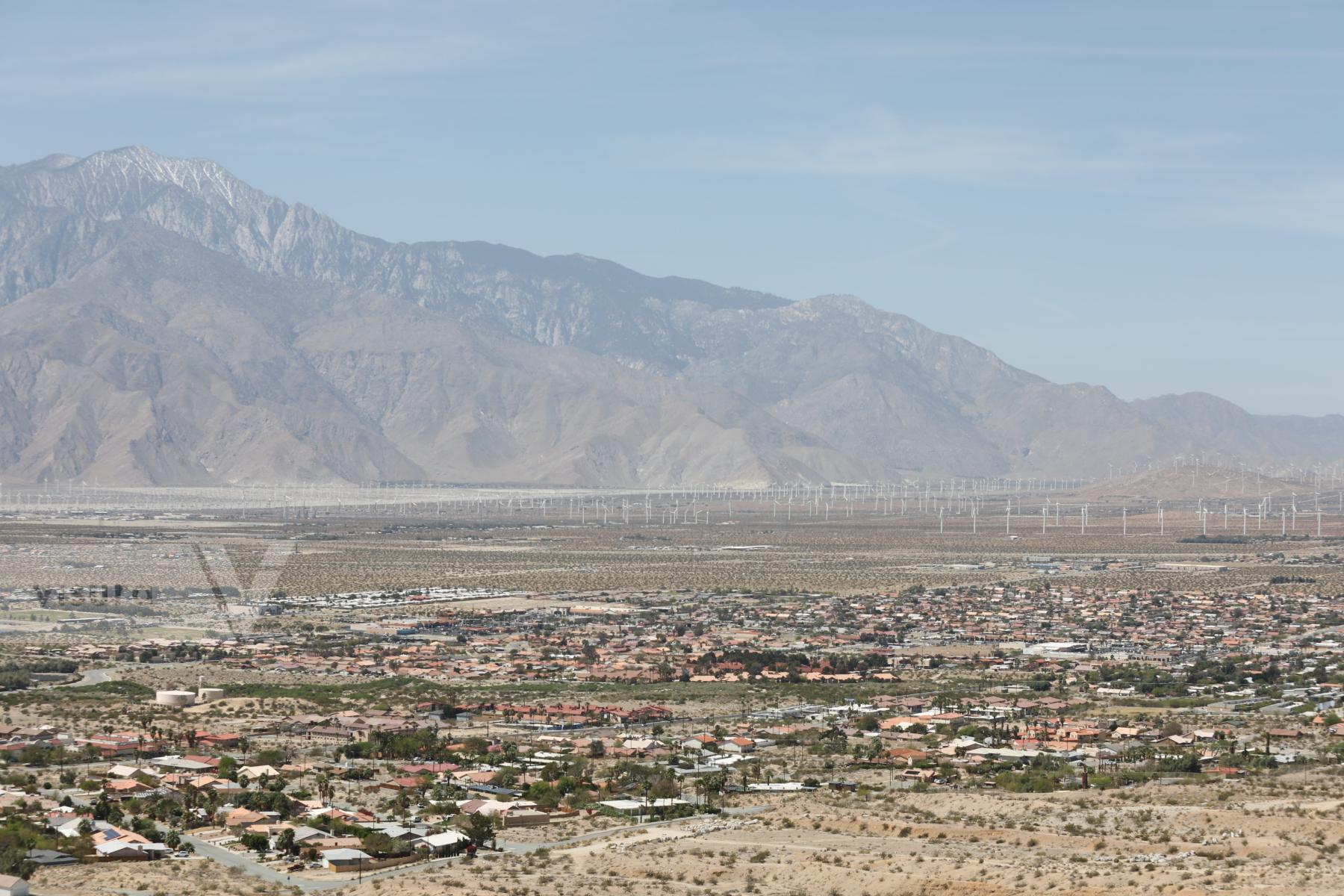
Caption:
Coachella Valley, California, April 10, 2018. (Photo by Jean-Marc Giboux) Coachella USA
Coachella Valley, California, April 10, 2018. (Photo by Jean-Marc Giboux) Coachella USA
Size: 4480h x 6720w

Caption:
Coachella Valley, California, April 10, 2018. (Photo by Jean-Marc Giboux) Coachella USA
Coachella Valley, California, April 10, 2018. (Photo by Jean-Marc Giboux) Coachella USA
Size: 4480h x 6720w
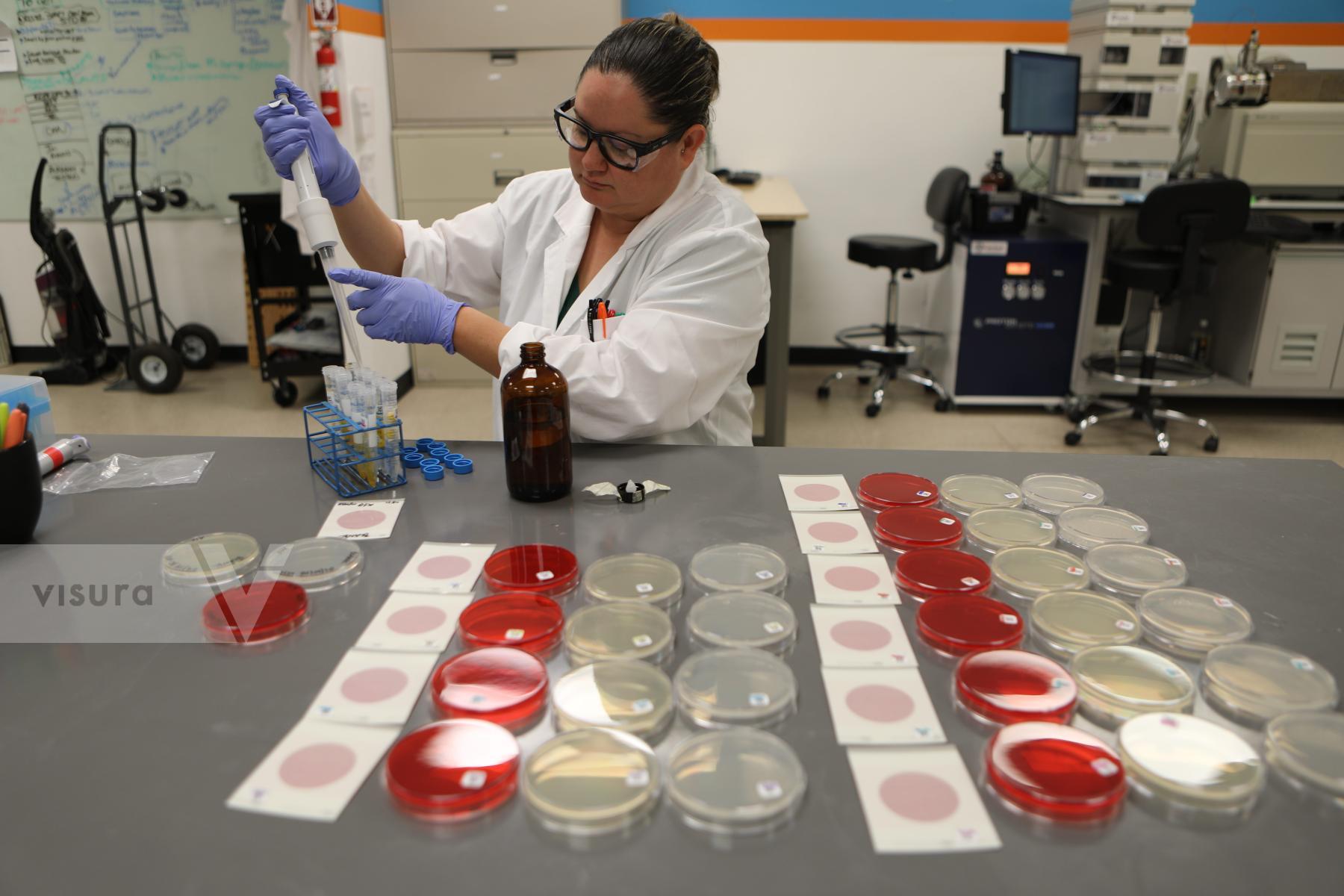
Caption:
Coachella, California, April 10, 2018 : PharmLabs in Coachella provides Lab services for the Cannabis Industry of the Coachella Valley. They test for THC/CBD content, terpenes analysis, and traces of pesticides or solvents, fungus and Salmonela in Cannabis flowers and concentrates. They have 3 operating labs and a new one opening mid-2018. Cannabis Laboratories a fast growing sector of the industry, as regulations are tight and will get tighter in the near future. Canndescent for exemple spends $100,000 a year on testing its products.(Photo by Jean-Marc Giboux) Coachella USA
Coachella, California, April 10, 2018 : PharmLabs in Coachella provides Lab services for the Cannabis Industry of the Coachella Valley. They test for THC/CBD content, terpenes analysis, and traces of pesticides or solvents, fungus and Salmonela in Cannabis flowers and concentrates. They have 3 operating labs and a new one opening mid-2018. Cannabis Laboratories a fast growing sector of the industry, as regulations are tight and will get tighter in the near future. Canndescent for exemple spends $100,000 a year on testing its products.(Photo by Jean-Marc Giboux) Coachella USA
Size: 4480h x 6720w
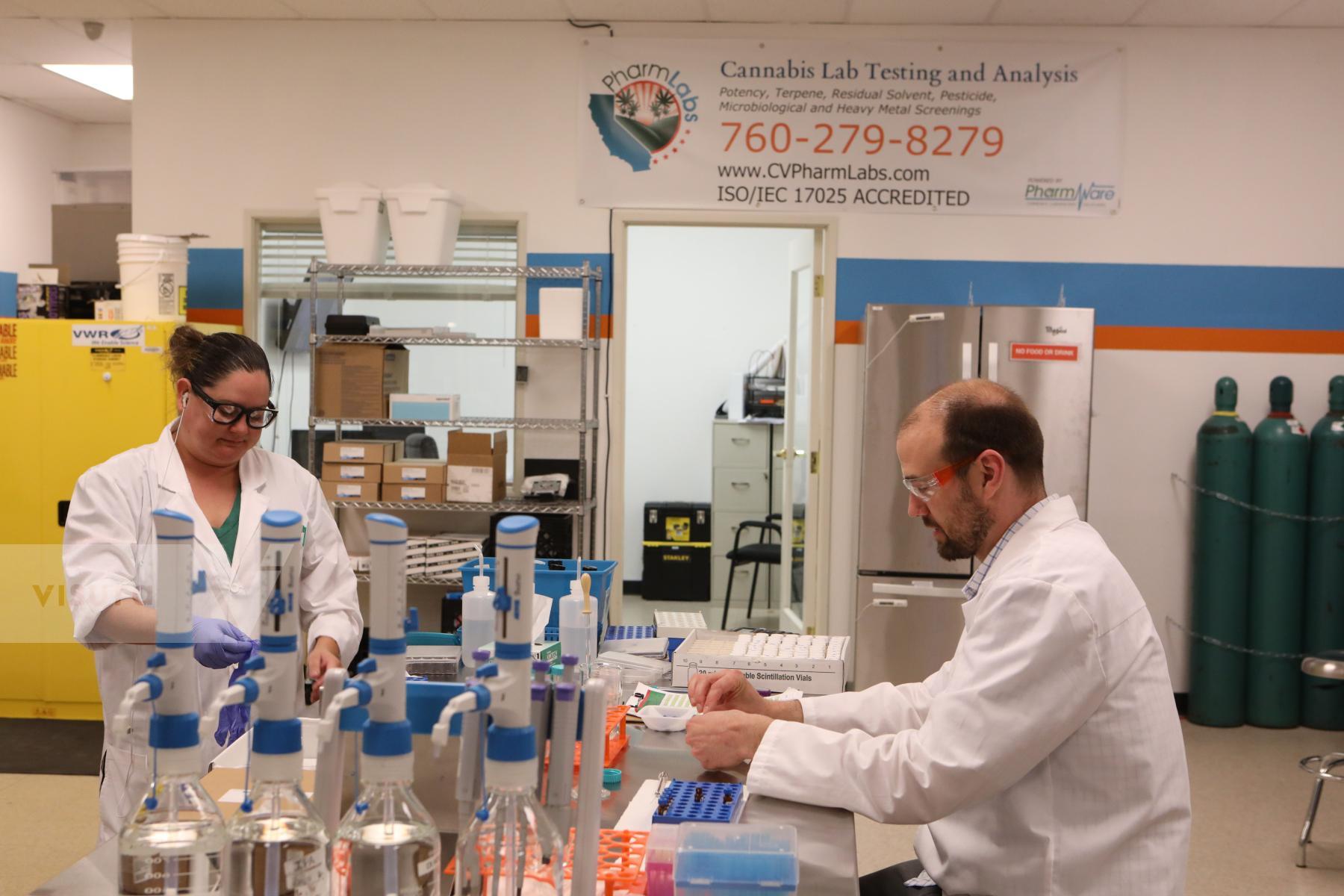
Caption:
Coachella, California, April 10, 2018 : PharmLabs in Coachella provides Lab services for the Cannabis Industry of the Coachella Valley. They test for THC/CBD content, terpenes analysis, and traces of pesticides or solvents, fungus and Salmonela in Cannabis flowers and concentrates. They have 3 operating labs and a new one opening mid-2018. Cannabis Laboratories a fast growing sector of the industry, as regulations are tight and will get tighter in the near future. Canndescent for exemple spends $100,000 a year on testing its products.(Photo by Jean-Marc Giboux) Coachella USA
Coachella, California, April 10, 2018 : PharmLabs in Coachella provides Lab services for the Cannabis Industry of the Coachella Valley. They test for THC/CBD content, terpenes analysis, and traces of pesticides or solvents, fungus and Salmonela in Cannabis flowers and concentrates. They have 3 operating labs and a new one opening mid-2018. Cannabis Laboratories a fast growing sector of the industry, as regulations are tight and will get tighter in the near future. Canndescent for exemple spends $100,000 a year on testing its products.(Photo by Jean-Marc Giboux) Coachella USA
Size: 4480h x 6720w

Caption:
Coachella, California, April 10, 2018 : PharmLabs in Coachella provides Lab services for the Cannabis Industry of the Coachella Valley. They test for THC/CBD content, terpenes analysis, and traces of pesticides or solvents, fungus and Salmonela in Cannabis flowers and concentrates. They have 3 operating labs and a new one opening mid-2018. Cannabis Laboratories a fast growing sector of the industry, as regulations are tight and will get tighter in the near future. Canndescent for exemple spends $100,000 a year on testing its products.(Photo by Jean-Marc Giboux) Coachella USA
Coachella, California, April 10, 2018 : PharmLabs in Coachella provides Lab services for the Cannabis Industry of the Coachella Valley. They test for THC/CBD content, terpenes analysis, and traces of pesticides or solvents, fungus and Salmonela in Cannabis flowers and concentrates. They have 3 operating labs and a new one opening mid-2018. Cannabis Laboratories a fast growing sector of the industry, as regulations are tight and will get tighter in the near future. Canndescent for exemple spends $100,000 a year on testing its products.(Photo by Jean-Marc Giboux) Coachella USA
Size: 4480h x 6720w

Caption:
Coachella Valley, California, April 10, 2018. (Photo by Jean-Marc Giboux) Coachella USA
Coachella Valley, California, April 10, 2018. (Photo by Jean-Marc Giboux) Coachella USA
Size: 4480h x 6720w

Caption:
Coachella Valley, California, April 10, 2018. (Photo by Jean-Marc Giboux) Coachella USA
Coachella Valley, California, April 10, 2018. (Photo by Jean-Marc Giboux) Coachella USA
Size: 4480h x 6720w

Caption:
Coachella Valley, California, April 10, 2018. (Photo by Jean-Marc Giboux) Coachella USA
Coachella Valley, California, April 10, 2018. (Photo by Jean-Marc Giboux) Coachella USA
Size: 4480h x 6720w

Caption:
None
None
Size: 4480h x 6720w
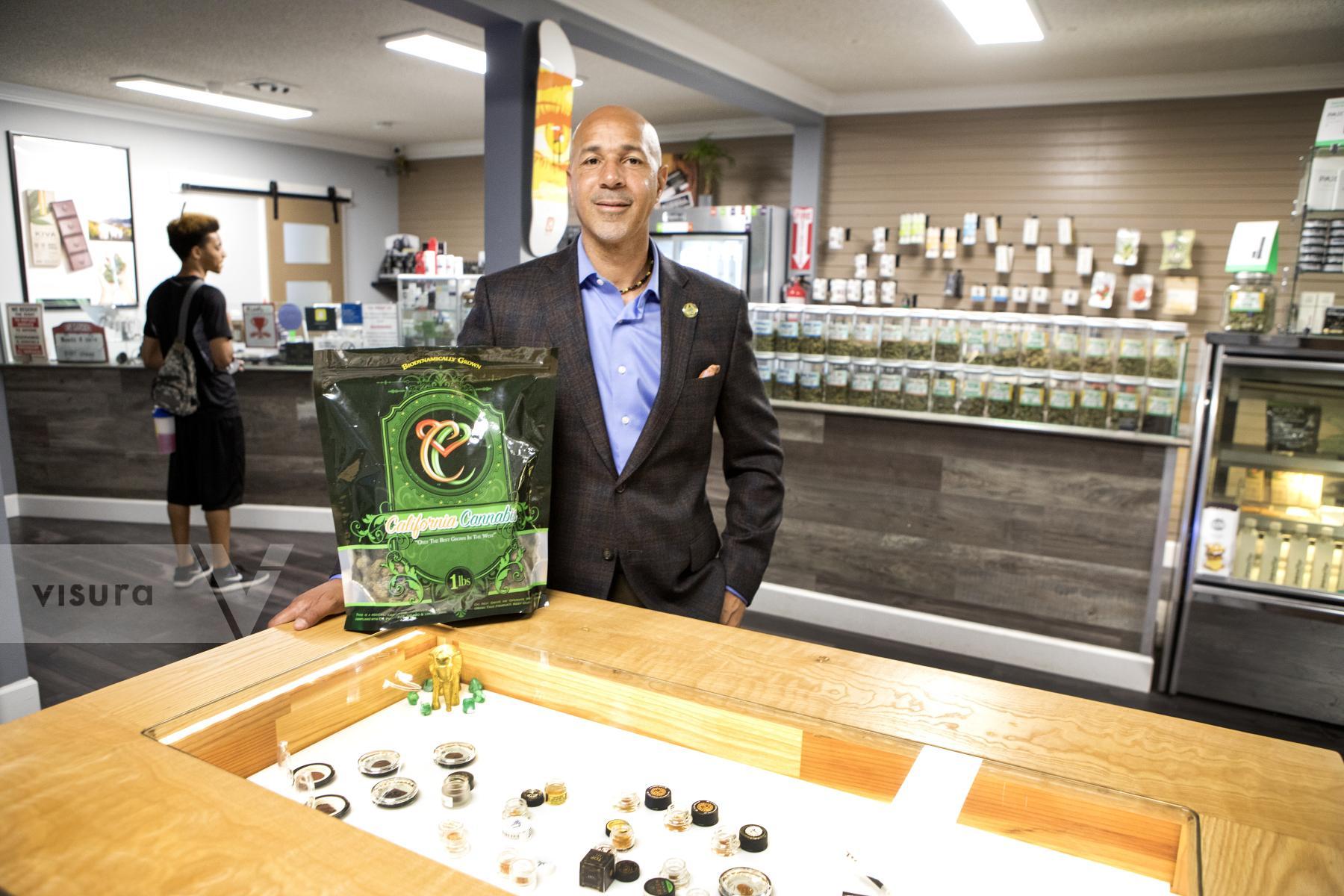
Caption:
None
None
Size: 4480h x 6720w

Caption:
None
None
Size: 4480h x 6720w
Summary
On January 1rst, 2018, fifty years after the summer of love, California, the most populous state in America and the 6thlargest economy on the planet, became the sixth state in the Union to legalize recreational cannabis for adults above 21.
From the old illegal Cannabis farmers in Northern California’s who started cultivating the weed in the 1960s, to the Cannabis indoor Factories springing up in the desert of southern California, it is a multi-billion dollar market and everyone wants a piece of it.
On January 1rst, 2018, fifty years after the summer of love, California, the most populous state in America and the 6thlargest economy on the planet, became the sixth state in the Union to legalize recreational cannabis for adults above 21.
From the old illegal Cannabis farmers in Northern California’s who started cultivating the weed in the 1960s, to the Cannabis indoor Factories springing up in the desert of southern California, it is a multi-billion dollar market and everyone wants a piece of it.
Story Text
On January 1rst, 2018, fifty years after the summer of love, California, the most populous state in America and the 6thlargest economy on the planet, became the sixth state in the Union to legalize recreational cannabis for adults above 21.
From the old illegal Cannabis farmers in Northern California’s who started cultivating the weed in the 1960s, to the Cannabis indoor Factories springing up in the desert of southern California, it is a multi-billion dollar market and everyone wants a piece of it.
Purchase License
Editorial License
Rights Managed
Buy Now
Request a special price or selection: Custom request
The new California Cannabis Gold Rush
Story
Includes 85 images
Credit: Jean-Marc Giboux via Visura
Asset ID: VA31111
Caption: Available
Copyright: © Jean-Marc Giboux, 2024
Collection: Environment Feature Travel
Topics: Agriculture Business cannabis Capitalism Desert Documentary Drug Abuse Editorial Environment Feature Illegal Trafficking Landscape Photography Photojournalism Stock Travel
Asset ID: VA31111
Caption: Available
Copyright: © Jean-Marc Giboux, 2024
Collection: Environment Feature Travel
Topics: Agriculture Business cannabis Capitalism Desert Documentary Drug Abuse Editorial Environment Feature Illegal Trafficking Landscape Photography Photojournalism Stock Travel
Also by Jean-Marc Giboux —









Fort Bragg, Mendocino County ,Northern California, October 1, 2017 : Labor Day celebration in Fort Brag, in Northern California's Emerald Triangle, the largest cannabis producing region in the USA. Growers have been cultivating cannabis in Mendocino, Humbolt and Trinty counties since the 1960's. After the decline of the logging industry and commercial fishing, illegal canabis became a bigger part of the local economy.
Today, the cannabis industry dwarfs all other economic activity in the counties. This is true in terms of jobs created, annual revenue, dollars per acre and dollars per gallon of water used.
At the lowest estimates of total plant count, cannabis is the largest employer in the county, with at least one third more workers than government, the second largest employer. (Photo by Jean-Marc Giboux) Fort Bragg USA

Fort Bragg, Mendocino County ,Northern California, October 1, 2017 : Labor Day celebration in Fort Brag, in Northern California's Emerald Triangle, the largest cannabis producing region in the USA. Growers have been cultivating cannabis in Mendocino, Humbolt and Trinty counties since the 1960's. After the decline of the logging industry and commercial fishing, illegal canabis became a bigger part of the local economy.
Today, the cannabis industry dwarfs all other economic activity in the counties. This is true in terms of jobs created, annual revenue, dollars per acre and dollars per gallon of water used.
At the lowest estimates of total plant count, cannabis is the largest employer in the county, with at least one third more workers than government, the second largest employer. (Photo by Jean-Marc Giboux) Fort Bragg USA

Fort Bragg, Mendocino County ,Northern California, October 1, 2017 : Labor Day celebration in Fort Brag, in Northern California's Emerald Triangle, the largest cannabis producing region in the USA. Growers have been cultivating cannabis in Mendocino, Humbolt and Trinty counties since the 1960's. After the decline of the logging industry and commercial fishing, illegal canabis became a bigger part of the local economy.
Today, the cannabis industry dwarfs all other economic activity in the counties. This is true in terms of jobs created, annual revenue, dollars per acre and dollars per gallon of water used.
At the lowest estimates of total plant count, cannabis is the largest employer in the county, with at least one third more workers than government, the second largest employer. (Photo by Jean-Marc Giboux) Fort Bragg USA

Fort Bragg, Mendocino County ,Northern California, October 1, 2017 : Labor Day celebration in Fort Brag, in Northern California's Emerald Triangle, the largest cannabis producing region in the USA. Growers have been cultivating cannabis in Mendocino, Humbolt and Trinty counties since the 1960's. After the decline of the logging industry and commercial fishing, illegal canabis became a bigger part of the local economy.
Today, the cannabis industry dwarfs all other economic activity in the counties. This is true in terms of jobs created, annual revenue, dollars per acre and dollars per gallon of water used.
At the lowest estimates of total plant count, cannabis is the largest employer in the county, with at least one third more workers than government, the second largest employer. (Photo by Jean-Marc Giboux) Fort Bragg USA

Fort Bragg, Mendocino County ,Northern California, October 1, 2017 : Labor Day celebration in Fort Brag, in Northern California's Emerald Triangle, the largest cannabis producing region in the USA. Growers have been cultivating cannabis in Mendocino, Humbolt and Trinty counties since the 1960's. After the decline of the logging industry and commercial fishing, illegal canabis became a bigger part of the local economy.
Today, the cannabis industry dwarfs all other economic activity in the counties. This is true in terms of jobs created, annual revenue, dollars per acre and dollars per gallon of water used.
At the lowest estimates of total plant count, cannabis is the largest employer in the county, with at least one third more workers than government, the second largest employer. (Photo by Jean-Marc Giboux) Fort Bragg USA

Fort Bragg, Mendocino County ,Northern California, October 1, 2017 : Labor Day celebration in Fort Brag, in Northern California's Emerald Triangle, the largest cannabis producing region in the USA. Growers have been cultivating cannabis in Mendocino, Humbolt and Trinty counties since the 1960's. After the decline of the logging industry and commercial fishing, illegal canabis became a bigger part of the local economy.
Today, the cannabis industry dwarfs all other economic activity in the counties. This is true in terms of jobs created, annual revenue, dollars per acre and dollars per gallon of water used.
At the lowest estimates of total plant count, cannabis is the largest employer in the county, with at least one third more workers than government, the second largest employer. (Photo by Jean-Marc Giboux) Fort Bragg USA

Fort Bragg, Mendocino County ,Northern California, October 1, 2017 : in Northern California's Emerald Triangle, the largest cannabis producing region in the USA. Growers have been cultivating cannabis plants around here since the 1960's. After the decline of the logging industry and commercial fishing, illegal became a bigger part of the local economy. Then came Prop 215 ilegalizing medical cannabis in 1996.
Simply put, the cannabis industry dwarfs all other economic activity in the counties. This is true in terms of jobs created, annual revenue, dollars per acre and dollars per gallon of water used.
It is sign of a health economy that the number of jobs is greater than the number of employable people. Even at the lowest estimates of total plant count, cannabis is the largest employer in the county, with at least one third more workers than government, the second largest category. (Photo by Jean-Marc Giboux) Fort Bragg USA

Fort Bragg, Mendocino County ,Northern California, October 1, 2017 : Labor Day celebration in Fort Brag, in Northern California's Emerald Triangle, the largest cannabis producing region in the USA. Growers have been cultivating cannabis in Mendocino, Humbolt and Trinty counties since the 1960's. After the decline of the logging industry and commercial fishing, illegal canabis became a bigger part of the local economy.
Today, the cannabis industry dwarfs all other economic activity in the counties. This is true in terms of jobs created, annual revenue, dollars per acre and dollars per gallon of water used.
At the lowest estimates of total plant count, cannabis is the largest employer in the county, with at least one third more workers than government, the second largest employer. (Photo by Jean-Marc Giboux) Fort Bragg USA


Fort Bragg, Mendocino County ,Northern California, October 1, 2017 : Labor Day celebration in Fort Brag, in Northern California's Emerald Triangle, the largest cannabis producing region in the USA. Growers have been cultivating cannabis in Mendocino, Humbolt and Trinty counties since the 1960's. After the decline of the logging industry and commercial fishing, illegal canabis became a bigger part of the local economy.
Today, the cannabis industry dwarfs all other economic activity in the counties. This is true in terms of jobs created, annual revenue, dollars per acre and dollars per gallon of water used.
At the lowest estimates of total plant count, cannabis is the largest employer in the county, with at least one third more workers than government, the second largest employer. (Photo by Jean-Marc Giboux) Fort Bragg USA

Northern California , 50 Years after the Summer of Love San Francisco - Avenue of the Giants, State Park with many Redwood groves in Humbolt County, on September 5, 2017.
(Photo by Jean-Marc Giboux ©) Growers have been cultivating cannabis in Mendocino, Humbolt and Trinty counties since the 1960's. After the decline of the logging industry and commercial fishing, illegal canabis became a bigger part of the local economy.
Today, the cannabis industry dwarfs all other economic activity in the counties. This is true in terms of jobs created, annual revenue, dollars per acre and dollars per gallon of water used.
At the lowest estimates of total plant count, cannabis is the largest employer in the county, with at least one third more workers than government, the second largest employer. (Photo by Jean-Marc Giboux) Fort Bragg USA

Mendocino, Mendocino County, Northern California, September 29, 2017 : Cannabis THC soda on sale at the Love it In Cooperative dispensary in Mendocino. Carol Roselle and Mary Aigner work at the Cannabis dispensary 'Love In It Cooperative' in the town of Mendocino in Northern California : "At any given time, you’ll find over 30 varieties of cannabis at our dispensary, sourcing much of it from our two farms in the Anderson Valley region of the Emerald Triangle in Mendocino County. While we specialize in sun grown cannabis, we also carry indoor cannabis grown locally by people who share our commitment to following organic standards. All of our cannabis is hand-trimmed and tested so you can be assured of its quality, potency and purity." .
Northern California's Emerald Triangle (Mendocino, Humbolt and Trinity counties) is the largest cannabis producing region in the USA. Growers have been cultivating cannabis plants around here since the 1960's. After the decline of the logging industry and commercial fishing, illegal became a bigger part of the local economy. Then came Prop 215 ilegalizing medical cannabis in 1996.
Simply put, the cannabis industry dwarfs all other economic activity in the counties. This is true in terms of jobs created, annual revenue, dollars per acre and dollars per gallon of water used.
It is sign of a health economy that the number of jobs is greater than the number of employable people. Even at the lowest estimates of total plant count, cannabis is the largest employer in the county, with at least one third more workers than government, the second largest category. (Photo by Jean-Marc Giboux) Mendocino USA

Mendocino, Mendocino County, Northern California, September 29, 2017 : Carol Roselle and Mary Aigner work at the Cannabis dispensary 'Love In It Cooperative' in the town of Mendocino in Northern California : "At any given time, you’ll find over 30 varieties of cannabis at our dispensary, sourcing much of it from our two farms in the Anderson Valley region of the Emerald Triangle in Mendocino County. While we specialize in sun grown cannabis, we also carry indoor cannabis grown locally by people who share our commitment to following organic standards. All of our cannabis is hand-trimmed and tested so you can be assured of its quality, potency and purity."
Northern California's Emerald Triangle (Mendocino, Humbolt and Trinity counties) is the largest cannabis producing region in the USA. Growers have been cultivating cannabis plants around here since the 1960's. After the decline of the logging industry and commercial fishing, illegal became a bigger part of the local economy. Then came Prop 215 ilegalizing medical cannabis in 1996.
Simply put, the cannabis industry dwarfs all other economic activity in the counties. This is true in terms of jobs created, annual revenue, dollars per acre and dollars per gallon of water used.
It is sign of a health economy that the number of jobs is greater than the number of employable people. Even at the lowest estimates of total plant count, cannabis is the largest employer in the county, with at least one third more workers than government, the second largest category. (Photo by Jean-Marc Giboux) Mendocino USA



Mendocino, Mendocino County, Northern California, September 30, 2017 : Sea air, California sunshine and 50 years of know-how, allow Medocino county to produce some of the best cannabis in the world.
Northern California's Emerald Triangle (Mendocino, Humboldt and Trinity counties) is the largest cannabis producing region in the USA. Growers have been cultivating cannabis plants around here since the 1960's. After the decline of the logging industry and commercial fishing, illegal farming became a bigger part of the local economy.
In 1996 Prop 215 legalized cannabis for medical use, and introduced testing for pesticide and potency. Cannabis growing became a science. Some growers got licenses to farm for the medical market, but most continued to sell on the black market with nearly 75% of the production shipping out of state.
Today, the cannabis industry dwarfs all other economic activity in the counties of the Emerald triangle. This is true in terms of jobs created, annual revenue, dollars per acre and dollars per gallon of water used.
The cannabis industry is the largest employer in the counties, but many growers will not survive the new economic model of legalized cultivation, and competition from new large industrial farms setting up downstate. (Photo by Jean-Marc Giboux) Mendocino USA

Mendocino, Mendocino County, Northern California, September 30, 2017 : TG and his crew are harvesting Cannabis and cleaning the flowers at his farm overlooking the Pacific ocean. Sea air and California sunshine produce some of the best cannabis in the world. It is the last harvest before Cannabis legalization starts on January 2018.
Northern California's Emerald Triangle (Mendocino, Humboldt and Trinity counties) is the largest cannabis producing region in the USA. Growers have been cultivating cannabis plants around here since the 1960's. After the decline of the logging industry and commercial fishing, illegal farming became a bigger part of the local economy.
In 1996 Prop 215 legalized cannabis for medical use, and introduced testing for pesticide and potency. Cannabis growing became a science. Some growers got licenses to farm for the medical market, but most continued to sell on the black market with nearly 75% of the production shipping out of state.
Today, the cannabis industry dwarfs all other economic activity in the counties of the Emerald triangle. This is true in terms of jobs created, annual revenue, dollars per acre and dollars per gallon of water used.
The cannabis industry is the largest employer in the counties, but many growers will not survive the new economic model of legalized cultivation, and competition from new large industrial farms setting up downstate. (Photo by Jean-Marc Giboux) Mendocino USA

Mendocino, Mendocino County, Northern California, September 30, 2017 : TG and his crew are harvesting Cannabis and cleaning the flowers at his farm overlooking the Pacific ocean. Sea air and California sunshine produce some of the best cannabis in the world. It is the last harvest before Cannabis legalization starts on January 2018.
Northern California's Emerald Triangle (Mendocino, Humboldt and Trinity counties) is the largest cannabis producing region in the USA. Growers have been cultivating cannabis plants around here since the 1960's. After the decline of the logging industry and commercial fishing, illegal farming became a bigger part of the local economy.
In 1996 Prop 215 legalized cannabis for medical use, and introduced testing for pesticide and potency. Cannabis growing became a science. Some growers got licenses to farm for the medical market, but most continued to sell on the black market with nearly 75% of the production shipping out of state.
Today, the cannabis industry dwarfs all other economic activity in the counties of the Emerald triangle. This is true in terms of jobs created, annual revenue, dollars per acre and dollars per gallon of water used.
The cannabis industry is the largest employer in the counties, but many growers will not survive the new economic model of legalized cultivation, and competition from new large industrial farms setting up downstate. (Photo by Jean-Marc Giboux) Mendocino USA

Mendocino, Mendocino County, Northern California, September 30, 2017 : TG and his crew are harvesting Cannabis and cleaning the flowers at his farm overlooking the Pacific ocean. Sea air and California sunshine produce some of the best cannabis in the world. It is the last harvest before Cannabis legalization starts on January 2018.
Northern California's Emerald Triangle (Mendocino, Humboldt and Trinity counties) is the largest cannabis producing region in the USA. Growers have been cultivating cannabis plants around here since the 1960's. After the decline of the logging industry and commercial fishing, illegal farming became a bigger part of the local economy.
In 1996 Prop 215 legalized cannabis for medical use, and introduced testing for pesticide and potency. Cannabis growing became a science. Some growers got licenses to farm for the medical market, but most continued to sell on the black market with nearly 75% of the production shipping out of state.
Today, the cannabis industry dwarfs all other economic activity in the counties of the Emerald triangle. This is true in terms of jobs created, annual revenue, dollars per acre and dollars per gallon of water used.
The cannabis industry is the largest employer in the counties, but many growers will not survive the new economic model of legalized cultivation, and competition from new large industrial farms setting up downstate. (Photo by Jean-Marc Giboux) Mendocino USA

Mendocino, Mendocino County, Northern California, September 30, 2017 : TG and his crew are harvesting Cannabis and cleaning the flowers at his farm overlooking the Pacific ocean. Sea air and California sunshine produce some of the best cannabis in the world. It is the last harvest before Cannabis legalization starts on January 2018.
Northern California's Emerald Triangle (Mendocino, Humboldt and Trinity counties) is the largest cannabis producing region in the USA. Growers have been cultivating cannabis plants around here since the 1960's. After the decline of the logging industry and commercial fishing, illegal farming became a bigger part of the local economy.
In 1996 Prop 215 legalized cannabis for medical use, and introduced testing for pesticide and potency. Cannabis growing became a science. Some growers got licenses to farm for the medical market, but most continued to sell on the black market with nearly 75% of the production shipping out of state.
Today, the cannabis industry dwarfs all other economic activity in the counties of the Emerald triangle. This is true in terms of jobs created, annual revenue, dollars per acre and dollars per gallon of water used.
The cannabis industry is the largest employer in the counties, but many growers will not survive the new economic model of legalized cultivation, and competition from new large industrial farms setting up downstate. (Photo by Jean-Marc Giboux) Mendocino USA

Mendocino, Mendocino County, Northern California, September 30, 2017 : TG and his crew are harvesting Cannabis and cleaning the flowers at his farm overlooking the Pacific ocean. Sea air and California sunshine produce some of the best cannabis in the world. It is the last harvest before Cannabis legalization starts on January 2018.
Northern California's Emerald Triangle (Mendocino, Humboldt and Trinity counties) is the largest cannabis producing region in the USA. Growers have been cultivating cannabis plants around here since the 1960's. After the decline of the logging industry and commercial fishing, illegal farming became a bigger part of the local economy.
In 1996 Prop 215 legalized cannabis for medical use, and introduced testing for pesticide and potency. Cannabis growing became a science. Some growers got licenses to farm for the medical market, but most continued to sell on the black market with nearly 75% of the production shipping out of state.
Today, the cannabis industry dwarfs all other economic activity in the counties of the Emerald triangle. This is true in terms of jobs created, annual revenue, dollars per acre and dollars per gallon of water used.
The cannabis industry is the largest employer in the counties, but many growers will not survive the new economic model of legalized cultivation, and competition from new large industrial farms setting up downstate. (Photo by Jean-Marc Giboux) Mendocino USA

Mendocino, Mendocino County, Northern California, September 30, 2017 : TG and his crew are harvesting Cannabis and cleaning the flowers at his farm overlooking the Pacific ocean. Sea air and California sunshine produce some of the best cannabis in the world. It is the last harvest before Cannabis legalization starts on January 2018.
Northern California's Emerald Triangle (Mendocino, Humboldt and Trinity counties) is the largest cannabis producing region in the USA. Growers have been cultivating cannabis plants around here since the 1960's. After the decline of the logging industry and commercial fishing, illegal farming became a bigger part of the local economy.
In 1996 Prop 215 legalized cannabis for medical use, and introduced testing for pesticide and potency. Cannabis growing became a science. Some growers got licenses to farm for the medical market, but most continued to sell on the black market with nearly 75% of the production shipping out of state.
Today, the cannabis industry dwarfs all other economic activity in the counties of the Emerald triangle. This is true in terms of jobs created, annual revenue, dollars per acre and dollars per gallon of water used.
The cannabis industry is the largest employer in the counties, but many growers will not survive the new economic model of legalized cultivation, and competition from new large industrial farms setting up downstate. (Photo by Jean-Marc Giboux) Mendocino USA

Mendocino, Mendocino County, Northern California, September 30, 2017 : TG and his crew are harvesting Cannabis and cleaning the flowers at his farm overlooking the Pacific ocean. Sea air and California sunshine produce some of the best cannabis in the world. It is the last harvest before Cannabis legalization starts on January 2018.
Northern California's Emerald Triangle (Mendocino, Humboldt and Trinity counties) is the largest cannabis producing region in the USA. Growers have been cultivating cannabis plants around here since the 1960's. After the decline of the logging industry and commercial fishing, illegal farming became a bigger part of the local economy.
In 1996 Prop 215 legalized cannabis for medical use, and introduced testing for pesticide and potency. Cannabis growing became a science. Some growers got licenses to farm for the medical market, but most continued to sell on the black market with nearly 75% of the production shipping out of state.
Today, the cannabis industry dwarfs all other economic activity in the counties of the Emerald triangle. This is true in terms of jobs created, annual revenue, dollars per acre and dollars per gallon of water used.
The cannabis industry is the largest employer in the counties, but many growers will not survive the new economic model of legalized cultivation, and competition from new large industrial farms setting up downstate. (Photo by Jean-Marc Giboux) Mendocino USA

Mendocino, Mendocino County, Northern California, September 30, 2017 : TG and his crew are harvesting Cannabis and cleaning the flowers at his farm overlooking the Pacific ocean. Sea air and California sunshine produce some of the best cannabis in the world. It is the last harvest before Cannabis legalization starts on January 2018.
Northern California's Emerald Triangle (Mendocino, Humboldt and Trinity counties) is the largest cannabis producing region in the USA. Growers have been cultivating cannabis plants around here since the 1960's. After the decline of the logging industry and commercial fishing, illegal farming became a bigger part of the local economy.
In 1996 Prop 215 legalized cannabis for medical use, and introduced testing for pesticide and potency. Cannabis growing became a science. Some growers got licenses to farm for the medical market, but most continued to sell on the black market with nearly 75% of the production shipping out of state.
Today, the cannabis industry dwarfs all other economic activity in the counties of the Emerald triangle. This is true in terms of jobs created, annual revenue, dollars per acre and dollars per gallon of water used.
The cannabis industry is the largest employer in the counties, but many growers will not survive the new economic model of legalized cultivation, and competition from new large industrial farms setting up downstate. (Photo by Jean-Marc Giboux) Mendocino USA

Near Garberville,Humbolt County,Northern California, October 1, 2017 : Cannabis Harvest in the mountains around Garberville, in Northern California's Emerald Triangle, the largest cannabis producing region in the USA. Growers have been cultivating cannabis in Mendocino, Humbolt and Trinty counties since the 1960's. After the decline of the logging industry and commercial fishing, illegal canabis became a bigger part of the local economy.
Today, the cannabis industry dwarfs all other economic activity in the counties. This is true in terms of jobs created, annual revenue, dollars per acre and dollars per gallon of water used.
At the lowest estimates of total plant count, cannabis is the largest employer in the county, with at least one third more workers than government, the second largest employer. (Photo by Jean-Marc Giboux) Garberville USA

Near Garberville,Humbolt County,Northern California, October 1, 2017 : Cannabis Harvest in the mountains around Garberville, in Northern California's Emerald Triangle, the largest cannabis producing region in the USA. Growers have been cultivating cannabis in Mendocino, Humbolt and Trinty counties since the 1960's. After the decline of the logging industry and commercial fishing, illegal canabis became a bigger part of the local economy.
Today, the cannabis industry dwarfs all other economic activity in the counties. This is true in terms of jobs created, annual revenue, dollars per acre and dollars per gallon of water used.
At the lowest estimates of total plant count, cannabis is the largest employer in the county, with at least one third more workers than government, the second largest employer. (Photo by Jean-Marc Giboux) Garberville USA

Near Garberville,Humbolt County,Northern California, October 1, 2017 : Cannabis Harvest in the mountains around Garberville, in Northern California's Emerald Triangle, the largest cannabis producing region in the USA. Growers have been cultivating cannabis in Mendocino, Humbolt and Trinty counties since the 1960's. After the decline of the logging industry and commercial fishing, illegal canabis became a bigger part of the local economy.
Today, the cannabis industry dwarfs all other economic activity in the counties. This is true in terms of jobs created, annual revenue, dollars per acre and dollars per gallon of water used.
At the lowest estimates of total plant count, cannabis is the largest employer in the county, with at least one third more workers than government, the second largest employer. (Photo by Jean-Marc Giboux) Garberville USA

Near Garberville,Humbolt County,Northern California, October 1, 2017 : Cannabis Harvest in the mountains around Garberville, in Northern California's Emerald Triangle, the largest cannabis producing region in the USA. Growers have been cultivating cannabis in Mendocino, Humbolt and Trinty counties since the 1960's. After the decline of the logging industry and commercial fishing, illegal canabis became a bigger part of the local economy.
Today, the cannabis industry dwarfs all other economic activity in the counties. This is true in terms of jobs created, annual revenue, dollars per acre and dollars per gallon of water used.
At the lowest estimates of total plant count, cannabis is the largest employer in the county, with at least one third more workers than government, the second largest employer. (Photo by Jean-Marc Giboux) Garberville USA

Near Garberville,Humbolt County,Northern California, October 1, 2017 : Cannabis Harvest in the mountains around Garberville, in Northern California's Emerald Triangle, the largest cannabis producing region in the USA. Growers have been cultivating cannabis in Mendocino, Humbolt and Trinty counties since the 1960's. After the decline of the logging industry and commercial fishing, illegal canabis became a bigger part of the local economy.
Today, the cannabis industry dwarfs all other economic activity in the counties. This is true in terms of jobs created, annual revenue, dollars per acre and dollars per gallon of water used.
At the lowest estimates of total plant count, cannabis is the largest employer in the county, with at least one third more workers than government, the second largest employer. (Photo by Jean-Marc Giboux) Garberville USA

Near Garberville,Humbolt County,Northern California, October 1, 2017 : Cannabis Harvest in the mountains around Garberville, in Northern California's Emerald Triangle, the largest cannabis producing region in the USA. Growers have been cultivating cannabis in Mendocino, Humbolt and Trinty counties since the 1960's. After the decline of the logging industry and commercial fishing, illegal canabis became a bigger part of the local economy.
Today, the cannabis industry dwarfs all other economic activity in the counties. This is true in terms of jobs created, annual revenue, dollars per acre and dollars per gallon of water used.
At the lowest estimates of total plant count, cannabis is the largest employer in the county, with at least one third more workers than government, the second largest employer. (Photo by Jean-Marc Giboux) Garberville USA

Near Garberville,Humbolt County,Northern California, October 1, 2017 : Cannabis Harvest in the mountains around Garberville, in Northern California's Emerald Triangle, the largest cannabis producing region in the USA. Growers have been cultivating cannabis in Mendocino, Humbolt and Trinty counties since the 1960's. After the decline of the logging industry and commercial fishing, illegal canabis became a bigger part of the local economy.
Today, the cannabis industry dwarfs all other economic activity in the counties. This is true in terms of jobs created, annual revenue, dollars per acre and dollars per gallon of water used.
At the lowest estimates of total plant count, cannabis is the largest employer in the county, with at least one third more workers than government, the second largest employer. (Photo by Jean-Marc Giboux) Garberville USA

Near Garberville,Humbolt County,Northern California, October 1, 2017 : Cannabis Harvest in the mountains around Garberville, in Northern California's Emerald Triangle, the largest cannabis producing region in the USA. Growers have been cultivating cannabis in Mendocino, Humbolt and Trinty counties since the 1960's. After the decline of the logging industry and commercial fishing, illegal canabis became a bigger part of the local economy.
Today, the cannabis industry dwarfs all other economic activity in the counties. This is true in terms of jobs created, annual revenue, dollars per acre and dollars per gallon of water used.
At the lowest estimates of total plant count, cannabis is the largest employer in the county, with at least one third more workers than government, the second largest employer. (Photo by Jean-Marc Giboux) Garberville USA

Near Garberville,Humbolt County,Northern California, October 1, 2017 : Cannabis Harvest in the mountains around Garberville, in Northern California's Emerald Triangle, the largest cannabis producing region in the USA. Growers have been cultivating cannabis in Mendocino, Humbolt and Trinty counties since the 1960's. After the decline of the logging industry and commercial fishing, illegal canabis became a bigger part of the local economy.
Today, the cannabis industry dwarfs all other economic activity in the counties. This is true in terms of jobs created, annual revenue, dollars per acre and dollars per gallon of water used.
At the lowest estimates of total plant count, cannabis is the largest employer in the county, with at least one third more workers than government, the second largest employer. (Photo by Jean-Marc Giboux) Garberville USA

Near Garberville,Humbolt County,Northern California, October 1, 2017 : Cannabis Harvest in the mountains around Garberville, in Northern California's Emerald Triangle, the largest cannabis producing region in the USA. Growers have been cultivating cannabis in Mendocino, Humbolt and Trinty counties since the 1960's. After the decline of the logging industry and commercial fishing, illegal canabis became a bigger part of the local economy.
Today, the cannabis industry dwarfs all other economic activity in the counties. This is true in terms of jobs created, annual revenue, dollars per acre and dollars per gallon of water used.
At the lowest estimates of total plant count, cannabis is the largest employer in the county, with at least one third more workers than government, the second largest employer. (Photo by Jean-Marc Giboux) Garberville USA

Near Garberville,Humbolt County,Northern California, October 1, 2017 : Cannabis Harvest in the mountains around Garberville, in Northern California's Emerald Triangle, the largest cannabis producing region in the USA. Growers have been cultivating cannabis in Mendocino, Humbolt and Trinty counties since the 1960's. After the decline of the logging industry and commercial fishing, illegal canabis became a bigger part of the local economy.
Today, the cannabis industry dwarfs all other economic activity in the counties. This is true in terms of jobs created, annual revenue, dollars per acre and dollars per gallon of water used.
At the lowest estimates of total plant count, cannabis is the largest employer in the county, with at least one third more workers than government, the second largest employer. (Photo by Jean-Marc Giboux) Garberville USA

Near Garberville,Humbolt County,Northern California, October 1, 2017 : Cannabis Harvest in the mountains around Garberville, in Northern California's Emerald Triangle, the largest cannabis producing region in the USA. Growers have been cultivating cannabis in Mendocino, Humbolt and Trinty counties since the 1960's. After the decline of the logging industry and commercial fishing, illegal canabis became a bigger part of the local economy.
Today, the cannabis industry dwarfs all other economic activity in the counties. This is true in terms of jobs created, annual revenue, dollars per acre and dollars per gallon of water used.
At the lowest estimates of total plant count, cannabis is the largest employer in the county, with at least one third more workers than government, the second largest employer. (Photo by Jean-Marc Giboux) Garberville USA

Near Garberville,Humbolt County,Northern California, October 1, 2017 : Cannabis Harvest in the mountains around Garberville, in Northern California's Emerald Triangle, the largest cannabis producing region in the USA. Growers have been cultivating cannabis in Mendocino, Humbolt and Trinty counties since the 1960's. After the decline of the logging industry and commercial fishing, illegal canabis became a bigger part of the local economy.
Today, the cannabis industry dwarfs all other economic activity in the counties. This is true in terms of jobs created, annual revenue, dollars per acre and dollars per gallon of water used.
At the lowest estimates of total plant count, cannabis is the largest employer in the county, with at least one third more workers than government, the second largest employer. (Photo by Jean-Marc Giboux) Garberville USA

Near Garberville,Humbolt County,Northern California, October 1, 2017 : Cannabis Harvest in the mountains around Garberville, in Northern California's Emerald Triangle, the largest cannabis producing region in the USA. Growers have been cultivating cannabis in Mendocino, Humbolt and Trinty counties since the 1960's. After the decline of the logging industry and commercial fishing, illegal canabis became a bigger part of the local economy.
Today, the cannabis industry dwarfs all other economic activity in the counties. This is true in terms of jobs created, annual revenue, dollars per acre and dollars per gallon of water used.
At the lowest estimates of total plant count, cannabis is the largest employer in the county, with at least one third more workers than government, the second largest employer. (Photo by Jean-Marc Giboux) Garberville USA

Near Garberville,Humbolt County,Northern California, October 1, 2017 : Cannabis Harvest in the mountains around Garberville, in Northern California's Emerald Triangle, the largest cannabis producing region in the USA. Growers have been cultivating cannabis in Mendocino, Humbolt and Trinty counties since the 1960's. After the decline of the logging industry and commercial fishing, illegal canabis became a bigger part of the local economy.
Today, the cannabis industry dwarfs all other economic activity in the counties. This is true in terms of jobs created, annual revenue, dollars per acre and dollars per gallon of water used.
At the lowest estimates of total plant count, cannabis is the largest employer in the county, with at least one third more workers than government, the second largest employer. (Photo by Jean-Marc Giboux) Garberville USA

Near Garberville,Humbolt County,Northern California, October 1, 2017 : Cannabis Harvest in the mountains around Garberville, in Northern California's Emerald Triangle, the largest cannabis producing region in the USA. Growers have been cultivating cannabis in Mendocino, Humbolt and Trinty counties since the 1960's. After the decline of the logging industry and commercial fishing, illegal canabis became a bigger part of the local economy.
Today, the cannabis industry dwarfs all other economic activity in the counties. This is true in terms of jobs created, annual revenue, dollars per acre and dollars per gallon of water used.
At the lowest estimates of total plant count, cannabis is the largest employer in the county, with at least one third more workers than government, the second largest employer. (Photo by Jean-Marc Giboux) Garberville USA

Near Garberville,Humbolt County,Northern California, October 1, 2017 : Cannabis Harvest in the mountains around Garberville, in Northern California's Emerald Triangle, the largest cannabis producing region in the USA. Growers have been cultivating cannabis in Mendocino, Humbolt and Trinty counties since the 1960's. After the decline of the logging industry and commercial fishing, illegal canabis became a bigger part of the local economy.
Today, the cannabis industry dwarfs all other economic activity in the counties. This is true in terms of jobs created, annual revenue, dollars per acre and dollars per gallon of water used.
At the lowest estimates of total plant count, cannabis is the largest employer in the county, with at least one third more workers than government, the second largest employer. (Photo by Jean-Marc Giboux) Garberville USA

Near Garberville,Humbolt County,Northern California, October 1, 2017 : Cannabis Harvest in the mountains around Garberville, in Northern California's Emerald Triangle, the largest cannabis producing region in the USA. Growers have been cultivating cannabis in Mendocino, Humbolt and Trinty counties since the 1960's. After the decline of the logging industry and commercial fishing, illegal canabis became a bigger part of the local economy.
Today, the cannabis industry dwarfs all other economic activity in the counties. This is true in terms of jobs created, annual revenue, dollars per acre and dollars per gallon of water used.
At the lowest estimates of total plant count, cannabis is the largest employer in the county, with at least one third more workers than government, the second largest employer. (Photo by Jean-Marc Giboux) Garberville USA

Mendocino, Mendocino County, Northern California, September 30, 2017 : TG and his crew are harvesting Cannabis and cleaning the flowers at his farm overlooking the Pacific ocean. Sea air and California sunshine produce some of the best cannabis in the world. It is the last harvest before Cannabis legalization starts on January 2018.
Northern California's Emerald Triangle (Mendocino, Humboldt and Trinity counties) is the largest cannabis producing region in the USA. Growers have been cultivating cannabis plants around here since the 1960's. After the decline of the logging industry and commercial fishing, illegal farming became a bigger part of the local economy.
In 1996 Prop 215 legalized cannabis for medical use, and introduced testing for pesticide and potency. Cannabis growing became a science. Some growers got licenses to farm for the medical market, but most continued to sell on the black market with nearly 75% of the production shipping out of state.
Today, the cannabis industry dwarfs all other economic activity in the counties of the Emerald triangle. This is true in terms of jobs created, annual revenue, dollars per acre and dollars per gallon of water used.
The cannabis industry is the largest employer in the counties, but many growers will not survive the new economic model of legalized cultivation, and competition from new large industrial farms setting up downstate. (Photo by Jean-Marc Giboux) Mendocino USA

Near Garberville,Humbolt County,Northern California, October 1, 2017 : Cannabis Harvest in the mountains around Garberville, in Northern California's Emerald Triangle, the largest cannabis producing region in the USA. Growers have been cultivating cannabis in Mendocino, Humbolt and Trinty counties since the 1960's. After the decline of the logging industry and commercial fishing, illegal canabis became a bigger part of the local economy.
Today, the cannabis industry dwarfs all other economic activity in the counties. This is true in terms of jobs created, annual revenue, dollars per acre and dollars per gallon of water used.
At the lowest estimates of total plant count, cannabis is the largest employer in the county, with at least one third more workers than government, the second largest employer. (Photo by Jean-Marc Giboux) Garberville USA

Los Angeles, Saturday March 10, 2018 : Jessica Cole, Founder and High Hostess of White Rabbit High Tea and her crew, host an intimate social Cannbis experience afternoon tea, served with gourmet unmedicated food and paired with tasting of unique cannabis products that sponsor the event. Half the Guests are in the cannabis industry, from delicately packaged weed, joints, vapes, edibles, to services like packaging, design, Public relations and Branding for cannabis products.
( Photo by Jean-Marc Giboux ) LOS ANGELES USA

Los Angeles, Saturday March 10, 2018 : Jessica Cole, Founder and High Hostess of White Rabbit High Tea and her crew, host an intimate social Cannbis experience afternoon tea, served with gourmet unmedicated food and paired with tasting of unique cannabis products that sponsor the event. Half the Guests are in the cannabis industry, from delicately packaged weed, joints, vapes, edibles, to services like packaging, design, Public relations and Branding for cannabis products.
( Photo by Jean-Marc Giboux ) LOS ANGELES USA

Los Angeles, Saturday March 10, 2018 : Jessica Cole, Founder and High Hostess of White Rabbit High Tea and her crew, host an intimate social Cannbis experience afternoon tea, served with gourmet unmedicated food and paired with tasting of unique cannabis products that sponsor the event. Half the Guests are in the cannabis industry, from delicately packaged weed, joints, vapes, edibles, to services like packaging, design, Public relations and Branding for cannabis products.
( Photo by Jean-Marc Giboux ) LOS ANGELES USA

Los Angeles, Saturday March 10, 2018 : Jessica Cole, Founder and High Hostess of White Rabbit High Tea and her crew, host an intimate social Cannbis experience afternoon tea, served with gourmet unmedicated food and paired with tasting of unique cannabis products that sponsor the event. Half the Guests are in the cannabis industry, from delicately packaged weed, joints, vapes, edibles, to services like packaging, design, Public relations and Branding for cannabis products.
( Photo by Jean-Marc Giboux ) LOS ANGELES USA

Los Angeles, Saturday March 10, 2018 : Jessica Cole, Founder and High Hostess of White Rabbit High Tea and her crew, host an intimate social Cannbis experience afternoon tea, served with gourmet unmedicated food and paired with tasting of unique cannabis products that sponsor the event. Half the Guests are in the cannabis industry, from delicately packaged weed, joints, vapes, edibles, to services like packaging, design, Public relations and Branding for cannabis products.
( Photo by Jean-Marc Giboux ) LOS ANGELES USA

Los Angeles, Saturday March 10, 2018 : Jessica Cole, Founder and High Hostess of White Rabbit High Tea and her crew, host an intimate social Cannbis experience afternoon tea, served with gourmet unmedicated food and paired with tasting of unique cannabis products that sponsor the event. Half the Guests are in the cannabis industry, from delicately packaged weed, joints, vapes, edibles, to services like packaging, design, Public relations and Branding for cannabis products.
( Photo by Jean-Marc Giboux ) LOS ANGELES USA

Salinas Valley, California, April 8, 2018. (Photo by Jean-Marc Giboux) Salinas USA


Oakland, California, April 9, 2018 : Steve DeAngelo, Cannabis activist and owner of Harborside, the largest cannabis dispensary in the USA, is one of the most powerful leader of the industry, according to Fortune Magazine. (Photo by Jean-Marc Giboux) Oakland USA

Oakland, California, April 9, 2018 : Steve DeAngelo, Cannabis activist and owner of Harborside, the largest cannabis dispensary in the USA, is one of the most powerful leader of the industry, according to Fortune Magazine. (Photo by Jean-Marc Giboux) Oakland USA

Oakland, California, April 9, 2018 : Steve DeAngelo, Cannabis activist and owner of Harborside, the largest cannabis dispensary in the USA, is one of the most powerful leader of the industry, according to Fortune Magazine. (Photo by Jean-Marc Giboux) Oakland USA

Oakland, California, April 9, 2018 : Steve DeAngelo, Cannabis activist and owner of Harborside, the largest cannabis dispensary in the USA, is one of the most powerful leader of the industry, according to Fortune Magazine. (Photo by Jean-Marc Giboux) Oakland USA

Desert Hot Springs, Coachella Valley, California, April 10, 2018 : Canndescent Cannabis Growing operation in desert Hot Springs has 48 full time employees, 20 of them Desert Hot Springs residents. They cultivate 28 strains of Cannabis, producing 200 pounds per months with a harvest every 10 days. Canndescent (pronounced Can-Des-Ent) cultivates ultra-premium cannabis flower for the adult-use market, and is California’s #1-selling flower brand. In 2016, Canndescent became the first cultivator in the world to abandon traditional strain names, implementing a more shoppable strain architecture of Calm, Cruise, Create, Connect and Charge. The company produces over 10,000 pounds of cannabis each year and is often described as the inventor of luxury cannabis. Consumers can purchase Canndescent products at leading dispensary and delivery services throughout California (Photo by Jean-Marc Giboux) Coachella USA

Desert Hot Springs, Coachella Valley, California, April 10, 2018 : Canndescent Cannabis Growing operation in desert Hot Springs has 48 full time employees, 20 of them Desert Hot Springs residents. They cultivate 28 strains of Cannabis, producing 200 pounds per months with a harvest every 10 days. Canndescent (pronounced Can-Des-Ent) cultivates ultra-premium cannabis flower for the adult-use market, and is California’s #1-selling flower brand. In 2016, Canndescent became the first cultivator in the world to abandon traditional strain names, implementing a more shoppable strain architecture of Calm, Cruise, Create, Connect and Charge. The company produces over 10,000 pounds of cannabis each year and is often described as the inventor of luxury cannabis. Consumers can purchase Canndescent products at leading dispensary and delivery services throughout California (Photo by Jean-Marc Giboux) Coachella USA

Desert Hot Springs, Coachella Valley, California, April 10, 2018 : Canndescent Cannabis Growing operation in desert Hot Springs has 48 full time employees, 20 of them Desert Hot Springs residents. They cultivate 28 strains of Cannabis, producing 200 pounds per months with a harvest every 10 days. Canndescent (pronounced Can-Des-Ent) cultivates ultra-premium cannabis flower for the adult-use market, and is California’s #1-selling flower brand. In 2016, Canndescent became the first cultivator in the world to abandon traditional strain names, implementing a more shoppable strain architecture of Calm, Cruise, Create, Connect and Charge. The company produces over 10,000 pounds of cannabis each year and is often described as the inventor of luxury cannabis. Consumers can purchase Canndescent products at leading dispensary and delivery services throughout California (Photo by Jean-Marc Giboux) Coachella USA

Desert Hot Springs, Coachella Valley, California, April 10, 2018 : Canndescent Cannabis Growing operation in desert Hot Springs has 48 full time employees, 20 of them Desert Hot Springs residents. They cultivate 28 strains of Cannabis, producing 200 pounds per months with a harvest every 10 days. Canndescent (pronounced Can-Des-Ent) cultivates ultra-premium cannabis flower for the adult-use market, and is California’s #1-selling flower brand. In 2016, Canndescent became the first cultivator in the world to abandon traditional strain names, implementing a more shoppable strain architecture of Calm, Cruise, Create, Connect and Charge. The company produces over 10,000 pounds of cannabis each year and is often described as the inventor of luxury cannabis. Consumers can purchase Canndescent products at leading dispensary and delivery services throughout California (Photo by Jean-Marc Giboux) Coachella USA

Desert Hot Springs, Coachella Valley, California, April 10, 2018 : Canndescent Cannabis Growing operation in desert Hot Springs has 48 full time employees, 20 of them Desert Hot Springs residents. They cultivate 28 strains of Cannabis, producing 200 pounds per months with a harvest every 10 days. Canndescent (pronounced Can-Des-Ent) cultivates ultra-premium cannabis flower for the adult-use market, and is California’s #1-selling flower brand. In 2016, Canndescent became the first cultivator in the world to abandon traditional strain names, implementing a more shoppable strain architecture of Calm, Cruise, Create, Connect and Charge. The company produces over 10,000 pounds of cannabis each year and is often described as the inventor of luxury cannabis. Consumers can purchase Canndescent products at leading dispensary and delivery services throughout California (Photo by Jean-Marc Giboux) Coachella USA

Desert Hot Springs, Coachella Valley, California, April 10, 2018 : Canndescent Cannabis Growing operation in desert Hot Springs has 48 full time employees, 20 of them Desert Hot Springs residents. They cultivate 28 strains of Cannabis, producing 200 pounds per months with a harvest every 10 days. Canndescent (pronounced Can-Des-Ent) cultivates ultra-premium cannabis flower for the adult-use market, and is California’s #1-selling flower brand. In 2016, Canndescent became the first cultivator in the world to abandon traditional strain names, implementing a more shoppable strain architecture of Calm, Cruise, Create, Connect and Charge. The company produces over 10,000 pounds of cannabis each year and is often described as the inventor of luxury cannabis. Consumers can purchase Canndescent products at leading dispensary and delivery services throughout California (Photo by Jean-Marc Giboux) Coachella USA

Desert Hot Springs, Coachella Valley, California, April 10, 2018 : Canndescent Cannabis Growing operation in desert Hot Springs has 48 full time employees, 20 of them Desert Hot Springs residents. They cultivate 28 strains of Cannabis, producing 200 pounds per months with a harvest every 10 days. Canndescent (pronounced Can-Des-Ent) cultivates ultra-premium cannabis flower for the adult-use market, and is California’s #1-selling flower brand. In 2016, Canndescent became the first cultivator in the world to abandon traditional strain names, implementing a more shoppable strain architecture of Calm, Cruise, Create, Connect and Charge. The company produces over 10,000 pounds of cannabis each year and is often described as the inventor of luxury cannabis. Consumers can purchase Canndescent products at leading dispensary and delivery services throughout California (Photo by Jean-Marc Giboux) Coachella USA

Desert Hot Springs, Coachella Valley, California, April 10, 2018 : Canndescent Cannabis Growing operation in desert Hot Springs has 48 full time employees, 20 of them Desert Hot Springs residents. They cultivate 28 strains of Cannabis, producing 200 pounds per months with a harvest every 10 days. Canndescent (pronounced Can-Des-Ent) cultivates ultra-premium cannabis flower for the adult-use market, and is California’s #1-selling flower brand. In 2016, Canndescent became the first cultivator in the world to abandon traditional strain names, implementing a more shoppable strain architecture of Calm, Cruise, Create, Connect and Charge. The company produces over 10,000 pounds of cannabis each year and is often described as the inventor of luxury cannabis. Consumers can purchase Canndescent products at leading dispensary and delivery services throughout California (Photo by Jean-Marc Giboux) Coachella USA

Desert Hot Springs, Coachella Valley, California, April 10, 2018 : Canndescent Cannabis Growing operation in desert Hot Springs has 48 full time employees, 20 of them Desert Hot Springs residents. They cultivate 28 strains of Cannabis, producing 200 pounds per months with a harvest every 10 days. Canndescent (pronounced Can-Des-Ent) cultivates ultra-premium cannabis flower for the adult-use market, and is California’s #1-selling flower brand. In 2016, Canndescent became the first cultivator in the world to abandon traditional strain names, implementing a more shoppable strain architecture of Calm, Cruise, Create, Connect and Charge. The company produces over 10,000 pounds of cannabis each year and is often described as the inventor of luxury cannabis. Consumers can purchase Canndescent products at leading dispensary and delivery services throughout California (Photo by Jean-Marc Giboux) Coachella USA

Coachella Valley, California, April 10, 2018. (Photo by Jean-Marc Giboux) Coachella USA

Coachella Valley, California, April 10, 2018. (Photo by Jean-Marc Giboux) Coachella USA

Coachella Valley, California, April 10, 2018. (Photo by Jean-Marc Giboux) Coachella USA

Coachella, California, April 10, 2018 : PharmLabs in Coachella provides Lab services for the Cannabis Industry of the Coachella Valley. They test for THC/CBD content, terpenes analysis, and traces of pesticides or solvents, fungus and Salmonela in Cannabis flowers and concentrates. They have 3 operating labs and a new one opening mid-2018. Cannabis Laboratories a fast growing sector of the industry, as regulations are tight and will get tighter in the near future. Canndescent for exemple spends $100,000 a year on testing its products.(Photo by Jean-Marc Giboux) Coachella USA

Coachella, California, April 10, 2018 : PharmLabs in Coachella provides Lab services for the Cannabis Industry of the Coachella Valley. They test for THC/CBD content, terpenes analysis, and traces of pesticides or solvents, fungus and Salmonela in Cannabis flowers and concentrates. They have 3 operating labs and a new one opening mid-2018. Cannabis Laboratories a fast growing sector of the industry, as regulations are tight and will get tighter in the near future. Canndescent for exemple spends $100,000 a year on testing its products.(Photo by Jean-Marc Giboux) Coachella USA

Coachella, California, April 10, 2018 : PharmLabs in Coachella provides Lab services for the Cannabis Industry of the Coachella Valley. They test for THC/CBD content, terpenes analysis, and traces of pesticides or solvents, fungus and Salmonela in Cannabis flowers and concentrates. They have 3 operating labs and a new one opening mid-2018. Cannabis Laboratories a fast growing sector of the industry, as regulations are tight and will get tighter in the near future. Canndescent for exemple spends $100,000 a year on testing its products.(Photo by Jean-Marc Giboux) Coachella USA

Coachella Valley, California, April 10, 2018. (Photo by Jean-Marc Giboux) Coachella USA

Coachella Valley, California, April 10, 2018. (Photo by Jean-Marc Giboux) Coachella USA

Coachella Valley, California, April 10, 2018. (Photo by Jean-Marc Giboux) Coachella USA








